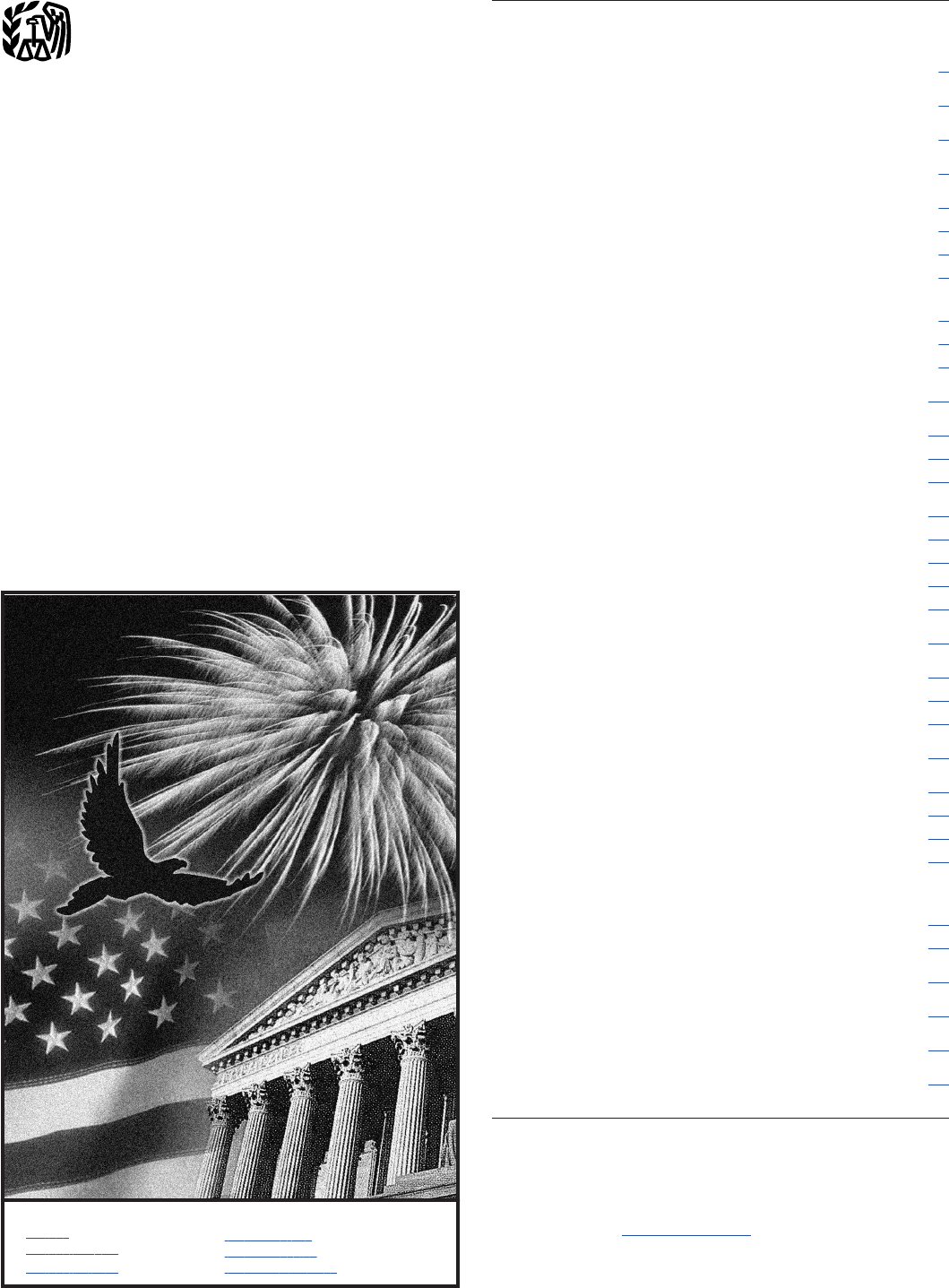
Userid: CPM Schema: tipx Leadpct: 100% Pt. size: 10
Draft Ok to Print
AH XSL/XML
Fileid: … tions/p575/2023/a/xml/cycle03/source (Init. & Date) _______
Page 1 of 52 16:10 - 7-Mar-2024
The type and rule above prints on all proofs including departmental reproduction proofs. MUST be removed before printing.
Department of the Treasury
Internal Revenue Service
Publication 575
Cat. No. 15142B
Pension and
Annuity
Income
For use in preparing
2023 Returns
Get forms and other information faster and easier at:
• IRS.gov (English)
• IRS.gov/Spanish (Español)
•
IRS.gov/Chinese (中文)
•
IRS.gov/Korean (한국어)
• IRS.gov/Russian (Pусский)
• IRS.gov/Vietnamese (Tiếng Việt)
Contents
Future Developments ....................... 1
What’s New ............................... 2
Reminders ............................... 2
Introduction .............................. 2
General Information ........................ 4
Variable Annuities ........................ 5
Section 457 Deferred Compensation Plans ...... 5
Disability Pensions ....................... 6
Insurance Premiums for Retired Public Safety
Officers ............................. 6
Railroad Retirement Benefits ................ 6
Withholding Tax and Estimated Tax ........... 9
Cost (Investment in the Contract) ............ 10
Taxation of Periodic Payments ............... 11
Fully Taxable Payments ................... 12
Partly Taxable Payments .................. 12
Taxation of Nonperiodic Payments ............ 14
Figuring the Taxable Amount ............... 16
Loans Treated as Distributions .............. 18
Transfers of Annuity Contracts .............. 19
Lump-Sum Distributions .................. 20
Rollovers ............................... 28
Special Additional Taxes ................... 33
Tax on Early Distributions ................. 33
Tax on Excess Accumulation ............... 37
Survivors and Beneficiaries ................. 38
Disaster-Related Relief ..................... 39
Qualified Disaster Recovery Distributions ...... 40
Taxation of Qualified Disaster Distributions ..... 41
Repayment of Qualified Disaster Distributions ... 41
Recontribution of Qualified Distributions for
the Purchase or Construction of a Main
Home ............................. 42
Loans From Qualified Plans ................ 42
How To Get Tax Help ....................... 44
Worksheet A. Simplified Method ............. 49
Recapture Allocation Chart ................. 50
Index .................................. 51
Future Developments
For the latest information about developments related to
Pub. 575, such as legislation enacted after it was
published, go to IRS.gov/Pub575.
Mar 7, 2024

Page 2 of 52 Fileid: … tions/p575/2023/a/xml/cycle03/source 16:10 - 7-Mar-2024
The type and rule above prints on all proofs including departmental reproduction proofs. MUST be removed before printing.
What’s New
Distributions to victims of domestic abuse. For tax
years beginning after December 31, 2023, a distribution to
a domestic abuse victim is not subject to the 10% addi-
tional tax on early distributions if the distribution is made
from an applicable eligible retirement plan and made to an
individual during the 1-year period beginning on the date
on which the individual is a victim of domestic abuse by a
spouse or domestic partner.
An eligible distribution to a domestic abuse victim must
not exceed the lesser of $10,000 or 50% of the present
value of the nonforfeitable accrued benefit of the em-
ployee under the plan.
The distribution may be repaid at any time during the
3-year period beginning on the day after the date on which
the distribution was received.
Reminders
The direct payment requirement for certain distribu-
tions for payment of health or long-term care insur-
ance repealed. Distributions from governmental plans to
an eligible retired public safety officer made after Decem-
ber 29, 2022, for health and long-term care insurance can
be excluded from that employee’s gross income.
These distributions are excluded from gross income
whether the premiums are paid directly to the provider of
the accident or health plan or qualified long-term care in-
surance contract by deduction from a distribution from the
eligible retirement plan or if the distributions are made to
the employee.
The amount which may be excluded from gross income
for the tax year can’t exceed the lesser of $3,000 or the
amount paid for the insurance.
Form 8915-F replaces Form 8915-E. Form 8915-F,
Qualified Disaster Retirement Plan Distributions and Re-
payments, replaces Form 8915-E for reporting qualified
2020 disaster distributions and repayments of those distri-
butions made in 2021, 2022, and 2023, as applicable. In
previous years, distributions and repayments would be re-
ported on the applicable Form 8915 for that year's disas-
ters. For example, Form 8915-D, Qualified 2019 Disaster
Retirement Plan Distributions and Repayments, would be
used to report qualified 2019 disaster distributions and re-
payments.
Form 8915-F is a forever form. Beginning in 2021, addi-
tional alphabetical Forms 8915 will not be issued. For
more information, see the Instructions for Form 8915-F.
Photographs of missing children. The IRS is a proud
partner with the National Center for Missing & Exploited
Children® (NCMEC). Photographs of missing children se-
lected by the Center may appear in this publication on pa-
ges that would otherwise be blank. You can help bring
these children home by looking at the photographs and
calling 1-800-THE-LOST (1-800-843-5678) if you recog-
nize a child.
Introduction
This publication discusses the tax treatment of distribu-
tions you receive from pension and annuity plans and also
shows you how to report the income on your federal in-
come tax return. How these distributions are taxed de-
pends on whether they are periodic payments (amounts
received as an annuity) that are paid at regular intervals
over several years or nonperiodic payments (amounts not
received as an annuity).
What is covered in this publication? This publication
contains information that you need to understand the fol-
lowing topics.
•
How to figure the tax-free part of periodic payments
under a pension or annuity plan, including using a
simple worksheet for payments under a qualified plan.
•
How to figure the tax-free part of nonperiodic pay-
ments from qualified and nonqualified plans, and how
to use the optional methods to figure the tax on
lump-sum distributions from pension, stock bonus,
and profit-sharing plans.
•
How to roll over certain distributions from a retirement
plan into another retirement plan or IRA.
•
How to report disability payments, and how beneficia-
ries and survivors of employees and retirees must re-
port benefits paid to them.
•
How to report railroad retirement benefits.
•
When additional taxes on certain distributions may ap-
ply (including the tax on early distributions and the tax
on excess accumulation).
For additional information on how to report pen-
sion or annuity payments on your federal income
tax return, be sure to review the instructions on
the back of Copies B, C, and 2 of the Form 1099-R, Distri-
butions From Pensions, Annuities, Retirement or
Profit-Sharing Plans, IRAs, Insurance Contracts, etc., that
you received and the instructions for Form 1040, lines 5a
and 5b, and the instructions for Form 1040-NR, lines 5a
and 5b.
A “corrected” Form 1099-R replaces the corre-
sponding original Form 1099-R if the original
Form 1099-R contained an error. Make sure you
use the amounts shown on the corrected Form 1099-R
when reporting information on your tax return.
What isn't covered in this publication? The following
topics aren't discussed in this publication.
The General Rule. This is the method generally used
to determine the tax treatment of pension and annuity in-
come from nonqualified plans (including commercial an-
nuities). For a qualified plan, you can’t generally use the
General Rule unless your annuity starting date is before
November 19, 1996. Although this publication will help
you determine whether you can use the General Rule, it
won't help you use it to determine the tax treatment of your
TIP
CAUTION
!
2 Publication 575 (2023)

Page 3 of 52 Fileid: … tions/p575/2023/a/xml/cycle03/source 16:10 - 7-Mar-2024
The type and rule above prints on all proofs including departmental reproduction proofs. MUST be removed before printing.
pension or annuity income. For that and other information
on the General Rule, see Pub. 939, General Rule for Pen-
sions and Annuities.
Individual retirement arrangements (IRAs). Infor-
mation on the tax treatment of amounts you receive from
an IRA is in Pub. 590-B.
Civil service retirement benefits. If you are retired
from the federal government (regular, phased, or disability
retirement) or are the survivor or beneficiary of a federal
employee or retiree who died, see Pub. 721, Tax Guide to
U.S. Civil Service Retirement Benefits. Pub. 721 covers
the tax treatment of federal retirement benefits, primarily
those paid under the Civil Service Retirement System
(CSRS) or the Federal Employees' Retirement System
(FERS). It also covers benefits paid from the Thrift Sav-
ings Plan (TSP).
Social security and equivalent tier 1 railroad retire-
ment benefits. For information about the tax treatment of
these benefits, see Pub. 915, Social Security and Equiva-
lent Railroad Retirement Benefits. However, this publica-
tion (575) covers the tax treatment of the non-social secur-
ity equivalent benefit portion of tier 1 railroad retirement
benefits, tier 2 benefits, vested dual benefits, and supple-
mental annuity benefits paid by the U.S. Railroad Retire-
ment Board.
Tax-sheltered annuity plans (403(b) plans). If you
work for a public school or certain tax-exempt organiza-
tions, you may be eligible to participate in a 403(b) retire-
ment plan offered by your employer. Although this publica-
tion covers the treatment of benefits under 403(b) plans
and discusses in-plan Roth rollovers from 403(b) plans to
designated Roth accounts, it doesn't cover other tax provi-
sions that apply to these plans. For that and other informa-
tion on 403(b) plans, see Pub. 571.
Comments and suggestions. We welcome your com-
ments about this publication and suggestions for future
editions.
You can send us comments through IRS.gov/
FormComments. Or, you can write to the Internal Revenue
Service, Tax Forms and Publications, 1111 Constitution
Ave. NW, IR-6526, Washington, DC 20224.
Although we can’t respond individually to each com-
ment received, we do appreciate your feedback and will
consider your comments and suggestions as we revise
our tax forms, instructions, and publications. Don’t send
tax questions, tax returns, or payments to the above ad-
dress.
Getting answers to your tax questions. If you have
a tax question not answered by this publication or the How
To Get Tax Help section near the end of this publication,
go to the IRS Interactive Tax Assistant page at IRS.gov/
Help/ITA where you can find topics by using the search
feature or viewing the categories listed.
Getting tax forms, instructions, and publications.
Go to IRS.gov/Forms to download current and prior-year
forms, instructions, and publications.
Ordering tax forms, instructions, and publications.
Go to IRS.gov/OrderForms to order current forms, instruc-
tions, and publications; call 800-829-3676 to order
prior-year forms and instructions. The IRS will process
your order for forms and publications as soon as possible.
Don’t resubmit requests you’ve already sent us. You can
get forms and publications faster online.
Useful Items
You may want to see:
Publication
505 Tax Withholding and Estimated Tax
524 Credit for the Elderly or the Disabled
525 Taxable and Nontaxable Income
560 Retirement Plans for Small Business (SEP,
SIMPLE, and Qualified Plans)
571 Tax-Sheltered Annuity Plans (403(b) Plans)
590-A Contributions to Individual Retirement
Arrangements (IRAs)
590-B Distributions from Individual Retirement
Arrangements (IRAs)
721 Tax Guide to U.S. Civil Service Retirement
Benefits
907 Tax Highlights for Persons With Disabilities
915 Social Security and Equivalent Railroad
Retirement Benefits
939 General Rule for Pensions and Annuities
976 Disaster Relief
Form (and Instructions)
W-4P Withholding Certificate for Pension or Annuity
Payments
W-4R Withholding Certificate for Nonperiodic
Payments and Eligible Rollover Distributions
1099-R Distributions From Pensions, Annuities,
Retirement or Profit-Sharing Plans, IRAs,
Insurance Contracts, etc.
4972 Tax on Lump-Sum Distributions
5329 Additional Taxes on Qualified Plans (Including
IRAs) and Other Tax-Favored Accounts
8915-C Qualified 2018 Disaster Retirement Plan
Distributions and Repayments
8915-D Qualified 2019 Disaster Retirement Plan
Distributions and Repayments
8915-F Qualified Disaster Retirement Plan
Distributions and Repayments
See How To Get Tax Help near the end of this publication
for information about getting publications and forms.
505
524
525
560
571
590-A
590-B
721
907
915
939
976
W-4P
W-4R
1099-R
4972
5329
8915-C
8915-D
8915-F
Publication 575 (2023) 3

Page 4 of 52 Fileid: … tions/p575/2023/a/xml/cycle03/source 16:10 - 7-Mar-2024
The type and rule above prints on all proofs including departmental reproduction proofs. MUST be removed before printing.
General Information
Definitions. Some of the terms used in this publication
are defined in the following paragraphs.
Pension. A pension is generally a series of definitely
determinable payments made to you after you retire from
work. Pension payments are made regularly and are
based on such factors as years of service and prior com-
pensation.
Annuity. An annuity is a series of payments under a
contract made at regular intervals over a period of more
than 1 full year. They can be either fixed (under which you
receive a definite amount) or variable (not fixed). You can
buy the contract alone or with the help of your employer.
Qualified employee plan. A qualified employee plan
is an employer's stock bonus, pension, or profit-sharing
plan that is for the exclusive benefit of employees or their
beneficiaries and that meets Internal Revenue Code re-
quirements. It qualifies for special tax benefits, such as tax
deferral for employer contributions and capital gain treat-
ment or the 10-year tax option for lump-sum distributions
(if participants qualify). To determine whether your plan is
a qualified plan, check with your employer or the plan ad-
ministrator.
Qualified employee annuity. A qualified employee
annuity is a retirement annuity purchased by an employer
for an employee under a plan that meets Internal Revenue
Code requirements.
Designated Roth account. A designated Roth ac-
count is a separate account created under a qualified
Roth contribution program to which participants may elect
to have part or all of their elective deferrals to a 401(k),
403(b), or 457(b) plan designated as Roth contributions.
In addition, a designated Roth account may include cer-
tain nonelective contributions or matching contributions
that a participant designates as Roth contributions.
Designated Roth contributions, designated Roth non-
elective contributions, and designated Roth matching con-
tributions are included in your income. However, qualified
distributions (explained later) aren't included in your in-
come.
You should check with your plan administrator to deter-
mine if your plan will accept designated Roth contribu-
tions.
Tax-sheltered annuity plan. A tax-sheltered annuity
plan (often referred to as a “403(b) plan” or a “tax-deferred
annuity plan)” is a retirement plan for employees of public
schools and certain tax-exempt organizations. Generally,
a tax-sheltered annuity plan provides retirement benefits
by purchasing annuity contracts for its participants.
Types of pensions and annuities. Pensions and annui-
ties include the following types.
Fixed-period annuities. You receive definite
amounts at regular intervals for a specified length of time.
Annuities for a single life. You receive definite
amounts at regular intervals for life. The payments end at
death.
Joint and survivor annuities. The first annuitant re-
ceives a definite amount at regular intervals for life. After
they die, a second annuitant receives a definite amount at
regular intervals for life. The amount paid to the second
annuitant may or may not differ from the amount paid to
the first annuitant.
Variable annuities. You receive payments that may
vary in amount for a specified length of time or for life. The
amounts you receive may depend upon such variables as
profits earned by the pension or annuity funds, cost-of-liv-
ing indexes, or earnings from a mutual fund.
Disability pensions. You receive disability payments
because you retired on disability and haven't reached min-
imum retirement age.
More than one program. You may receive employee
plan benefits from more than one program under a single
trust or plan of your employer. If you participate in more
than one program, you may have to treat each as a sepa-
rate pension or annuity contract, depending upon the facts
in each case. Also, you may be considered to have re-
ceived more than one pension or annuity. Your former em-
ployer or the plan administrator should be able to tell you if
you have more than one contract.
Example. Your employer set up a noncontributory
profit-sharing plan for its employees. The plan provides
that the amount held in the account of each participant will
be paid when that participant retires. Your employer also
set up a contributory defined benefit pension plan for its
employees providing for the payment of a lifetime pension
to each participant after retirement.
The amount of any distribution from the profit-sharing
plan depends on the contributions (including allocated for-
feitures) made for the participant and the earnings from
those contributions. Under the pension plan, however, a
formula determines the amount of the pension benefits.
The amount of contributions is the amount necessary to
provide that pension.
Each plan is a separate program and a separate con-
tract. If you get benefits from these plans, you must ac-
count for each separately, even though the benefits from
both may be included in the same check.
Distributions from a designated Roth account are
treated separately from other distributions from
the plan.
Qualified domestic relations order (QDRO). A QDRO
is a judgment, decree, or order relating to payment of child
support, alimony, or marital property rights to a spouse,
former spouse, child, or other dependent of a participant
in a retirement plan. The QDRO must contain certain spe-
cific information, such as the name and last known mailing
address of the participant and each alternate payee, and
the amount or percentage of the participant's benefits to
be paid to each alternate payee. A QDRO may not award
CAUTION
!
4 Publication 575 (2023)

Page 5 of 52 Fileid: … tions/p575/2023/a/xml/cycle03/source 16:10 - 7-Mar-2024
The type and rule above prints on all proofs including departmental reproduction proofs. MUST be removed before printing.
an amount or form of benefit that isn't available under the
plan.
A spouse or former spouse who receives part of the
benefits from a retirement plan under a QDRO reports the
payments received as if they were a plan participant. The
spouse or former spouse is allocated a share of the partic-
ipant's cost (investment in the contract) equal to the cost
times a fraction. The numerator of the fraction is the
present value of the benefits payable to the spouse or for-
mer spouse. The denominator is the present value of all
benefits payable to the participant.
A distribution that is paid to a child or other dependent
under a QDRO is taxed to the plan participant.
Variable Annuities
The tax rules in this publication apply both to annuities
that provide fixed payments and to annuities that provide
payments that vary in amount based on investment results
or other factors. For example, they apply to commercial
variable annuity contracts, whether bought by an em-
ployee retirement plan for its participants or bought di-
rectly from the issuer by an individual investor. Under
these contracts, the owner can generally allocate the pur-
chase payments among several types of investment port-
folios or mutual funds and the contract value is determined
by the performance of those investments. The earnings
aren't taxed until distributed either in a withdrawal or in an-
nuity payments. The taxable part of a distribution is trea-
ted as ordinary income.
For information on the tax treatment of a transfer or ex-
change of a variable annuity contract, see Transfers of An-
nuity Contracts under Taxation of Nonperiodic Payments,
later.
Net Investment Income Tax (NIIT). Annuities under a
nonqualified plan are included in calculating your net in-
vestment income for the NIIT. See Form 8960, Net Invest-
ment Income Tax—Individuals, Estates, and Trusts, and its
instructions for more information.
Withdrawals. If you withdraw funds before your annuity
starting date and your annuity is under a qualified retire-
ment plan, a ratable part of the amount withdrawn is tax
free. The tax-free part is based on the ratio of your cost
(investment in the contract) to your account balance under
the plan.
If your annuity is under a nonqualified plan (including a
contract you bought directly from the issuer), the amount
withdrawn is allocated first to earnings (the taxable part)
and then to your cost (the tax-free part). However, if you
bought your annuity contract before August 14, 1982, a
different allocation applies to the investment before that
date and the earnings on that investment. To the extent
the amount withdrawn doesn't exceed that investment and
earnings, it is allocated first to your cost (the tax-free part)
and then to earnings (the taxable part).
If you withdraw funds (other than as an annuity) on or
after your annuity starting date, the entire amount with-
drawn is generally taxable.
The amount you receive in a full surrender of your an-
nuity contract at any time is tax free to the extent of any
cost that you haven't previously recovered tax free. The
rest is taxable.
For more information on the tax treatment of withdraw-
als, see Taxation of Nonperiodic Payments, later. If you
withdraw funds from your annuity before you reach age
59
1
/2, also see Tax on Early Distributions under Special
Additional Taxes, later.
Annuity payments. If you receive annuity payments un-
der a variable annuity plan or contract, you recover your
cost tax free under either the Simplified Method or the
General Rule, as explained under Taxation of Periodic
Payments, later. For a variable annuity paid under a quali-
fied plan, you must generally use the Simplified Method.
For a variable annuity paid under a nonqualified plan (in-
cluding a contract you bought directly from the issuer), you
must use a special computation under the General Rule.
For more information, see Variable annuities under Com-
putation Under the General Rule in Pub. 939.
Death benefits. If you receive a single-sum distribution
from a variable annuity contract because of the death of
the owner or annuitant, the distribution is generally taxable
only to the extent it is more than the unrecovered cost of
the contract. If you choose to receive an annuity, the pay-
ments are subject to tax as described above. If the con-
tract provides a joint and survivor annuity and the primary
annuitant had received annuity payments before death,
you figure the tax-free part of annuity payments you re-
ceive as the survivor in the same way the primary annui-
tant did. See Survivors and Beneficiaries, later.
Section 457 Deferred Compensation
Plans
If you work for a state or local government or for a tax-ex-
empt organization, you may be able to participate in a sec-
tion 457 deferred compensation plan. If your plan is an eli-
gible plan, you aren't taxed currently on pay that is
deferred under the plan or on any earnings from the plan's
investment of the deferred pay. You are generally taxed on
amounts deferred in an eligible state or local government
plan only when they are distributed from the plan. You are
taxed on amounts deferred in an eligible tax-exempt or-
ganization plan when they are distributed or otherwise
made available to you.
Your 457(b) plan may have a designated Roth account
option. If so, you may be able to roll over amounts to the
designated Roth account or make contributions. Contribu-
tions to a designated Roth account are included in your in-
come. Qualified distributions (explained later) aren't inclu-
ded in your income. See Designated Roth accounts under
Taxation of Periodic Payments, later.
This publication covers the tax treatment of benefits un-
der eligible section 457 plans, but it doesn't cover the
treatment of deferrals. For information on deferrals under
section 457 plans, see Retirement Plan Contributions un-
der Employee Compensation in Pub. 525.
Publication 575 (2023) 5

Page 6 of 52 Fileid: … tions/p575/2023/a/xml/cycle03/source 16:10 - 7-Mar-2024
The type and rule above prints on all proofs including departmental reproduction proofs. MUST be removed before printing.
Is your plan eligible? To find out if your plan is an eligi-
ble plan, check with your employer. Plans that aren’t eligi-
ble section 457 plans include the following.
•
Bona fide vacation leave, sick leave, compensatory
time, severance pay, disability pay, or death benefit
plans.
•
Nonelective deferred compensation plans for nonem-
ployees (independent contractors).
•
Deferred compensation plans maintained by
churches.
•
Length of service award plans for bona fide volunteer
firefighters and emergency medical personnel. An ex-
ception applies if the total amount paid to a volunteer
exceeds $7,000 for any year of service.
Disability Pensions
If you retired on disability, you must generally include in in-
come any disability pension you receive under a plan that
is paid for by your employer. You must report your taxable
disability payments as wages on Form 1040, 1040-SR, or
1040-NR, line 1h, until you reach minimum retirement age.
Minimum retirement age is generally the age at which you
can first receive a pension or annuity if you aren't disa-
bled.
You may be entitled to a tax credit if you were per-
manently and totally disabled when you retired.
For information on this credit, see Pub. 524.
Beginning on the day after you reach minimum retire-
ment age, payments you receive are taxable as a pension
or annuity. When you receive pension or annuity pay-
ments, you are able to recover your cost or investment.
Your cost is generally your net investment in the plan as of
your annuity starting date. It doesn't include pre-tax contri-
butions. For more information, see Cost (Investment in the
Contract) and Taxation of Periodic Payments, later.
Report the payments on Form 1040, 1040-SR, or
1040-NR, lines 5a and 5b.
Disability payments for injuries incurred as a di-
rect result of a terrorist attack directed against the
United States (or its allies) aren't included in in-
come. For more information about payments to survivors
of terrorist attacks, see Pub. 3920, Tax Relief for Victims of
Terrorist Attacks, and Pub. 907.
Military and government disability pensions. Certain
military and government disability pensions aren’t taxable.
Service-connected disability. You may be able to ex-
clude from income amounts you receive as a pension, an-
nuity, or similar allowance for personal injury or sickness
resulting from active service in one of the following gov-
ernment services.
•
The armed forces of any country.
•
The National Oceanic and Atmospheric Administra-
tion.
•
The Public Health Service.
TIP
TIP
•
The Foreign Service.
Insurance Premiums for Retired
Public Safety Officers
If you are an eligible retired public safety officer (law en-
forcement officer, firefighter, chaplain, or member of a res-
cue squad or ambulance crew who is retired because of
disability or because you reached normal retirement age),
you can elect to exclude from income distributions made
from your eligible retirement plan that are used to pay the
premiums for coverage by an accident or health plan or a
long-term care insurance contract. The premiums can be
for coverage for you, your spouse, or dependents.
The distribution must be from the plan maintained by
the employer from which you retired as a public safety offi-
cer. The distribution can be made directly from the plan to
the provider of the accident or health plan or long-term
care insurance contract, or the distribution can be made to
you to pay to the provider of the accident or health plan or
long-term care insurance contract.
You can exclude from income the smaller of the amount
of the insurance premiums or $3,000. You can make this
election only for amounts that would otherwise be inclu-
ded in your income. The amount excluded from your in-
come can't be used to claim a medical expense deduc-
tion.
An eligible retirement plan is a governmental plan that
is a:
•
Qualified trust,
•
Section 403(a) plan,
•
Section 403(b) annuity, or
•
Section 457(b) plan.
If you make this election, reduce the otherwise taxable
amount of your pension or annuity by the amount exclu-
ded. The amount shown in box 2a of Form 1099-R doesn't
reflect this exclusion. Report your total distributions on
Form 1040, 1040-SR, or 1040-NR, line 5a. Report the tax-
able amount on Form 1040, 1040-SR, or 1040-NR,
line 5b. Enter “PSO” next to the appropriate line on which
you report the taxable amount.
If you are retired on disability and reporting your disabil-
ity pension on Form 1040, 1040-SR, or 1040-NR, line 1h,
include only the taxable amount on that line and enter
“PSO” and the amount excluded on the dotted line next to
the applicable line.
Railroad Retirement Benefits
Benefits paid under the Railroad Retirement Act fall into
two categories. These categories are treated differently for
income tax purposes.
The first category is the amount of tier 1 railroad retire-
ment benefits that equals the social security benefit that a
railroad employee or beneficiary would have been entitled
to receive under the social security system. This part of
6 Publication 575 (2023)

Page 7 of 52 Fileid: … tions/p575/2023/a/xml/cycle03/source 16:10 - 7-Mar-2024
The type and rule above prints on all proofs including departmental reproduction proofs. MUST be removed before printing.
the tier 1 benefit is the social security equivalent benefit
(SSEB) and you treat it for tax purposes as social security
benefits. If you received, repaid, or had tax withheld from
the SSEB portion of tier 1 benefits during 2023, you will re-
ceive Form RRB-1099, Payments by the Railroad Retire-
ment Board (or Form RRB-1042S, Statement for Nonresi-
dent Alien Recipients of Payments by the Railroad
Retirement Board, if you are a nonresident alien) from the
U.S. Railroad Retirement Board (RRB).
For more information about the tax treatment of the
SSEB portion of tier 1 benefits and Forms RRB-1099 and
RRB-1042S, see Pub. 915.
The second category contains the rest of the tier 1 rail-
road retirement benefits called the non-social security
equivalent benefit (NSSEB). It also contains any tier 2
benefit, vested dual benefit (VDB), and supplemental an-
nuity benefit. Treat this category of benefits, shown on
Form RRB-1099-R, as an amount received from a quali-
fied employee plan. This allows for the tax-free (nontaxa-
ble) recovery of employee contributions from the tier 2
benefits and the NSSEB part of the tier 1 benefits. (The
NSSEB and tier 2 benefits, less certain repayments, are
combined into one amount called the Contributory
Amount Paid on Form RRB-1099-R.) VDBs and supple-
mental annuity benefits are non-contributory pensions and
are fully taxable. See Taxation of Periodic Payments, later,
for information on how to report your benefits and how to
recover the employee contributions tax free. Form
RRB-1099-R is used for U.S. citizens, resident aliens, and
nonresident aliens.
Nonresident aliens. A nonresident alien is an individual
who isn't a citizen or a resident alien of the United States.
If you are a nonresident alien, you are subject to U.S. tax
on your SSEB portion of tier 1 benefits at a 30% rate, un-
less exempt or subject to a lower treaty rate. See Pub.
519, U.S. Tax Guide for Aliens, for more information.
If your rate of tax changed or your country of legal resi-
dence changed during the tax year, you may receive more
than one Form RRB-1042S or RRB-1099-R. To determine
your total benefits paid or repaid and total tax withheld for
the year, you should add the amounts shown on all forms
you received for that year.
Tax withholding. To request or change your income tax
withholding from SSEB payments, U.S. citizens should
contact the IRS for Form W-4V, Voluntary Withholding Re-
quest, and file it with the RRB. To elect, revoke, or change
your income tax withholding from NSSEB, tier 2, VDB, and
supplemental annuity payments received, use Form RRB
W-4P, Withholding Certificate for Railroad Retirement Pay-
ments. If you are a nonresident alien or a U.S. citizen living
abroad, you should provide Form RRB-1001, Nonresident
Questionnaire, to the RRB to furnish citizenship and resi-
dency information and to claim any treaty exemption from
U.S. tax withholding. Nonresident U.S. citizens can't elect
to be exempt from withholding on payments delivered out-
side the United States.
Help from the RRB. To request an RRB form or to get
help with questions about an RRB benefit, you should
contact your nearest RRB field office if you reside in the
United States (call 877-772-5772 for the nearest field of-
fice) or U.S. Consulate/Embassy if you reside outside the
United States. You can visit the RRB on the Internet at
RRB.gov.
Form RRB-1099-R. The following discussion explains
the items shown on Form RRB-1099-R. The amounts
shown on this form are before any deduction for:
•
Federal income tax withholding;
•
Medicare premiums;
•
Legal process garnishment payments;
•
Recovery of a prior-year overpayment of an NSSEB,
tier 2 benefit, VDB, or supplemental annuity benefit; or
•
Recovery of Railroad Unemployment Insurance Act
benefits received while awaiting payment of your rail-
road retirement annuity.
The amounts shown on this form are after any offset
for:
•
Social security benefits;
•
Age reduction;
•
Public service pensions or public disability benefits;
•
Dual railroad retirement entitlement under another
RRB claim number;
•
Work deductions;
•
Legal process partition deductions;
•
Actuarial adjustment;
•
Annuity waiver; or
•
Recovery of a current-year overpayment of NSSEB,
tier 2 benefits, VDB, or supplemental annuity benefits.
The amounts shown on Form RRB-1099-R don't reflect
any special rules, such as capital gain treatment or the
special 10-year tax option for lump-sum payments, or
tax-free rollovers. To determine if any of these rules apply
to your benefits, see the discussions about them later.
Generally, amounts shown on your Form RRB-1099-R
are considered a normal distribution. Use distribution
code “7” if you are asked for a distribution code. Distribu-
tion codes aren't shown on Form RRB-1099-R.
There are three copies of this form. Copy B is to be in-
cluded with your income tax return if federal income tax is
withheld. Copy C is for your own records. Copy 2 is filed
with your state, city, or local income tax return when re-
quired. See the illustrated Copy B (Form RRB-1099-R),
later.
Each beneficiary will receive their own Form
RRB-1099-R. If you receive benefits on more than
one railroad retirement record, you may get more
than one Form RRB-1099-R. So that you get your form
timely, make sure the RRB always has your current mailing
address.
Box 1—Claim Number and Payee Code. Your claim
number is a six- or nine-digit number preceded by an
TIP
Publication 575 (2023) 7
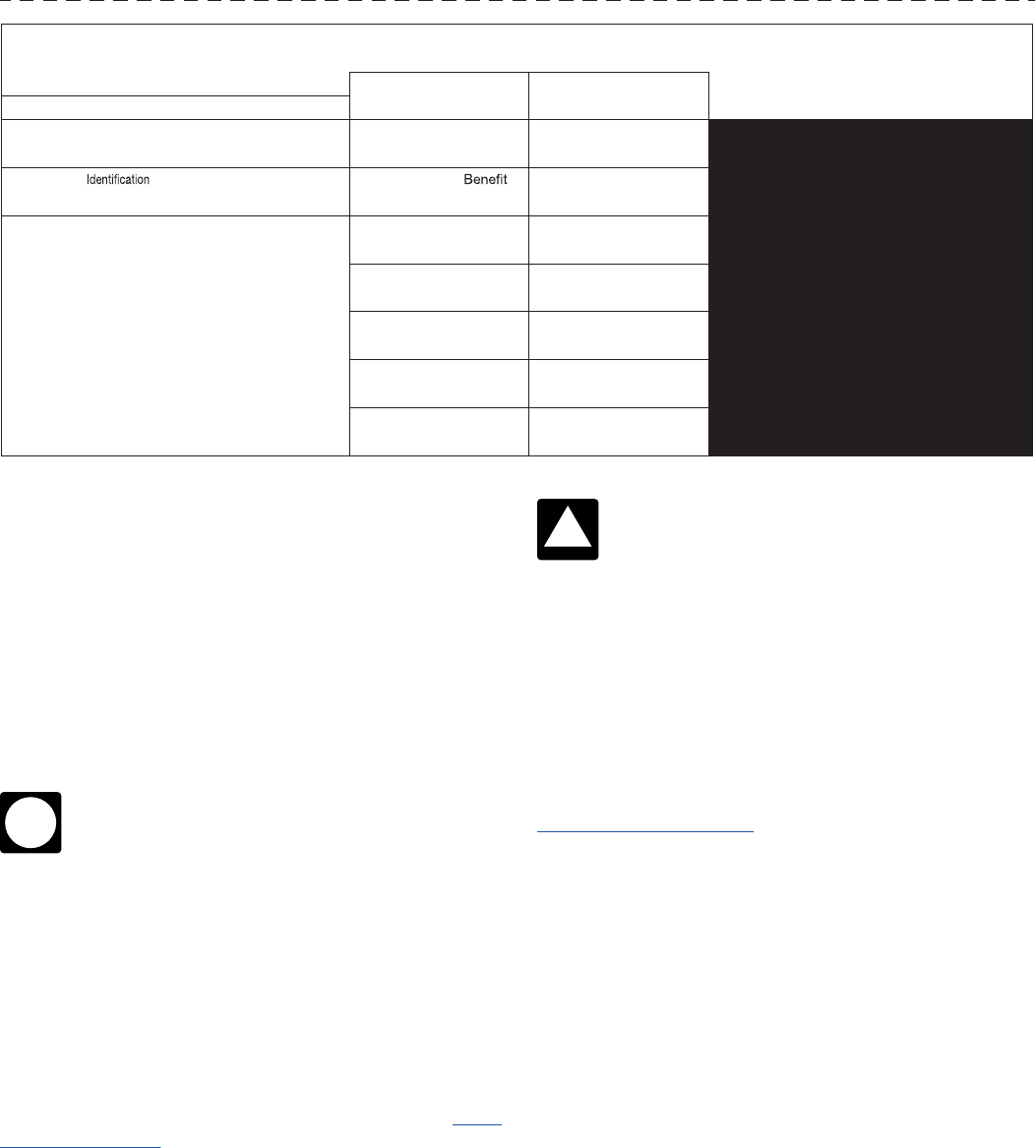
Page 8 of 52 Fileid: … tions/p575/2023/a/xml/cycle03/source 16:10 - 7-Mar-2024
The type and rule above prints on all proofs including departmental reproduction proofs. MUST be removed before printing.
alphabetical prefix. This is the number under which the
RRB paid your benefits. Your payee code follows your
claim number and is the last number in this box. It is used
by the RRB to identify you under your claim number. In all
your correspondence with the RRB, be sure to use the
claim number and payee code shown in this box.
Box 2—Recipient's Identification Number. This is
the recipient's U.S. taxpayer identification number (TIN). It
is the social security number (SSN), individual taxpayer
identification number (ITIN), or employer identification
number (EIN), if known, for the person or estate listed as
the recipient.
If you are a resident or nonresident alien who
must furnish a TIN to the IRS and aren’t eligible to
obtain an SSN, use Form W-7, Application for IRS
Individual Taxpayer Identification Number, to apply for an
ITIN. The Instructions for Form W-7 explain how and when
to apply.
Box 3—Employee Contributions. This is the amount
of taxes withheld from the railroad employee's earnings
that exceeds the amount of taxes that would have been
withheld had the earnings been covered under the social
security system. This amount is the employee's cost that
you use to figure the tax-free part of the NSSEB and tier 2
benefit you received (the amount shown in box 4). (For in-
formation on how to figure the tax-free part, see Partly
Taxable Payments under Taxation of Periodic Payments,
later.) The amount shown is the total employee contribu-
tion amount, not reduced by any amounts that the RRB
calculated as previously recovered. It is the latest amount
reported for 2023 and may have increased or decreased
from a previous Form RRB-1099-R. If this amount has
changed, the change is retroactive. You may need to refig-
ure the tax-free part of your NSSEB/tier 2 benefit for 2023
and prior tax years. If this box is blank, it means that the
amount of your NSSEB and tier 2 payments shown in
box 4 is fully taxable.
TIP
If you had a previous annuity entitlement that
ended and you are figuring the tax-free part of
your NSSEB/tier 2 benefit for your current annuity
entitlement, you should contact the RRB for confirmation
of your correct employee contribution amount.
Box 4—Contributory Amount Paid. This is the gross
amount of the NSSEB and tier 2 benefit you received in
2023, less any 2023 benefits you repaid in 2023. (Any
benefits you repaid in 2023 for an earlier year or for an un-
known year are shown in box 8.) This amount is the total
contributory pension paid in 2023. It may be partly taxable
and partly tax free or fully taxable. If you determine you are
eligible to compute a tax-free part, as explained later in
Partly Taxable Payments under Taxation of Periodic Pay-
ments, use the latest reported employee contribution
amount shown in box 3 as the cost.
Box 5—Vested Dual Benefit. This is the gross
amount of VDB payments paid in 2023, less any 2023
VDB payments you repaid in 2023. It is fully taxable. VDB
payments you repaid in 2023 for an earlier year or for an
unknown year are shown in box 8.
Note. The amounts shown in boxes 4 and 5 may repre-
sent payments for 2023 and/or other years after 1983.
Box 6—Supplemental Annuity. This is the gross
amount of supplemental annuity benefits paid in 2023,
less any 2023 supplemental annuity benefits you repaid in
2022. It is fully taxable. Supplemental annuity benefits you
repaid in 2023 for an earlier year or for an unknown year
are shown in box 8.
Box 7—Total Gross Paid. This is the sum of boxes 4,
5, and 6. The amount represents the total pension paid in
2023. Include this amount on Form 1040, 1040-SR, or
1040-NR, line 5a.
Box 8—Repayments. This amount represents any
NSSEB, tier 2 benefit, VDB, and supplemental annuity
CAUTION
!
PAYER’S NAME, STREET ADDRESS, CITY, STATE, AND ZIP CODE
UNITED STATES RAILROAD RETIREMENT BOARD
844 N RUSH ST CHICAGO IL 60611-1275
ANNUITIES OR PENSIONS BY THE
RAILROAD RETIREMENT BOARD
PAYER’S FEDERAL IDENTIFYING NO. 36-3314600
FORM RRB-1099-R
COPY B -
REPORT THIS INCOME ON
YOUR FEDERAL TAX
RETURN. IF THIS FORM
SHOWS FEDERAL INCOME
TAX WITHHELD IN BOX 9,
ATTACH THIS COPY TO
YOUR RETURN.
THIS INFORMATION IS BEING
FURNISHED TO THE INTERNAL
REVENUE SERVICE.
1.
2.
Claim Number and Payee Code
Recipient’s
Number
Recipient’s Name, Street Address, City, State, and Zip Code
3.
4.
5.
6.
7.
8.
9.
10.
Employee Contributions
Contributory Amount Paid
Vested Dual
Supplemental Annuity
Total Gross Paid
(Sum of boxes 4, 5, and 6)
Repayments
Federal Income Tax
Withheld
Medicare Premium Total
2023
8 Publication 575 (2023)

Page 9 of 52 Fileid: … tions/p575/2023/a/xml/cycle03/source 16:10 - 7-Mar-2024
The type and rule above prints on all proofs including departmental reproduction proofs. MUST be removed before printing.
benefit you repaid to the RRB in 2023 for years before
2023 or for unknown years. The amount shown in this box
hasn't been deducted from the amounts shown in boxes 4,
5, and 6. It only includes repayments of benefits that were
taxable to you. This means it only includes repayments in
2023 of NSSEB paid after 1985, tier 2 benefits and VDB
paid after 1983, and supplemental annuity benefits paid in
any year. If you included the benefits in your income in the
year you received them, you may be able to deduct the re-
paid amount. For more information about repayments, see
Repayment of benefits received in an earlier year, later.
You may have repaid an overpayment of benefits
by returning a payment, by making a payment, or
by having an amount withheld from your railroad
retirement annuity payment.
Box 9—Federal Income Tax Withheld. This is the to-
tal federal income tax withheld from your NSSEB, tier 2
benefit, VDB, and supplemental annuity benefit. Include
this on your income tax return as tax withheld. If you are a
nonresident alien and your tax withholding rate and/or
country of legal residence changed during 2023, you will
receive more than one Form RRB-1099-R for 2023. Deter-
mine the total amount of U.S. federal income tax withheld
from your 2023 RRB NSSEB, tier 2, VDB, and supplemen-
tal annuity payments by adding the amounts in box 9 of all
original 2023 Forms RRB-1099-R, or the latest corrected
or duplicate Forms RRB-1099-R you receive.
Box 10—Rate of Tax. If you are a nonresident alien,
an entry in this box indicates the rate at which tax was
withheld on the NSSEB, tier 2, VDB, and supplemental
annuity payments that were paid to you in 2023. If you are
a nonresident alien whose tax was withheld at more than
one rate during 2023, you will receive a separate Form
RRB-1099-R for each rate change during 2023. If you are
taxed as a U.S. citizen or resident alien, this box doesn't
apply to you.
Box 11—Country. If you are a nonresident alien, an
entry in this box indicates the country of which you were a
resident for tax purposes at the time you received railroad
retirement payments in 2023. If you are a nonresident
alien who was a resident of more than one country during
2023, you will receive a separate Form RRB-1099-R for
each country of residence during 2023. If you are taxed as
a U.S. citizen or resident alien, this box doesn't apply to
you.
Box 12—Medicare Premium Total. This is for infor-
mation purposes only. The amount shown in this box rep-
resents the total amount of Medicare Part B premiums de-
ducted from your railroad retirement annuity payments in
2023. Medicare premium refunds aren't included in the
Medicare total. The Medicare total is normally shown on
Form RRB-1099 (if you are a citizen or resident alien of
the United States) or Form RRB-1042S (if you are a non-
resident alien). However, if Form RRB-1099 or Form
RRB-1042S isn't required for 2023, then this total will be
shown on Form RRB-1099-R. If your Medicare premiums
were deducted from your social security benefits, paid by
a third party, refunded to you, and/or you paid the
TIP
premiums by direct billing, your Medicare total won't be
shown in this box.
Repayment of benefits received in an earlier year. If
you had to repay any railroad retirement benefits that you
had included in your income in an earlier year because at
that time you thought you had an unrestricted right to it,
you can deduct the amount you repaid in the year in which
you repaid it.
However, if you repaid $3,000, or less, for tax years
2018 through 2025, miscellaneous itemized deductions
subject to the 2%-of-adjusted-gross-income limit are sus-
pended and therefore not deductible on Schedule A (Form
1040).
If you repaid more than $3,000 in 2023, you can either
take a deduction for the amount repaid on Schedule A
(Form 1040), line 16, or you can take a credit against your
tax. For more information, see Repayments in Pub. 525.
Withholding Tax and Estimated Tax
Your retirement plan distributions are subject to federal in-
come tax withholding. However, you can choose not to
have tax withheld on payments you receive unless they
are eligible rollover distributions. (These are distributions,
described later under Rollovers, that are eligible for roll-
over treatment but aren't paid directly to another qualified
retirement plan or to a traditional IRA.) If you choose not to
have tax withheld or if you don't have enough tax withheld,
you may have to make estimated tax payments. See Esti-
mated tax, later.
The withholding rules apply to the taxable part of pay-
ments you receive from:
•
An employer pension, annuity, profit-sharing, or stock
bonus plan;
•
Any other deferred compensation plan;
•
A traditional IRA; or
•
A commercial annuity.
For this purpose, a commercial annuity means an annuity,
endowment, or life insurance contract issued by an insur-
ance company.
There will be no withholding on any part of a distri-
bution where it is reasonable to believe that it
won't be includible in gross income.
Choosing no withholding. You can choose not to have
income tax withheld from retirement plan payments unless
they are eligible rollover distributions. You can make this
choice on Form W-4P for periodic payments or Form
W-4R for nonperiodic payments. This choice generally re-
mains in effect until you revoke it.
The payer will ignore your choice not to have tax with-
held if:
•
You don't give the payer your SSN (in the required
manner); or
•
The IRS notifies the payer, before the payment is
made, that you gave an incorrect SSN.
TIP
Publication 575 (2023) 9

Page 10 of 52 Fileid: … tions/p575/2023/a/xml/cycle03/source 16:10 - 7-Mar-2024
The type and rule above prints on all proofs including departmental reproduction proofs. MUST be removed before printing.
To choose not to have tax withheld, a U.S. citizen or
resident alien must give the payer a home address in the
United States or its territories. Without that address, the
payer must withhold tax. For example, the payer has to
withhold tax if the recipient has provided a U.S. address
for a nominee, trustee, or agent to whom the benefits are
delivered, but hasn't provided their own U.S. home ad-
dress.
If you don't give the payer a home address in the United
States or its territories, you can choose not to have tax
withheld only if you certify to the payer that you aren't a
U.S. citizen, a U.S. resident alien, or someone who is sub-
ject to section 877 because you expatriated before June
17, 2008. See Form 8854 and its instructions for details
about section 877. But, if you so certify, you may be sub-
ject to the 30% flat rate withholding that applies to nonres-
ident aliens. This 30% rate won't apply if you are exempt
or subject to a reduced rate by treaty. For details, see Pub.
519.
Periodic payments. Unless you choose no withholding,
your annuity or similar periodic payments (other than eligi-
ble rollover distributions) will be treated as wages for with-
holding purposes. Periodic payments are amounts paid at
regular intervals (such as weekly, monthly, or yearly) for a
period of time greater than 1 year (such as for 15 years or
for life). You should give the payer a completed withhold-
ing certificate (Form W-4P or a similar form provided by
the payer). If you don't, tax will be withheld as if you were
single with no adjustments made in Steps 2 through 4 on
Form W-4P.
Tax will be withheld as if you were single with no adjust-
ments made in Steps 2 through 4 on Form W-4P if:
•
You don't give the payer your SSN (in the required
manner), or
•
The IRS notifies the payer (before any payment is
made) that you gave an incorrect SSN.
You must file a new withholding certificate to change
the amount of withholding. See the instructions for Form
W-P and Periodic Payments in Pub. 505 for more informa-
tion.
Nonperiodic distributions. Unless you choose no with-
holding, the withholding rate for a nonperiodic distribution
(a payment other than a periodic payment) that isn't an eli-
gible rollover distribution is 10% of the distribution. You
can also ask the payer to withhold an additional amount
using Form W-4R. The part of any loan treated as a distri-
bution (except an offset amount to repay the loan), ex-
plained later, is subject to withholding under this rule.
Eligible rollover distribution. If you receive an eligible
rollover distribution, 20% of it will generally be withheld for
income tax. You can't choose not to have tax withheld
from an eligible rollover distribution. However, tax won't be
withheld if you have the plan administrator pay the eligible
rollover distribution directly to another qualified plan or an
IRA in a direct rollover. For more information about eligible
rollover distributions, see Rollovers, later.
Estimated tax. Your estimated tax is the total of your ex-
pected income tax, self-employment tax, and certain other
taxes for the year, minus your expected credits and with-
held tax. Generally, you must make estimated tax pay-
ments for 2024 if you expect to owe at least $1,000 in tax
(after subtracting your withholding and credits) and you
expect your withholding and credits to be less than the
smaller of:
1. 90% of the tax to be shown on your 2024 return, or
2. 100% of the tax shown on your 2023 return.
If your adjusted gross income for 2023 was more than
$150,000 ($75,000 if your filing status for 2024 is married
filing separately), substitute 110% for 100% in (2) above.
For more information, see Pub. 505.
In figuring your withholding or estimated tax, re-
member that a part of your monthly social security
or equivalent tier 1 railroad retirement benefits
may be taxable. See Pub. 915. You can choose to have in-
come tax withheld from those benefits. Use Form W-4V to
make this choice.
Cost (Investment in the
Contract)
Distributions from your pension or annuity plan may in-
clude amounts treated as a recovery of your cost (invest-
ment in the contract). If any part of a distribution is treated
as a recovery of your cost under the rules explained in this
publication, that part is tax free. Therefore, the first step in
figuring how much of a distribution is taxable is to deter-
mine the cost of your pension or annuity.
In general, your cost is your net investment in the con-
tract as of the annuity starting date (or the date of the dis-
tribution if earlier). To find this amount, you must first figure
the total premiums, contributions, or other amounts you
paid. This includes the amounts your employer contrib-
uted that were taxable to you when paid. However, see
Foreign employment contributions, later. It doesn't include
amounts withheld from your pay on a tax-deferred basis
(money that was taken out of your gross pay before taxes
were deducted). It also doesn't include amounts you con-
tributed for health and accident benefits (including any ad-
ditional premiums paid for double indemnity or disability
benefits).
From this total cost you must subtract the following
amounts.
1. Any refunded premiums, rebates, dividends, or unre-
paid loans that weren't included in your income and
that you received by the later of the annuity starting
date or the date on which you received your first pay-
ment.
2. Any other tax-free amounts you received under the
contract or plan by the later of the dates in (1).
TIP
10 Publication 575 (2023)

Page 11 of 52 Fileid: … tions/p575/2023/a/xml/cycle03/source 16:10 - 7-Mar-2024
The type and rule above prints on all proofs including departmental reproduction proofs. MUST be removed before printing.
3. If you must use the Simplified Method for your annuity
payments, the tax-free part of any single-sum pay-
ment received in connection with the start of the annu-
ity payments, regardless of when you received it. (See
Simplified Method, later, for information on its required
use.)
4. If you use the General Rule for your annuity payments,
the value of the refund feature in your annuity con-
tract. (See General Rule, later, for information on its
use.) Your annuity contract has a refund feature if the
annuity payments are for your life (or the lives of you
and your survivor) and payments in the nature of a re-
fund of the annuity's cost will be made to your benefi-
ciary or estate if all annuitants die before a stated
amount or a stated number of payments are made.
For more information, see Pub. 939.
The tax treatment of the items described in (1) through (3)
is discussed later under Taxation of Nonperiodic Pay-
ments.
Form 1099-R. If you began receiving periodic
payments of a life annuity in 2023, the payer
should show your total contributions to the plan in
box 9b of your 2023 Form 1099-R.
Annuity starting date defined. Your annuity starting
date is the later of the first day of the first period for which
you received a payment or the date the plan's obligations
became fixed.
Example. On January 1, you completed all your pay-
ments required under an annuity contract providing for
monthly payments starting on August 1 for the period be-
ginning July 1. The annuity starting date is July 1. This is
the date you use in figuring the cost of the contract and
selecting the appropriate number from Table 1 for line 3 of
the Simplified Method Worksheet.
Designated Roth accounts. Your cost in these accounts
is your designated Roth contributions that were included
in your income as wages subject to applicable withholding
requirements. Your cost will also include any in-plan Roth
rollovers, designated Roth nonelective contributions, or
designated Roth matching contributions you included in
income.
Foreign employment contributions. If you worked
abroad, your cost may include contributions by your em-
ployer to the retirement plan, but only if those contribu-
tions would be excludable from your gross income had
they been paid directly to you as compensation. The con-
tributions that apply are:
1. Contributions before 1963 by your employer,
2. Contributions after 1962 by your employer if the con-
tributions would be excludable from your gross in-
come (not including the foreign earned income exclu-
sion) had they been paid directly to you, or
3. Contributions after 1996 by your employer if you per-
formed the services of a foreign missionary (a duly or-
dained, commissioned, or licensed minister of a
TIP
church or a lay person) but only if the contributions
would be excludable from your gross income had they
been paid directly to you.
Foreign employment contributions while a nonres-
ident alien. In determining your cost, special rules apply
if you are a U.S. citizen or resident alien who received dis-
tributions in 2023 from a plan to which contributions were
made while you were a nonresident alien. Your contribu-
tions and your employer's contributions aren't included in
your cost if the contribution:
•
Was made based on compensation which was for
services performed outside the United States while
you were a nonresident alien; and
•
Wasn't subject to income tax under the laws of the
United States or any foreign country, but only if the
contribution would have been subject to income tax if
paid as cash compensation when the services were
performed.
Taxation of Periodic Payments
This section explains how the periodic payments you re-
ceive from a pension or annuity plan are taxed. Periodic
payments are amounts paid at regular intervals (such as
weekly, monthly, or yearly) for a period of time greater than
1 year (such as for 15 years or for life). These payments
are also known as amounts received as an annuity. If you
receive an amount from your plan that isn't a periodic pay-
ment, see Taxation of Nonperiodic Payments, later.
In general, you can recover the cost of your pension or
annuity tax free over the period you are to receive the pay-
ments. The amount of each payment that is more than the
part that represents your cost is taxable. However, see In-
surance Premiums for Retired Public Safety Officers, ear-
lier.
Designated Roth accounts. If you receive a qualified
distribution from a designated Roth account, the distribu-
tion isn't included in your gross income. This applies to
both your cost in the account and income earned on that
account. A qualified distribution is generally a distribu-
tion that is:
•
Made after a 5-tax-year period of participation; and
•
Made on or after the date you reach age 59
1
/2, made
to a beneficiary or your estate on or after your death,
or attributable to your being disabled.
If the distribution isn't a qualified distribution, the rules
discussed in this section apply. The designated Roth ac-
count is treated as a separate contract.
Period of participation. The 5-tax-year period of par-
ticipation is the 5-tax-year period beginning with the first
tax year for which a contribution was made to the partici-
pant's designated Roth account in the plan. Therefore, if a
contribution is first made to a participant's designated
Roth account in the plan for 2023, the first year for which a
qualified distribution can be made is 2028.
Publication 575 (2023) 11

Page 12 of 52 Fileid: … tions/p575/2023/a/xml/cycle03/source 16:10 - 7-Mar-2024
The type and rule above prints on all proofs including departmental reproduction proofs. MUST be removed before printing.
However, if a direct rollover is made to the plan from a
designated Roth account under another plan, the
5-tax-year period for the recipient plan begins with the first
tax year for which a contribution was made to the partici-
pant's designated Roth account in the other plan (if ear-
lier).
Your 401(k), 403(b), or 457(b) plan may permit you to
roll over amounts from those plans to a designated Roth
account within the same plan. This is known as an in-plan
Roth rollover. If an in-plan Roth rollover is the first contribu-
tion made to your designated Roth account, the 5-tax-year
period of participation begins on the first day of the first
tax year in which you make the in-plan Roth rollover.
For more details, see In-plan Roth rollovers, later.
Fully Taxable Payments
The pension or annuity payments that you receive are fully
taxable if you have no cost in the contract because any of
the following situations apply to you. However, see Insur-
ance Premiums for Retired Public Safety Officers, earlier.
•
You didn't pay anything or aren't considered to have
paid anything for your pension or annuity. Amounts
withheld from your pay on a tax-deferred basis aren't
considered part of the cost of the pension or annuity
payment.
•
Your employer didn't withhold contributions from your
salary.
•
You got back all of your contributions tax free in prior
years. However, see Exclusion not limited to cost un-
der Partly Taxable Payments, later.
Report the total amount you received on Form 1040,
1040-SR, or 1040-NR, line 5b. You should make no entry
on Form 1040, 1040-SR, or 1040-NR, line 5a.
Deductible voluntary employee contributions. Distri-
butions you receive that are based on your accumulated
deductible voluntary employee contributions are generally
fully taxable in the year distributed to you. Accumulated
deductible voluntary employee contributions include net
earnings on the contributions. If distributed as part of a
lump sum, they don't qualify for the 10-year tax option or
capital gain treatment, explained later.
Partly Taxable Payments
If you have a cost to recover from your pension or annuity
plan (see Cost (Investment in the Contract), earlier), you
can exclude part of each annuity payment from income as
a recovery of your cost. This tax-free part of the payment
is figured when your annuity starts and remains the same
each year even if the amount of the payment changes.
The rest of each payment is taxable. However, see Insur-
ance Premiums for Retired Public Safety Officers, earlier.
You figure the tax-free part of the payment using one of
the following methods.
•
Simplified Method. You must generally use this
method if your annuity is paid under a qualified plan (a
qualified employee plan, a qualified employee annuity,
or a tax-sheltered annuity plan or contract). You can't
use this method if your annuity is paid under a non-
qualified plan.
•
General Rule. You must use this method if your annu-
ity is paid under a nonqualified plan. Generally, you
can't use this method if your annuity is paid under a
qualified plan. However, see Qualified plan annuity
starting before November 19, 1996, later, for excep-
tions to this rule.
You determine which method to use when you first begin
receiving your annuity, and you continue using it each year
that you recover part of your cost.
If you had more than one partly taxable pension or an-
nuity, figure the tax-free part and the taxable part of each
separately.
Qualified plan annuity starting before November 19,
1996. If your annuity is paid under a qualified plan and
your annuity starting date (defined earlier under Cost (In-
vestment in the Contract)) is after July 1, 1986, and before
November 19, 1996, you could have chosen to use either
the Simplified Method or the General Rule. If your annuity
starting date is before July 2, 1986, you use the General
Rule unless your annuity qualified for the 3-year Rule. If
you used the 3-year Rule (which was repealed for annui-
ties starting after July 1, 1986), your annuity payments are
generally now fully taxable.
Exclusion limit. Your annuity starting date determines
the total amount of annuity payments that you can exclude
from income over the years. Once your annuity starting
date is determined, it doesn't change. If you calculate the
taxable portion of your annuity payments using the Simpli-
fied Method Worksheet, the annuity starting date deter-
mines the recovery period for your cost. That recovery pe-
riod begins on your annuity starting date and isn't affected
by the date you first complete the worksheet.
Exclusion limited to cost. If your annuity starting
date is after 1986, the total amount of annuity income that
you can exclude over the years as a recovery of the cost
can't exceed your total cost. Any unrecovered cost at your
(or the last annuitant's) death is allowed as an itemized
deduction on the final return of the decedent.
Example 1. Your annuity starting date is after 1986,
and you exclude $100 a month ($1,200 a year) under the
Simplified Method. The total cost of your annuity is
$12,000. Your exclusion ends when you have recovered
your cost tax free, that is, after 10 years (120 months). Af-
ter that, your annuity payments are generally fully taxable.
Example 2. The facts are the same as in Example 1,
except you die (with no surviving annuitant) after the
eighth year of retirement. You have recovered tax free only
$9,600 (8 × $1,200) of your cost. An itemized deduction
for your unrecovered cost of $2,400 ($12,000 – $9,600)
can be taken on your final return.
Exclusion not limited to cost. If your annuity starting
date is before 1987, you can continue to take your monthly
exclusion for as long as you receive your annuity. If you
12 Publication 575 (2023)

Page 13 of 52 Fileid: … tions/p575/2023/a/xml/cycle03/source 16:10 - 7-Mar-2024
The type and rule above prints on all proofs including departmental reproduction proofs. MUST be removed before printing.
chose a joint and survivor annuity, your survivor can con-
tinue to take the survivor's exclusion figured as of the an-
nuity starting date. The total exclusion may be more than
your cost.
Simplified Method
Under the Simplified Method, you figure the tax-free part
of each annuity payment by dividing your cost by the total
number of anticipated monthly payments. For an annuity
that is payable for the lives of the annuitants, this number
is based on the annuitants' ages on the annuity starting
date and is determined from a table. For any other annuity,
this number is the number of monthly annuity payments
under the contract.
Who must use the Simplified Method. You must use
the Simplified Method if your annuity starting date is after
November 18, 1996, and you meet both of the following
conditions.
1. You receive your pension or annuity payments from
any of the following plans.
a. A qualified employee plan.
b. A qualified employee annuity.
c. A tax-sheltered annuity plan (403(b) plan).
2. On your annuity starting date, at least one of the fol-
lowing conditions applies to you.
a. You are under age 75.
b. You are entitled to less than 5 years of guaranteed
payments.
Guaranteed payments. Your annuity contract pro-
vides guaranteed payments if a minimum number of pay-
ments or a minimum amount (for example, the amount of
your investment) is payable even if you and any survivor
annuitant don't live to receive the minimum. If the mini-
mum amount is less than the total amount of the payments
you are to receive, barring death, during the first 5 years
after payments begin (figured by ignoring any payment in-
creases), you are entitled to less than 5 years of guaran-
teed payments.
Annuity starting before November 19, 1996. If your
annuity starting date is after July 1, 1986, and before No-
vember 19, 1996, and you chose to use the Simplified
Method, you must continue to use it each year that you re-
cover part of your cost. You could have chosen to use the
Simplified Method if your annuity is payable for your life (or
the lives of you and your survivor annuitant) and you met
both of the conditions listed earlier under Who must use
the Simplified Method.
Who can't use the Simplified Method. You can't use
the Simplified Method if you receive your pension or annu-
ity from a nonqualified plan or otherwise don't meet the
conditions described in the preceding discussion. See
General Rule, later.
How to use the Simplified Method. Complete Work-
sheet A near the end of this publication to figure your taxa-
ble annuity for 2023. Be sure to keep the completed work-
sheet; it will help you figure your taxable annuity next year.
To complete line 3 of the worksheet, you must deter-
mine the total number of expected monthly payments for
your annuity. How you do this depends on whether the an-
nuity is for a single life, multiple lives, or a fixed period. For
this purpose, treat an annuity that is payable over the life
of an annuitant as payable for that annuitant's life even if
the annuity has a fixed-period feature or also provides a
temporary annuity payable to the annuitant's child under
age 25.
You don't need to complete line 3 of the work-
sheet or make the computation on line 4 if you re-
ceived annuity payments last year and used last
year's worksheet to figure your taxable annuity. Instead,
enter the amount from line 4 of last year's worksheet on
line 4 of this year's worksheet.
Single-life annuity. If your annuity is payable for your
life alone, use Table 1 at the bottom of the worksheet to
determine the total number of expected monthly pay-
ments. Enter on line 3 the number shown for your age on
your annuity starting date. This number will differ depend-
ing on whether your annuity starting date is before Novem-
ber 19, 1996, or after November 18, 1996.
Multiple-lives annuity. If your annuity is payable for
the lives of more than one annuitant, use Table 2 at the
bottom of the worksheet to determine the total number of
expected monthly payments. Enter on line 3 the number
shown for the annuitants' combined ages on the annuity
starting date. For an annuity payable to you as the primary
annuitant and to more than one survivor annuitant, com-
bine your age and the age of the youngest survivor annui-
tant. For an annuity that has no primary annuitant and is
payable to you and others as survivor annuitants, combine
the ages of the oldest and youngest annuitants. Don't treat
as a survivor annuitant anyone whose entitlement to pay-
ments depends on an event other than the primary annui-
tant's death.
However, if your annuity starting date is before 1998,
don't use Table 2 and don't combine the annuitants' ages.
Instead, you must use Table 1 at the bottom of the work-
sheet and enter on line 3 the number shown for the pri-
mary annuitant's age on the annuity starting date. This
number will differ depending on whether your annuity
starting date is before November 19, 1996, or after No-
vember 18, 1996.
Fixed-period annuity. If your annuity doesn't depend
in whole or in part on anyone's life expectancy, the total
number of expected monthly payments to enter on line 3
of the worksheet is the number of monthly annuity pay-
ments under the contract.
Line 6. The amount on line 6 should include all
amounts that could have been recovered in prior years. If
you didn't recover an amount in a prior year, you may be
able to amend your returns for the affected years.
TIP
Publication 575 (2023) 13

Page 14 of 52 Fileid: … tions/p575/2023/a/xml/cycle03/source 16:10 - 7-Mar-2024
The type and rule above prints on all proofs including departmental reproduction proofs. MUST be removed before printing.
Example. Bill Smith, age 65, began receiving retire-
ment benefits in 2023 under a joint and survivor annuity.
Bill's annuity starting date is January 1, 2023. The benefits
are to be paid for the joint lives of Bill and his spouse, age
65. Bill had contributed $31,000 to a qualified plan and
had received no distributions before the annuity starting
date. Bill is to receive a retirement benefit of $1,200 a
month, and his spouse is to receive a monthly survivor
benefit of $600 upon Bill's death.
Bill must use the Simplified Method to figure his taxable
annuity because his payments are from a qualified plan
and he is under age 75. Because his annuity is payable
over the lives of more than one annuitant, he uses his and
his spouse's combined ages and Table 2 at the bottom of
Worksheet A in completing line 3 of the worksheet. His
completed worksheet is shown later.
Bill's tax-free monthly amount is $100 ($31,000 ÷ 310)
as shown on line 4 of the worksheet. Upon Bill's death, if
Bill hasn't recovered the full $31,000 investment, his
spouse will also exclude $100 from her $600 monthly pay-
ment. The full amount of any annuity payments received
after 310 payments are paid must be included in gross in-
come.
If Bill and his spouse die before 310 payments are
made, an itemized deduction will be allowed for the unrec-
overed cost on the final income tax return of the last to die.
Multiple annuitants. If you and one or more other annui-
tants receive payments at the same time, you exclude
from each annuity payment a pro rata share of the monthly
tax-free amount. Figure your share by taking the following
steps.
1. Complete your worksheet through line 4 to figure the
monthly tax-free amount.
2. Divide the amount of your monthly payment by the to-
tal amount of the monthly payments to all annuitants.
3. Multiply the amount on line 4 of your worksheet by the
amount figured in (2) above. The result is your share
of the monthly tax-free amount.
Replace the amount on line 4 of the worksheet with the
result in (3) above. Enter that amount on line 4 of your
worksheet each year.
General Rule
Under the General Rule, you determine the tax-free part of
each annuity payment based on the ratio of the cost of the
contract to the total expected return. Expected return is
the total amount you and other eligible annuitants can ex-
pect to receive under the contract. To figure it, you must
use life expectancy (actuarial) tables prescribed by the
IRS.
Who must use the General Rule. You must use the
General Rule if you receive pension or annuity payments
from a:
•
Nonqualified plan (such as a private annuity, a pur-
chased commercial annuity, or a nonqualified em-
ployee plan), or
•
Qualified plan if you are age 75 or older on your annu-
ity starting date and your annuity payments are guar-
anteed for at least 5 years.
Annuity starting before November 19, 1996. If your
annuity starting date is after July 1, 1986, and before No-
vember 19, 1996, you had to use the General Rule for ei-
ther circumstance just described. You also had to use it for
any fixed-period annuity. If you didn't have to use the Gen-
eral Rule, you could have chosen to use it. If your annuity
starting date is before July 2, 1986, you had to use the
General Rule unless you could use the 3-year Rule.
If you had to use the General Rule (or chose to use it),
you must continue to use it each year that you recover
your cost.
Who can't use the General Rule. You can't use the
General Rule if you receive your pension or annuity from a
qualified plan and none of the circumstances described in
the preceding discussions apply to you. See Simplified
Method, earlier.
More information. For complete information on using the
General Rule, including the actuarial tables you need, see
Pub. 939.
Taxation of Nonperiodic
Payments
This section of the publication explains how any nonperi-
odic distributions you receive under a pension or annuity
plan are taxed. Nonperiodic distributions are also known
as amounts not received as an annuity. They include all
payments other than periodic payments and corrective
distributions.
For example, the following items are treated as nonperi-
odic distributions.
•
Cash withdrawals.
•
Distributions of current earnings (dividends) on your
investment. However, don't include these distributions
in your income to the extent the insurer keeps them to
pay premiums or other consideration for the contract.
•
Certain loans. See Loans Treated as Distributions,
later.
•
The value of annuity contracts transferred without full
and adequate consideration. See Transfers of Annuity
Contracts, later.
Corrective distributions of excess plan contributions.
Generally, if the contributions made for you during the year
to certain retirement plans exceed certain limits, the ex-
cess is taxable to you. To correct an excess, your plan
may distribute it to you (along with any income earned on
the excess). Although the plan reports the corrective distri-
butions on Form 1099-R, the distribution isn't treated as a
nonperiodic distribution from the plan. It isn't subject to the
allocation rules explained in the following discussion, it
14 Publication 575 (2023)

Page 15 of 52 Fileid: … tions/p575/2023/a/xml/cycle03/source 16:10 - 7-Mar-2024
The type and rule above prints on all proofs including departmental reproduction proofs. MUST be removed before printing.
Worksheet A. Simplified Method Worksheet for Bill Smith
Keep for Your Records
1. Enter the total pension or annuity payments received this year. Also, add this amount to the total
for Form 1040, 1040-SR, or 1040-NR, line 5a ............................................ 1.
$ 14,400
2. Enter your cost in the plan (contract) at the annuity starting date plus any death benefit
exclusion.* See Cost (Investment in the Contract), earlier .................................. 2.
31,000
Note: If your annuity starting date was before this year and you completed this worksheet last
year, skip line 3 and enter the amount from line 4 of last year's worksheet on line 4 below (even if
the amount of your pension or annuity has changed). Otherwise, go to line 3.
3. Enter the appropriate number from Table 1 below. But if your annuity starting date was after
1997 and the payments are for your life and that of your beneficiary, enter the appropriate
number from Table 2 below ............................................................ 3.
310
4. Divide line 2 by the number on line 3 ....................................................
4.
100
5. Multiply line 4 by the number of months for which this year's payments were made. If your
annuity starting date was before 1987, enter this amount on line 8 below and skip lines 6, 7, 10,
and 11. Otherwise, go to line 6 ......................................................... 5.
1,200
6. Enter any amount previously recovered tax free in years after 1986. This is the amount shown on
line 10 of your worksheet for last year ................................................... 6.
-0-
7. Subtract line 6 from line 2 .............................................................
7.
31,000
8. Enter the smaller of line 5 or line 7 ......................................................
8.
1,200
9. Taxable amount for year. Subtract line 8 from line 1. Enter the result, but not less than zero.
Also, add this amount to the total for Form 1040, 1040-SR, or 1040-NR, line 5b. Note: If your
Form 1099-R shows a larger taxable amount, use the amount figured on this line instead. If you
are a retired public safety officer, see Insurance Premiums for Retired Public Safety Officers
before entering an amount on your tax return ............................................ 9.
$ 13,200
10. Was your annuity starting date before 1987?
Yes. STOP. Don't complete the rest of this worksheet.
No. Add lines 6 and 8. This is the amount you have recovered tax free through 2023. You will
need this number if you need to fill out this worksheet next year ............................ 10.
1,200
11. Balance of cost to be recovered. Subtract line 10 from line 2. If zero, you won't have to
complete this worksheet next year. The payments you receive next year will generally be fully
taxable ............................................................................. 11.
$ 29,800
* A death benefit exclusion (up to $5,000) applied to certain benefits received by employees who died before August 21, 1996.
Table 1 for Line 3 Above
AND your annuity starting date was—
IF the age at annuity
starting date was...
BEFORE November 19,
1996, enter on line 3...
AFTER November 18,
1996, enter on line 3...
55 or under 300 360
56–60 260 310
61–65 240 260
66–70 170 210
71 or older 120 160
Table 2 for Line 3 Above
IF the combined ages at
annuity starting date were...
THEN enter
on line 3...
110 or under 410
111–120 360
121–130 310
131–140 260
141 or older 210
Publication 575 (2023) 15

Page 16 of 52 Fileid: … tions/p575/2023/a/xml/cycle03/source 16:10 - 7-Mar-2024
The type and rule above prints on all proofs including departmental reproduction proofs. MUST be removed before printing.
can't be rolled over into another plan, and it isn't subject to
the additional tax on early distributions.
If your retirement plan made a corrective distribu-
tion of excess amounts (excess deferrals, excess
contributions, or excess annual additions), your
Form 1099-R should have the code “8,” “B,” “P,” or “E” in
box 7.
For information on plan contribution limits and how to
report corrective distributions of excess contributions, see
Retirement Plan Contributions under Employee Compen-
sation in Pub. 525.
Figuring the Taxable Amount
How you figure the taxable amount of a nonperiodic distri-
bution depends on whether it is made before the annuity
starting date, or on or after the annuity starting date. If it is
made before the annuity starting date, its tax treatment
also depends on whether it is made under a qualified or
nonqualified plan. If it is made under a nonqualified plan,
its tax treatment depends on whether it fully discharges
the contract, is received under certain life insurance or en-
dowment contracts, or is allocable to an investment you
made before August 14, 1982.
You may be able to roll over the taxable amount of
a nonperiodic distribution from a qualified retire-
ment plan into another qualified retirement plan or
a traditional IRA tax free. See Rollovers, later. If you don't
make a tax-free rollover and the distribution qualifies as a
lump-sum distribution, you may be able to elect an op-
tional method of figuring the tax on the taxable amount.
See Lump-Sum Distributions, later.
Annuity starting date. The annuity starting date is either
the first day of the first period for which you receive an an-
nuity payment under the contract or the date on which the
obligation under the contract becomes fixed, whichever is
later.
Distributions of employer securities. If you receive a
distribution of employer securities from a qualified retire-
ment plan, you may be able to defer the tax on the net un-
realized appreciation (NUA) in the securities. The NUA is
the net increase in the securities' value while they were in
the trust. This tax deferral applies to distributions of the
employer corporation's stocks, bonds, registered deben-
tures, and debentures with interest coupons attached.
If the distribution is a lump-sum distribution, tax is de-
ferred on all of the NUA unless you choose to include it in
your income for the year of the distribution.
A lump-sum distribution for this purpose is the distribu-
tion or payment of a plan participant's entire balance
(within a single tax year) from all of the employer's quali-
fied plans of one kind (pension, profit-sharing, or stock bo-
nus plans), but only if paid:
•
Because of the plan participant's death;
•
After the participant reaches age 59
1
/2;
TIP
TIP
•
Because the participant, if an employee, separates
from service; or
•
After the participant, if a self-employed individual, be-
comes totally and permanently disabled.
If you choose to include NUA in your income for
the year of the distribution and the participant was
born before January 2, 1936, you may be able to
figure the tax on the NUA using the optional methods de-
scribed under Lump-Sum Distributions, later.
If the distribution isn't a lump-sum distribution, tax is de-
ferred only on the NUA resulting from employee contribu-
tions other than deductible voluntary employee contribu-
tions.
The NUA on which tax is deferred should be shown in
box 6 of the Form 1099-R you receive from the payer of
the distribution.
When you sell or exchange employer securities with
tax-deferred NUA, any gain is long-term capital gain up to
the amount of the NUA that isn’t included in your basis in
the employer securities. Any gain that is more than the
NUA is long-term or short-term gain, depending on how
long you held the securities after the distribution.
Your basis in the employer securities is the total of the
following amounts.
•
Your contributions to the plan that are attributable to
the securities.
•
Your employer's contributions that were taxed as ordi-
nary income in the year the securities were distrib-
uted.
•
Your NUA in the securities that is attributable to em-
ployer contributions and taxed as ordinary income in
the year the securities were distributed.
How to report. Enter the total amount of a nonperiodic
distribution on Form 1040, 1040-SR, or 1040-NR, line 5a.
Enter the taxable amount of the distribution on Form 1040,
1040-SR, or 1040-NR, line 5b. However, if you make a
tax-free rollover or elect an optional method of figuring the
tax on a lump-sum distribution, see How to report in the
discussions of those tax treatments, later.
Distribution On or After Annuity Starting
Date
If you receive a nonperiodic payment from your annuity
contract on or after the annuity starting date, you must
generally include all of the payment in gross income. For
example, a cost-of-living increase in your pension after the
annuity starting date is an amount not received as an an-
nuity and, as such, is fully taxable.
Reduction in subsequent payments. If the annuity pay-
ments you receive are reduced because you received a
nonperiodic distribution, you can exclude part of the non-
periodic distribution from gross income. The part you can
exclude is equal to your cost in the contract reduced by
any tax-free amounts you previously received under the
contract, multiplied by a fraction. The numerator is the re-
duction in each annuity payment because of the
TIP
16 Publication 575 (2023)

Page 17 of 52 Fileid: … tions/p575/2023/a/xml/cycle03/source 16:10 - 7-Mar-2024
The type and rule above prints on all proofs including departmental reproduction proofs. MUST be removed before printing.
nonperiodic distribution. The denominator is the full unre-
duced amount of each annuity payment originally provi-
ded for.
Single-sum in connection with the start of annuity
payments. If you receive a single-sum payment on or af-
ter your annuity starting date in connection with the start of
annuity payments for which you must use the Simplified
Method, treat the single-sum payment as if it were re-
ceived before your annuity starting date. (See Simplified
Method under Taxation of Periodic Payments, earlier, for
information on its required use.) Follow the rules dis-
cussed under Distribution Before Annuity Starting Date
From a Qualified Plan, later.
Distribution in full discharge of contract. You may re-
ceive an amount on or after the annuity starting date that
fully satisfies the payer's obligation under the contract.
The amount may be a refund of what you paid for the con-
tract or for the complete surrender, redemption, or matur-
ity of the contract. Include the amount in gross income
only to the extent that it exceeds the remaining cost of the
contract.
Distribution Before Annuity Starting Date
From a Qualified Plan
If you receive a nonperiodic distribution before the annuity
starting date from a qualified retirement plan, you can gen-
erally allocate only part of it to the cost of the contract. You
exclude from your gross income the part that you allocate
to the cost. You include the remainder in your gross in-
come.
For this purpose, a qualified retirement plan is a:
•
Qualified employee plan (or annuity contract pur-
chased by such a plan),
•
Qualified employee annuity plan, or
•
Tax-sheltered annuity plan (403(b) plan).
Use the following formula to figure the tax-free amount
of the distribution.
Amount
received
x
Cost of contract
=
Tax-free
amount
Account balance
For this purpose, your account balance includes only
amounts to which you have a nonforfeitable right (a right
that can't be taken away).
Example. Ann Brown received a $50,000 distribution
from her retirement plan before her annuity starting date.
She had $10,000 invested (cost) in the plan. Her account
balance was $100,000. She can exclude $5,000 of the
$50,000 distribution, figured as follows.
$50,000 x
$10,000
= $5,000
$100,000
Defined contribution plan. A defined contribution plan
is a plan in which you have an individual account. Your
benefits are based only on the amount contributed to the
account and the income, gains or losses, etc., which may
be allocated to that account. Under a defined contribution
plan, your contributions (and income allocable to those
contributions) may be treated as a separate contract for
figuring the taxable part of any distribution. The employer
contributions (and income allocable to those contribu-
tions) wouldn't be considered part of that separate con-
tract.
Example. Ryan participates in a defined contribution
plan that treats employee contributions and earnings allo-
cable to them as a separate contract. He received a
non-annuity distribution of $5,000 before his annuity start-
ing date. He had made after-tax contributions of $10,000.
The earnings allocable to his contributions were $2,500.
His employer also contributed $10,000. The earnings allo-
cable to the employer contributions were $2,500.
To determine the tax-free amount of Ryan's distribution,
use the same formula shown earlier. However, because
employee contributions are treated as a separate contract,
the account balance would be the total of Ryan's contribu-
tions and allocable earnings.
Thus, the tax-free amount would be $5,000 × ($10,000
÷ $12,500) = $4,000. The taxable amount would be
$1,000 ($5,000 − $4,000).
If the employee contributions weren't treated as a sepa-
rate contract, the tax-free amount would be $2,000
($5,000 × ($10,000 ÷ $25,000)) and the taxable amount
would be $3,000 ($5,000 − $2,000).
Plans that permitted withdrawal of employee contri-
butions. If you contributed before 1987 to a pension plan
that, as of May 5, 1986, permitted you to withdraw your
contributions before your separation from service, any dis-
tribution before your annuity starting date is tax free to the
extent that it, when added to earlier distributions received
after 1986, doesn't exceed your cost as of December 31,
1986. Apply the allocation described in the preceding dis-
cussion only to any excess distribution.
Distribution Before Annuity Starting Date
From a Nonqualified Plan
If you receive a nonperiodic distribution before the annuity
starting date from a plan other than a qualified retirement
plan (nonqualified plan), it is allocated first to earnings (the
taxable part) and then to the cost of the contract (the
tax-free part). This allocation rule applies, for example, to
a commercial annuity contract you bought directly from
the issuer. You include in your gross income the smaller
of:
•
The nonperiodic distribution, or
Publication 575 (2023) 17

Page 18 of 52 Fileid: … tions/p575/2023/a/xml/cycle03/source 16:10 - 7-Mar-2024
The type and rule above prints on all proofs including departmental reproduction proofs. MUST be removed before printing.
•
The amount by which the cash value of the contract
(figured without considering any surrender charge) im-
mediately before you receive the distribution exceeds
your investment in the contract at that time.
Example. You bought an annuity from an insurance
company. Before the annuity starting date under your an-
nuity contract, you received a $7,000 distribution. At the
time of the distribution, the annuity had a cash value of
$16,000 and your investment in the contract was $10,000.
The distribution is allocated first to earnings, so you must
include $6,000 ($16,000 − $10,000) in your gross income.
The remaining $1,000 ($7,000 − $6,000) is a tax-free re-
turn of part of your investment.
Exception to allocation rule. Certain nonperiodic distri-
butions received before the annuity starting date aren't
subject to the allocation rule in the preceding discussion.
Instead, you include the amount of the payment in gross
income only to the extent that it exceeds the cost of the
contract.
This exception applies to the following distributions.
•
Distributions in full discharge of a contract that you re-
ceive as a refund of what you paid for the contract or
for the complete surrender, redemption, or maturity of
the contract.
•
Distributions from life insurance or endowment con-
tracts (other than modified endowment contracts, as
defined in section 7702A of the Internal Revenue
Code) that aren't received as an annuity under the
contracts.
•
Distributions under contracts entered into before Au-
gust 14, 1982, to the extent that they are allocable to
your investment before August 14, 1982.
If you bought an annuity contract before August 14,
1982, and made investments both before and after August
14, 1982, the distributed amounts are allocated to your in-
vestment or to earnings in the following order.
1. The part of your investment that was made before Au-
gust 14, 1982. This part of the distribution is tax free.
2. The earnings on the part of your investment that was
made before August 14, 1982. This part of the distri-
bution is taxable.
3. The earnings on the part of your investment that was
made after August 13, 1982. This part of the distribu-
tion is taxable.
4. The part of your investment that was made after Au-
gust 13, 1982. This part of the distribution is tax free.
The taxable portion of distributions from nonquali-
fied plans is subject to the NIIT. See the Instruc-
tions for Form 8960.
Distribution of U.S. savings bonds. If you receive U.S.
savings bonds in a taxable distribution from a retirement
or profit-sharing plan, report the value of the bonds at the
time of distribution as income. The value of the bonds in-
cludes accrued interest. When you cash the bonds, your
CAUTION
!
Form 1099-INT will show the total interest accrued, includ-
ing the part you reported when the bonds were distributed
to you. For information on how to adjust your interest in-
come for U.S. savings bond interest you previously repor-
ted, see How To Report Interest Income in chapter 1 of
Pub. 550, Investment Income and Expenses.
Loans Treated as Distributions
If you borrow money from your retirement plan, you must
treat the loan as a nonperiodic distribution from the plan
unless it qualifies for the exception to this loan-as-distribu-
tion rule explained later. This treatment also applies to any
loan under a contract purchased under your retirement
plan, and to the value of any part of your interest in the
plan or contract that you pledge or assign (or agree to
pledge or assign). It applies to loans from both qualified
and nonqualified plans, including commercial annuity con-
tracts you purchase directly from the issuer. Further, it ap-
plies if you renegotiate, extend, renew, or revise a loan
that qualified for the exception below if the altered loan
doesn't qualify. In that situation, you must treat the out-
standing balance of the loan as a distribution on the date
of the transaction.
You determine how much of the loan is taxable using
the allocation rules for nonperiodic distributions discussed
under Figuring the Taxable Amount, earlier. The taxable
part may be subject to the additional tax on early distribu-
tions. It isn't an eligible rollover distribution and doesn't
qualify for the 10-year tax option.
Exception for qualified plan, 403(b) plan, and govern-
mental plan loans. At least part of certain loans under a
qualified employee plan, qualified employee annuity,
tax-sheltered annuity (403(b) plan), or governmental plan
isn't treated as a distribution from the plan. This exception
to the loan-as-distribution rule applies only to a loan that
either:
•
Is used to acquire your main home, or
•
Must be repaid within 5 years.
If a loan qualifies for this exception, you must treat it as
a nonperiodic distribution only to the extent that the loan,
when added to the outstanding balances of all your loans
from all plans of your employer (and certain related em-
ployers, defined later), exceeds the lesser of:
•
$50,000; or
•
Half the present value (but not less than $10,000) of
your nonforfeitable accrued benefit under the plan, de-
termined without regard to any accumulated deducti-
ble employee contributions.
You must reduce the $50,000 amount if you already
had an outstanding loan from the plan during the 1-year
period ending the day before you took out the loan. The
amount of the reduction is your highest outstanding loan
balance during that period minus the outstanding balance
on the date you took out the new loan. If this amount is
zero or less, ignore it.
18 Publication 575 (2023)

Page 19 of 52 Fileid: … tions/p575/2023/a/xml/cycle03/source 16:10 - 7-Mar-2024
The type and rule above prints on all proofs including departmental reproduction proofs. MUST be removed before printing.
Substantially level payments. To qualify for the ex-
ception to the loan-as-distribution rule, the loan must re-
quire substantially level payments at least quarterly over
the life of the loan. If the loan is from a designated Roth
account, the payments must be satisfied separately for
that part of the loan and for the part of the loan from other
accounts under the plan. This level payment requirement
doesn't apply to the period in which you are on a leave of
absence without pay or with a rate of pay that is less than
the required installment. Generally, this leave of absence
must not be longer than 1 year. You must repay the loan
within 5 years from the date of the loan (unless the loan
was used to acquire your main home). Your installment
payments after the leave ends must not be less than your
original payments.
However, if your plan suspends your loan payments for
any part of the period during which you are in the uni-
formed services, you won't be treated as having received
a distribution even if the suspension is for more than 1
year and the term of the loan is extended. The loan pay-
ments must resume upon completion of such period and
the loan must be repaid in substantially level installments
within 5 years from the date of the loan (unless the loan
was used to acquire your main home) plus the period of
suspension.
Example 1. On May 1, 2023, you borrowed $40,000
from your retirement plan. The loan was to be repaid in
level monthly installments over 5 years. The loan wasn't
used to acquire your main home. You make nine monthly
payments and start an unpaid leave of absence that lasts
for 12 months. You weren't in the uniformed services dur-
ing this period. After the leave period ends and you re-
sume active employment, you resume making repayments
on the loan. You must repay this loan by April 30, 2028 (5
years from the date of this loan). You can increase your
monthly installments or you can make the original monthly
installments and on April 30, 2028, pay the balance.
Example 2. The facts are the same as in Example 1,
except that you are on a leave of absence performing
service in the uniformed services for 2 years. The loan
payments were suspended for that period. You must re-
sume making loan payments at the end of that period and
the loan must be repaid by April 30, 2030 (5 years from
the date of the loan plus the period of suspension, which
is 2 years in this example).
Related employers and related plans. In determin-
ing loan balances for purposes of applying the exception
to the loan-as-distribution rule, you must add the balances
of all your loans from all plans of your employer and from
all plans of your employers who are treated as a single
employer. Treat separate employers' plans as plans of a
single employer if they are treated that way under other
qualified retirement plan rules because the employers are
related.
Employers are related if they are:
•
Members of a controlled group of corporations,
•
Businesses under common control, or
•
Members of an affiliated service group.
An affiliated service group is generally two or more
service organizations whose relationship involves an own-
ership connection. Their relationship also includes the
regular or significant performance of services by one or-
ganization for or in association with another.
Denial of interest deduction. If the loan from a quali-
fied plan isn't treated as a distribution because the excep-
tion applies, you can't deduct any of the interest on the
loan during any period that:
•
The loan is secured by amounts from elective defer-
rals under a qualified cash or deferred arrangement
(section 401(k) plan) or a salary reduction agreement
to purchase a tax-sheltered annuity, or
•
You are a key employee as defined in section 416(i) of
the Internal Revenue Code.
Reporting by plan. If your loan is treated as a distribu-
tion (deemed distribution), you should receive a Form
1099-R showing code “L” in box 7. If your loan is treated
as a qualified plan loan offset, you should receive a Form
1099-R showing code “M” in box 7. If your loan is not a
qualified plan loan offset, no code will be reported on
Form 1099-R for the offset.
Effect on investment in the contract. If your loan is
treated as a distribution, you must reduce your investment
in the contract to the extent that the distribution is tax free
under the allocation rules for qualified plans, explained
earlier. Repayments of the loan increase your investment
in the contract to the extent that the distribution is taxable
under those rules.
If you receive a loan under a nonqualified plan other
than a 403(b) plan, including a commercial annuity con-
tract that you purchase directly from the issuer, you in-
crease your investment in the contract to the extent that
the distribution is taxable under the general allocation rule
for nonqualified plans, explained earlier. Repayments of
the loan don't affect your investment in the contract. How-
ever, if the distribution is excepted from the general alloca-
tion rule (for example, because it is made under a contract
entered into before August 14, 1982), you reduce your in-
vestment in the contract to the extent that the distribution
is tax free and increase it for loan repayments to the extent
that the distribution is taxable.
Transfers of Annuity Contracts
If you transfer without full and adequate consideration an
annuity contract issued after April 22, 1987, you are trea-
ted as receiving a nonperiodic distribution. The distribu-
tion equals the excess of:
•
The cash surrender value of the contract at the time of
transfer, over
•
Your investment in the contract at that time.
This rule doesn't apply to transfers between spouses or
transfers between former spouses incident to a divorce.
Tax-free exchange. No gain or loss is recognized on an
exchange of an annuity contract for another annuity
Publication 575 (2023) 19

Page 20 of 52 Fileid: … tions/p575/2023/a/xml/cycle03/source 16:10 - 7-Mar-2024
The type and rule above prints on all proofs including departmental reproduction proofs. MUST be removed before printing.
contract if the insured or annuitant remains the same.
However, if an annuity contract is exchanged for a life in-
surance or endowment contract, any gain due to interest
accumulated on the contract is ordinary income.
If you transfer a full or partial interest in a tax-sheltered
annuity that isn't subject to restrictions on early distribu-
tions to another tax-sheltered annuity, the transfer quali-
fies for nonrecognition of gain or loss.
If you exchange an annuity contract issued by a life in-
surance company that is subject to a rehabilitation, con-
servatorship, or similar state proceeding for an annuity
contract issued by another life insurance company, the ex-
change qualifies for nonrecognition of gain or loss. The
exchange is tax free even if the new contract is funded by
two or more payments from the old annuity contract. This
also applies to an exchange of a life insurance contract for
a life insurance, endowment, annuity, or qualified
long-term care insurance contract.
If you transfer part of the cash surrender value of an ex-
isting annuity contract for a new annuity contract issued by
another insurance company, the transfer qualifies for non-
recognition of gain or loss. The funds must be transferred
directly between the insurance companies. Your invest-
ment in the original contract immediately before the ex-
change is allocated between the contracts based on the
percentage of the cash surrender value allocated to each
contract.
Example. You own an annuity contract issued by ABC
Insurance. You assign 60% of the cash surrender value of
that contract to DEF Insurance to purchase an annuity
contract. The funds are transferred directly between the
insurance companies. You don't recognize any gain or
loss on the transaction. After the exchange, your invest-
ment in the new contract is equal to 60% of your invest-
ment in the old contract immediately before the exchange.
Your investment in the old contract is equal to 40% of your
original investment in that contract.
Tax-free transfers for certain cash distributions. If
you receive cash from the surrender of one contract and
invest the cash in another contract, you generally don't
have a tax-free transfer. However, you can elect to receive
tax-free treatment for a cash distribution from an insur-
ance company that is subject to a rehabilitation, conserva-
torship, insolvency, or similar state proceeding if all of the
following conditions are met.
•
You withdraw all the cash to which you are entitled.
•
You reinvest the proceeds within 60 days in a single
contract issued by another insurance company.
•
You assign all rights to any future distributions to the
new issuer if the cash distribution is restricted by the
state proceeding to an amount that is less than re-
quired for full settlement.
•
An exchange of these contracts would otherwise qual-
ify as a tax-free transfer.
You must give the new issuer a statement containing
the following information.
•
The amount of cash distributed under the old contract.
•
The amount of cash reinvested in the new contract.
•
Your investment in the old contract on the date of the
initial distribution.
You must also attach the following items to your timely
filed income tax return for the year of the initial distribution.
•
A copy of the statement you gave to the new issuer.
•
A statement that contains the words “ELECTION UN-
DER REV. PROC. 92-44,” the new issuer's name, and
the policy number or similar identifying information for
the new contract.
Tax-free exchange reported on Form 1099-R. If you
make a tax-free exchange of an annuity contract for an-
other annuity contract issued by a different company, the
exchange will be shown on Form 1099-R with code “6” in
box 7. You need not report this on your tax return.
Date of purchase of contract received in a tax-free
exchange. If you acquire an annuity contract in a tax-free
exchange for another annuity contract, its date of pur-
chase is the date you purchased the annuity you ex-
changed. This rule applies for determining if the annuity
qualifies for exemption from the tax on early distributions
as an immediate annuity. See Tax on Early Distributions,
later.
Lump-Sum Distributions
This section on lump-sum distributions only ap-
plies if the plan participant was born before Janu-
ary 2, 1936. If the plan participant was born after
January 1, 1936, the taxable amount of this nonperiodic
payment is reported as discussed earlier.
A lump-sum distribution is the distribution or payment in
1 tax year of a plan participant's entire balance from all of
the employer's qualified plans of one kind (for example,
pension, profit-sharing, or stock bonus plans). Addition-
ally, a lump-sum distribution is a distribution that was paid:
•
Because of the plan participant's death;
•
After the participant reaches age 59
1
/2;
•
Because the participant, if an employee, separates
from service; or
•
After the participant, if a self-employed individual, be-
comes totally and permanently disabled.
A distribution from a nonqualified plan (such as a privately
purchased commercial annuity or a section 457 deferred
compensation plan of a state or local government or
tax-exempt organization) can't qualify as a lump-sum dis-
tribution.
The participant's entire balance from a plan doesn't in-
clude certain forfeited amounts. It also doesn't include any
deductible voluntary employee contributions allowed by
the plan after 1981 and before 1987.
If you receive a lump-sum distribution from a qualified
employee plan or qualified employee annuity and the plan
participant was born before January 2, 1936, you may be
TIP
20 Publication 575 (2023)

Page 21 of 52 Fileid: … tions/p575/2023/a/xml/cycle03/source 16:10 - 7-Mar-2024
The type and rule above prints on all proofs including departmental reproduction proofs. MUST be removed before printing.
able to elect optional methods of figuring the tax on the
distribution. The part from active participation in the plan
before 1974 may qualify as capital gain subject to a 20%
tax rate. The part from participation after 1973 (and any
part from participation before 1974 that you don't report as
capital gain) is ordinary income. You may be able to use
the 10-year tax option, discussed later, to figure tax on the
ordinary income part.
Each individual, estate, or trust who receives part of a
lump-sum distribution on behalf of a plan participant who
was born before January 2, 1936, can choose whether to
elect the optional methods for the part each received.
However, if two or more trusts receive the distribution, the
plan participant or the personal representative of a de-
ceased participant must make the choice.
Use Form 4972 to figure the separate tax on a
lump-sum distribution using the optional methods. The tax
figured on Form 4972 is added to the regular tax figured
on your other income. This may result in a smaller tax than
you would pay by including the taxable amount of the dis-
tribution as ordinary income in figuring your regular tax.
Alternate payee under qualified domestic relations
order. If you receive a distribution as an alternate payee
under a qualified domestic relations order (discussed ear-
lier under General Information), you may be able to
choose the optional tax computations for it. You can make
this choice for a distribution that would be treated as a
lump-sum distribution had it been received by your spouse
or former spouse (the plan participant). However, for this
purpose, the balance to your credit doesn't include any
amount payable to the plan participant.
If you choose an optional tax computation for a distribu-
tion received as an alternate payee, this choice won't af-
fect any election for distributions from your own plan.
More than one recipient. One or all of the recipients of a
lump-sum distribution can use the optional tax computa-
tions. See Multiple recipients of a lump-sum distribution in
the instructions for Form 4972.
Reemployment. A separated employee's vested per-
centage in their retirement benefit may increase if they are
rehired by the employer within 5 years following separa-
tion from service. This possibility doesn't prevent a distri-
bution made before reemployment from qualifying as a
lump-sum distribution. However, if the employee elected
an optional method of figuring the tax on the distribution
and their vested percentage in the previous retirement
benefit increases after reemployment, the employee must
recapture the tax saved. This is done by increasing the tax
for the year in which the increase in vesting first occurs.
Distributions that don't qualify. The following distribu-
tions don't qualify as lump-sum distributions for the capital
gain treatment or 10-year tax option.
•
The part of a distribution not rolled over if the distribu-
tion is partially rolled over to another qualified plan or
an IRA.
•
Any distribution if an earlier election to use either the
5- or 10-year tax option had been made after 1986 for
the same plan participant.
•
U.S. Retirement Plan Bonds distributed with a lump
sum.
•
Any distribution made during the first 5 tax years that
the participant was in the plan, unless it was made be-
cause the participant died.
•
The current actuarial value of any annuity contract in-
cluded in the lump sum. (Box 8 of Form 1099-R
should show this amount, which you use only to figure
tax on the ordinary income part of the distribution.)
•
Any distribution to a 5% owner that is subject to penal-
ties under section 72(m)(5)(A) of the Internal Revenue
Code.
•
A distribution from an IRA.
•
A distribution from a tax-sheltered annuity (section
403(b) plan).
•
A distribution of the redemption proceeds of bonds
rolled over tax free to a qualified pension plan, etc.,
from a qualified bond purchase plan.
•
A distribution from a qualified plan if the participant or
their surviving spouse previously received an eligible
rollover distribution from the same plan (or another
plan of the employer that must be combined with that
plan for the lump-sum distribution rules) and the previ-
ous distribution was rolled over tax free to another
qualified plan or an IRA.
•
A distribution from a qualified plan that received a roll-
over after 2001 from an IRA (other than a conduit
IRA), a governmental section 457(b) plan, or a section
403(b) tax-sheltered annuity on behalf of the plan par-
ticipant.
•
A distribution from a qualified plan that received a roll-
over after 2001 from another qualified plan on behalf
of that plan participant's surviving spouse.
•
A corrective distribution of excess deferrals, excess
contributions, excess aggregate contributions, or ex-
cess annual additions.
•
A lump-sum credit or payment from the CSRS (or the
FERS).
How to treat the distribution. If you receive a lump-sum
distribution, you may have the following options for how to
treat the taxable part.
•
Report the part of the distribution from participation
before 1974 as a capital gain (if you qualify) and the
part from participation after 1973 as ordinary income.
•
Report the part of the distribution from participation
before 1974 as a capital gain (if you qualify) and use
the 10-year tax option to figure the tax on the part from
participation after 1973 (if you qualify).
•
Use the 10-year tax option to figure the tax on the total
taxable amount (if you qualify).
Publication 575 (2023) 21

Page 22 of 52 Fileid: … tions/p575/2023/a/xml/cycle03/source 16:10 - 7-Mar-2024
The type and rule above prints on all proofs including departmental reproduction proofs. MUST be removed before printing.
•
Roll over all or part of the distribution. See Rollovers,
later. No tax is currently due on the part rolled over.
Report any part not rolled over as ordinary income.
•
Report the entire taxable part of the distribution as or-
dinary income on your tax return.
The first three options are explained in the following
discussions.
Electing optional lump-sum treatment. You can
choose to use the 10-year tax option or capital gain treat-
ment only once after 1986 for any plan participant. If you
make this choice, you can't use either of these optional
treatments for any future distributions for the participant.
Complete Form 4972 and attach it to your Form 1040 or
1040-SR if you choose to use one or both of the tax op-
tions. If you received more than one lump-sum distribution
for a plan participant during the year, you must add them
together in your computation. If you and your spouse are
filing a joint return and you both have received a lump-sum
distribution, each of you should complete a separate Form
4972.
Time for choosing. You must decide to use the tax
options before the end of the time, including extensions,
for making a claim for credit or refund of tax. This is usu-
ally 3 years after the date the return was filed or 2 years
after the date the tax was paid, whichever is later. (Re-
turns filed before their due dates are considered filed on
their due dates.)
Changing your mind. You can change your mind and
decide not to use the tax options within the time period
just discussed. If you change your mind, file Form 1040-X,
Amended U.S. Individual Income Tax Return, with a state-
ment saying you don't want to use the optional lump-sum
treatment. Generally, you must pay any additional tax due
to the change with the Form 1040-X.
How to report. If you elect capital gain treatment (but
not the 10-year tax option) for a lump-sum distribution, in-
clude the ordinary income part of the distribution on Form
1040, 1040-SR, or 1040-NR, lines 5a and 5b. Enter the
capital gain part of the distribution in Part II of Form 4972.
Include the tax from Form 4972, line 7, in the total on Form
1040, 1040-SR, or 1040-NR, line 16.
If you elect the 10-year tax option, don't include any
part of the distribution on Form 1040, 1040-SR, or
1040-NR, lines 5a and 5b. Report the entire distribution in
Part III of Form 4972 or, if you also elect capital gain treat-
ment, report the capital gain part in Part II and the ordinary
income part in Part III. Include the tax from Form 4972,
line 30, in the total on Form 1040, 1040-SR, or 1040-NR,
line 16.
Taxable and tax-free parts of the distribution. The
taxable part of a lump-sum distribution is the employer's
contributions and income earned on your account. You
may recover your cost in the lump sum and any NUA in
employer securities tax free.
Cost. In general, your cost is the total of:
•
The plan participant's nondeductible contributions to
the plan,
•
The plan participant's taxable costs of any life insur-
ance contract distributed,
•
Any employer contributions that were taxable to the
plan participant, and
•
Repayments of any loans that were taxable to the plan
participant.
You must reduce this cost by amounts previously distrib-
uted tax free.
Net unrealized appreciation (NUA). The NUA in em-
ployer securities (box 6 of Form 1099-R) received as part
of a lump-sum distribution is generally tax free until you
sell or exchange the securities. (See Distributions of em-
ployer securities under Figuring the Taxable Amount, ear-
lier.) However, if you choose to include the NUA in your in-
come for the year of the distribution and there is an
amount in box 3 of Form 1099-R, part of the NUA will qual-
ify for capital gain treatment. Use the NUA Worksheet in
the Instructions for Form 4972 to find the part that quali-
fies.
Losses. You may be able to claim a loss on your return if
you receive a lump-sum distribution that is less than the
plan participant's cost. You must receive the distribution
entirely in cash or worthless securities. The amount you
can claim is the difference between the participant's cost
and the amount of the cash distribution, if any.
However, for tax years 2018 through 2025, miscellane-
ous itemized deductions subject to the 2%-of-adjus-
ted-gross-income limit are suspended and therefore not
deductible on Schedule A (Form 1040).
A loss under a nonqualified plan, such as a com-
mercial variable annuity, is deductible in the same
manner as a lump-sum distribution.
Capital Gain Treatment
Capital gain treatment applies only to the taxable part of a
lump-sum distribution resulting from participation in the
plan before 1974. The amount treated as capital gain is
taxed at a 20% rate. You can elect this treatment only
once for any plan participant, and only if the plan partici-
pant was born before January 2, 1936.
Complete Part II of Form 4972 to choose the 20% capi-
tal gain election.
Figuring the capital gain and ordinary income parts.
Generally, figure the capital gain and ordinary income
parts of a lump-sum distribution by using the following for-
mulas.
TIP
22 Publication 575 (2023)

Page 23 of 52 Fileid: … tions/p575/2023/a/xml/cycle03/source 16:10 - 7-Mar-2024
The type and rule above prints on all proofs including departmental reproduction proofs. MUST be removed before printing.
Capital Gain:
Total Taxable
Amount
×
Months of active participation before 1974
Total months of active participation
Ordinary Income:
Total Taxable
Amount
×
Months of active participation after 1973
Total months of active participation
In figuring the months of active participation before
1974, count as 12 months any part of a calendar year in
which the plan participant actively participated under the
plan. For active participation after 1973, count as 1 month
any part of a calendar month in which the participant ac-
tively participated in the plan.
The capital gain part should be shown in box 3 of Form
1099-R or other statement given to you by the payer of the
distribution.
Reduction for federal estate tax. If any federal es-
tate tax (discussed under Survivors and Beneficiaries,
later) was paid on the lump-sum distribution, you must de-
crease the capital gain by the amount of estate tax appli-
cable to it. Follow the Form 4972 instructions for Part II,
line 6, to figure the part of the estate tax applicable to the
capital gain that is used to reduce the capital gain. If you
don't make the capital gain election, enter on line 18 of
Part III the estate tax attributable to the total lump-sum dis-
tribution. For information on how to figure the estate tax at-
tributable to the lump-sum distribution, see the Instruc-
tions for Form 706, United States Estate (and
Generation-Skipping Transfer) Tax Return, or contact the
administrator of the decedent's estate.
10-Year Tax Option
The 10-year tax option is a special formula used to figure
a separate tax on the ordinary income part of a lump-sum
distribution. You pay the tax only once, for the year in
which you receive the distribution, not over the next 10
years. You can elect this treatment only once for any plan
participant, and only if the plan participant was born be-
fore January 2, 1936.
The ordinary income part of the distribution is the
amount shown in box 2a of the Form 1099-R given to you
by the payer, minus the amount, if any, shown in box 3.
You can also treat the capital gain part of the distribution
(box 3 of Form 1099-R) as ordinary income for the 10-year
tax option if you don't choose capital gain treatment for
that part.
Complete Part III of Form 4972 to choose the 10-year
tax option. You must use the special Tax Rate Schedule
shown in the instructions for Part III to figure the tax.
Examples
The following examples show how to figure the separate
tax on Form 4972.
Example 1. Robert C. Smith, who was born in 1935,
retired from Crabtree Corporation in 2023. He withdrew
the entire amount to his credit from the company's quali-
fied pension plan. In December 2023, he received a total
distribution of $175,000 (the $25,000 tax-free part of the
distribution consisting of employee contributions plus the
$150,000 taxable part of the distribution consisting of em-
ployer contributions and earnings on all contributions).
The payer gave Robert a Form 1099-R (shown below),
which shows the capital gain part of the taxable distribu-
tion (the part attributable to participation before 1974) to
be $10,000. Robert elects 20% capital gain treatment for
this part. He enters $10,000 on Form 4972, line 6, and
$2,000 ($10,000 × 20% (0.20)) on line 7.
The ordinary income part of the taxable distribution is
$140,000 ($150,000 – $10,000). Robert elects to figure
the tax on this part using the 10-year tax option. He enters
$140,000 on Form 4972, line 8. Then, he completes the
rest of Form 4972 and includes the tax of $24,270 in the
total on Form 1040, 1040-SR, or 1040-NR, line 16. See
Robert’s filled-in Form 4972, later.
Publication 575 (2023) 23
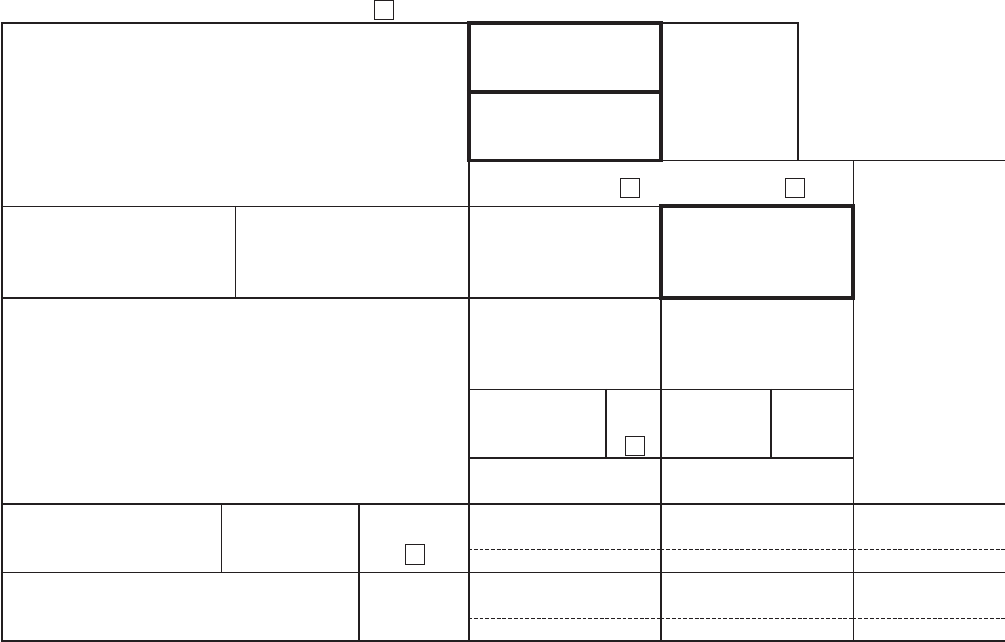
Page 24 of 52 Fileid: … tions/p575/2023/a/xml/cycle03/source 16:10 - 7-Mar-2024
The type and rule above prints on all proofs including departmental reproduction proofs. MUST be removed before printing.
Form 1099-R
2023
Distributions From
Pensions, Annuities,
Retirement or
Profit-Sharing Plans,
IRAs, Insurance
Contracts, etc.
Department of the Treasury - Internal Revenue Service
Copy B
Report this
income on your
federal tax
return. If this
form shows
federal income
tax withheld in
box 4, attach
this copy to
your return.
This information is
being furnished to
the IRS.
OMB No. 1545-0119
CORRECTED (if checked)
PAYER’S name, street address, city or town, state or province,
country, ZIP or foreign postal code, and telephone no.
PAYER’S TIN RECIPIENT’S TIN
RECIPIENT’S name
Street address (including apt. no.)
City or town, state or province, country, and ZIP or foreign postal code
Account number (see instructions)
1 Gross distribution
$
2a Taxable amount
$
2b Taxable amount
not determined
Total
distribution
3 Capital gain (included in
box 2a)
$
4 Federal income tax
withheld
$
5
Employee contributions/
Designated Roth
contributions or
insurance premiums
$
6 Net unrealized
appreciation in
employer’s securities
$
7 Distribution
code(s)
IRA/
SEP/
SIMPLE
8 Other
$
%
9a
Your percentage of total
distribution
%
9b
Total employee contributions
$
10 Amount allocable to IRR
within 5 years
$
11
1st year of desig.
Roth contrib.
12
FATCA ling
requirement
13 Date of
payment
14 State tax withheld
$
$
15 State/Payer’s state no. 16 State distribution
$
$
17 Local tax withheld
$
$
18 Name of locality 19 Local distribution
$
$
Form 1099-R
www.irs.gov/Form1099R
Crabtree Corporation Employees’ Pension Plan
1111 Main Street
Anytown, Texas 75000
10-0000000 002-00-XXXX
Robert C. Smith
911 Mill Way
Anytown, Texas 75000
175000.00
150000.00
X
10000.00 30000.00
25000.00
7A
24 Publication 575 (2023)
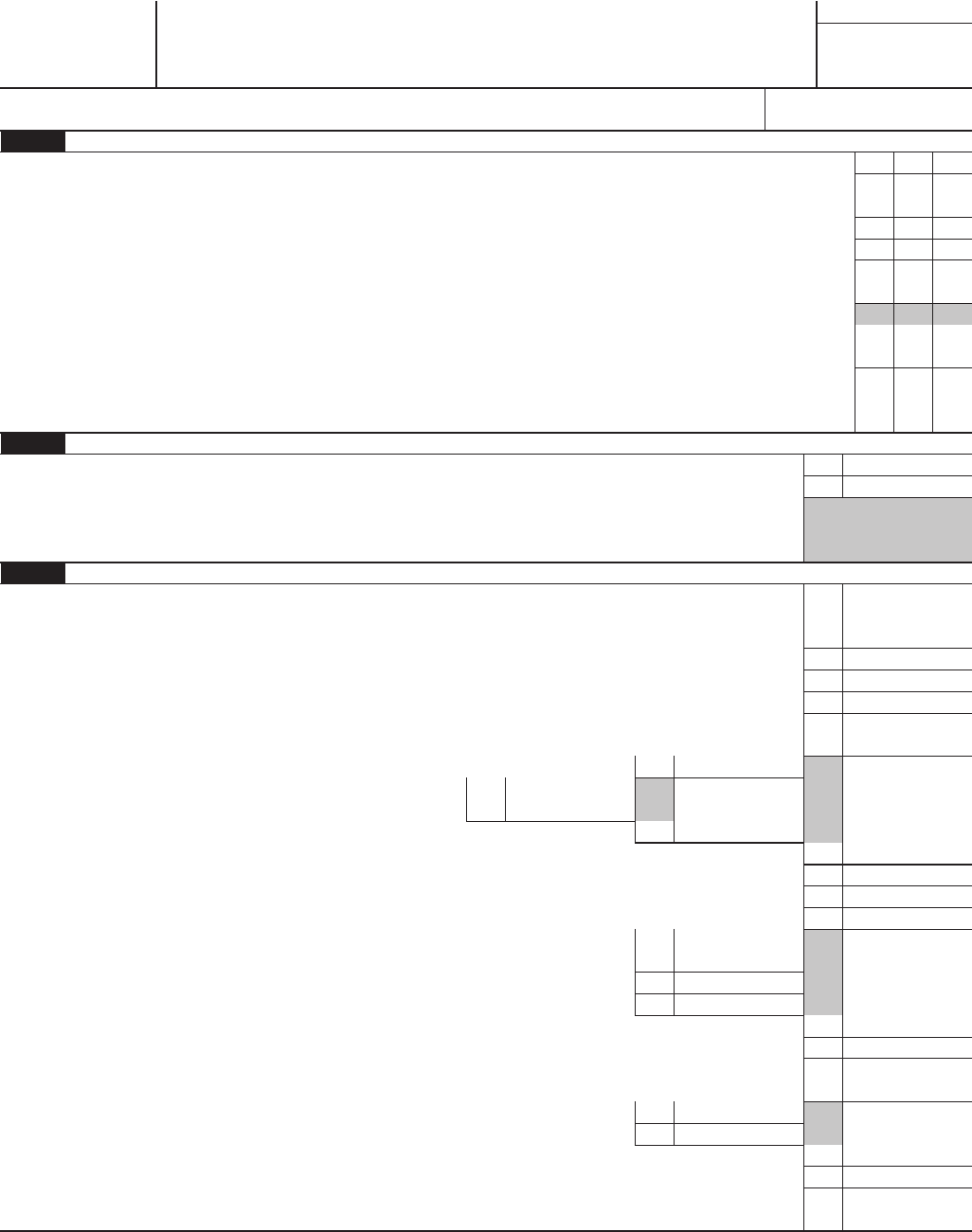
Page 25 of 52 Fileid: … tions/p575/2023/a/xml/cycle03/source 16:10 - 7-Mar-2024
The type and rule above prints on all proofs including departmental reproduction proofs. MUST be removed before printing.
Robert C. Smith 002-00-XXXX
√
√
√
√
√
10,000
2,000
140,000
140,000
-0-
140,000
140,000
140,000
14,000
2,227
22,270
22,270
24,270
Form 4972
2023
Tax on Lump-Sum Distributions
(From Qualified Plans of Participants Born Before January 2, 1936)
Department of the Treasury
Internal Revenue Service
Attach to Form 1040, 1040-SR, 1040-NR, or 1041.
Go to www.irs.gov/Form4972 for the latest information.
OMB No. 1545-0193
Attachment
Sequence No.
28
Name of recipient of distribution Identifying number
Part I
Complete this part to see if you can use Form 4972
1 Was this a distribution of a plan participant’s entire balance (excluding deductible voluntary employee
contributions and certain forfeited amounts) from all of an employer’s qualied plans of one kind (for
example, pension, prot-sharing, or stock bonus)? If “No,” don’t use this form . . ... ... . .
Yes No
1
2 Did you roll over any part of the distribution? If “Yes,” don’t use this form . . ... ... ... 2
3 Was this distribution paid to you as a beneciary of a plan participant who was born before January 2, 1936? 3
4 Were you (a) a plan participant who received this distribution, (b) born before January 2, 1936, and (c) a
participant in the plan for at least 5 years before the year of the distribution? . . ... . . ...
4
If you answered “No” to both questions 3 and 4, don’t use this form.
5 a Did you use Form 4972 after 1986 for a previous distribution from your own plan? If “Yes,” don’t use this
form for a 2023 distribution from your own plan . . ... ... ... .... . . ...
5a
b If you are receiving this distribution as a beneciary of a plan participant who died, did you use Form 4972
for a previous distribution received as a beneciary of that participant after 1986? If “Yes,” don’t use this
form for this distribution . . ... . ... .... . . .............
5b
Part II
Complete this part to choose the 20% capital gain elections (see instructions)
6 Capital gain part from Form 1099-R, box 3 ..... . . ............ .
6
7 Multiply line 6 by 20% (0.20) . . ...... ... .... . . ..... . . 7
If you also choose to use Part III, go to line 8. Otherwise, include the amount from line 7 in the total
on Form 1040, 1040-SR, or 1040-NR, line 16, or Form 1041, Schedule G, line 1b. Be sure to check
box 2 on Form 1040, 1040-SR, or 1040-NR, line 16.
Part III
Complete this part to choose the 10-year tax option (see instructions)
8 If you completed Part II, enter the amount from Form 1099-R, box 2a, minus box 3. If you didn’t
complete Part II, enter the amount from box 2a. Multiple recipients (and recipients who elect to
include net unrealized appreciation (NUA) in taxable income), see instructions . . ... ...
8
9 Death benet exclusion for a beneciary of a plan participant who died before August 21, 1996 . . 9
10 Total taxable amount. Subtract line 9 from line 8 . . ... ... ... .... . . . 10
11 Current actuarial value of annuity from Form 1099-R, box 8. If none, enter -0- . . ... . . . 11
12 Adjusted total taxable amount. Add lines 10 and 11. If this amount is $70,000 or more, skip lines 13
through 16, enter this amount on line 17, and go to line 18 . . ... ... ... ....
12
13 Multiply line 12 by 50% (0.50), but don’t enter more than $10,000 . . . . 13
14 Subtract $20,000 from line 12. If line 12 is $20,000 or
less, enter -0- . . .... ...... .
14
15 Multiply line 14 by 20% (0.20) . . ...... ... .... . 15
16 Minimum distribution allowance. Subtract line 15 from line 13 . . ... ... ... . . 16
17 Subtract line 16 from line 12 . . ... . .... . . ..... . . ...... 17
18 Federal estate tax attributable to lump-sum distribution . . ... ... ... .... 18
19 Subtract line 18 from line 17. If line 11 is zero, skip lines 20 through 22 and go to line 23 . . . . 19
20 Divide line 11 by line 12 and enter the result as a decimal (rounded to at least
three places) . . ... . ..... . ..... . . ...
20
.
21 Multiply line 16 by the decimal on line 20 ..... . . ..... 21
22 Subtract line 21 from line 11 . . ...... ... .... . 22
23 Multiply line 19 by 10% (0.10) . . ...... ... .... . . ..... . . 23
24 Tax on amount on line 23. Use the Tax Rate Schedule in the instructions . . ... ... . . 24
25 Multiply line 24 by 10.0. If line 11 is zero, skip lines 26 through 28, enter this amount on line 29, and
go to line 30 . . ... . ....... . . ...............
25
26 Multiply line 22 by 10% (0.10) . . ...... ... .... . 26
27 Tax on amount on line 26. Use the Tax Rate Schedule in the instructions . . 27
28 Multiply line 27 by 10.0 . . .... ............. . . ..... 28
29 Subtract line 28 from line 25. Multiple recipients, see instructions . . ... ... ... . 29
30 Tax on lump-sum distribution. Add lines 7 and 29. Also, include this amount in the total on Form
1040, 1040-SR, or 1040-NR, line 16 (check box 2), or Form 1041, Schedule G, line 1b . . ...
30
For Paperwork Reduction Act Notice, see instructions.
Cat. No. 13187U
Form 4972 (2023)
Publication 575 (2023) 25

Page 26 of 52 Fileid: … tions/p575/2023/a/xml/cycle03/source 16:10 - 7-Mar-2024
The type and rule above prints on all proofs including departmental reproduction proofs. MUST be removed before printing.
Example 2. Mary Brown, who was born in 1935, sold
her business in 2023. She withdrew her entire interest in
the qualified profit-sharing plan she had set up as the sole
proprietor.
The cash part of the distribution, $160,000, is all ordi-
nary income and is shown on her Form 1099-R below.
She chooses to figure the tax on this amount using the
10-year tax option. Mary also received an annuity contract
as part of the distribution from the plan. Box 8 of Form
1099-R shows that the current actuarial value of the annu-
ity is $10,000. She enters these figures on Form 4972
(shown later).
After completing Form 4972, she includes the tax of
$28,070 in the total on Form 1040, 1040-SR, or 1040-NR,
line 16.
Form 1099-R
2023
Distributions From
Pensions, Annuities,
Retirement or
Profit-Sharing Plans,
IRAs, Insurance
Contracts, etc.
Department of the Treasury - Internal Revenue Service
Copy B
Report this
income on your
federal tax
return. If this
form shows
federal income
tax withheld in
box 4, attach
this copy to
your return.
This information is
being furnished to
the IRS.
OMB No. 1545-0119
CORRECTED (if checked)
PAYER’S name, street address, city or town, state or province,
country, ZIP or foreign postal code, and telephone no.
PAYER’S TIN RECIPIENT’S TIN
RECIPIENT’S name
Street address (including apt. no.)
City or town, state or province, country, and ZIP or foreign postal code
Account number (see instructions)
1 Gross distribution
$
2a Taxable amount
$
2b Taxable amount
not determined
Total
distribution
3 Capital gain (included in
box 2a)
$
4 Federal income tax
withheld
$
5
Employee contributions/
Designated Roth
contributions or
insurance premiums
$
6 Net unrealized
appreciation in
employer’s securities
$
7 Distribution
code(s)
IRA/
SEP/
SIMPLE
8 Other
$
%
9a
Your percentage of total
distribution
%
9b
Total employee contributions
$
10 Amount allocable to IRR
within 5 years
$
11
1st year of desig.
Roth contrib.
12
FATCA ling
requirement
13 Date of
payment
14 State tax withheld
$
$
15 State/Payer’s state no. 16 State distribution
$
$
17 Local tax withheld
$
$
18 Name of locality 19 Local distribution
$
$
Form 1099-R
www.irs.gov/Form1099R
160000.00
160000.00
32000.00
005-00-XXXX10-0000000
Mary Brown
12 Mill Avenue
Anytown, Nevada 89300
25000.00
10000.007A
X
Brown’s Real Estate
Profit-Sharing Plan
2101 Chelsea Court
Anytown, Nevada 89300
26 Publication 575 (2023)
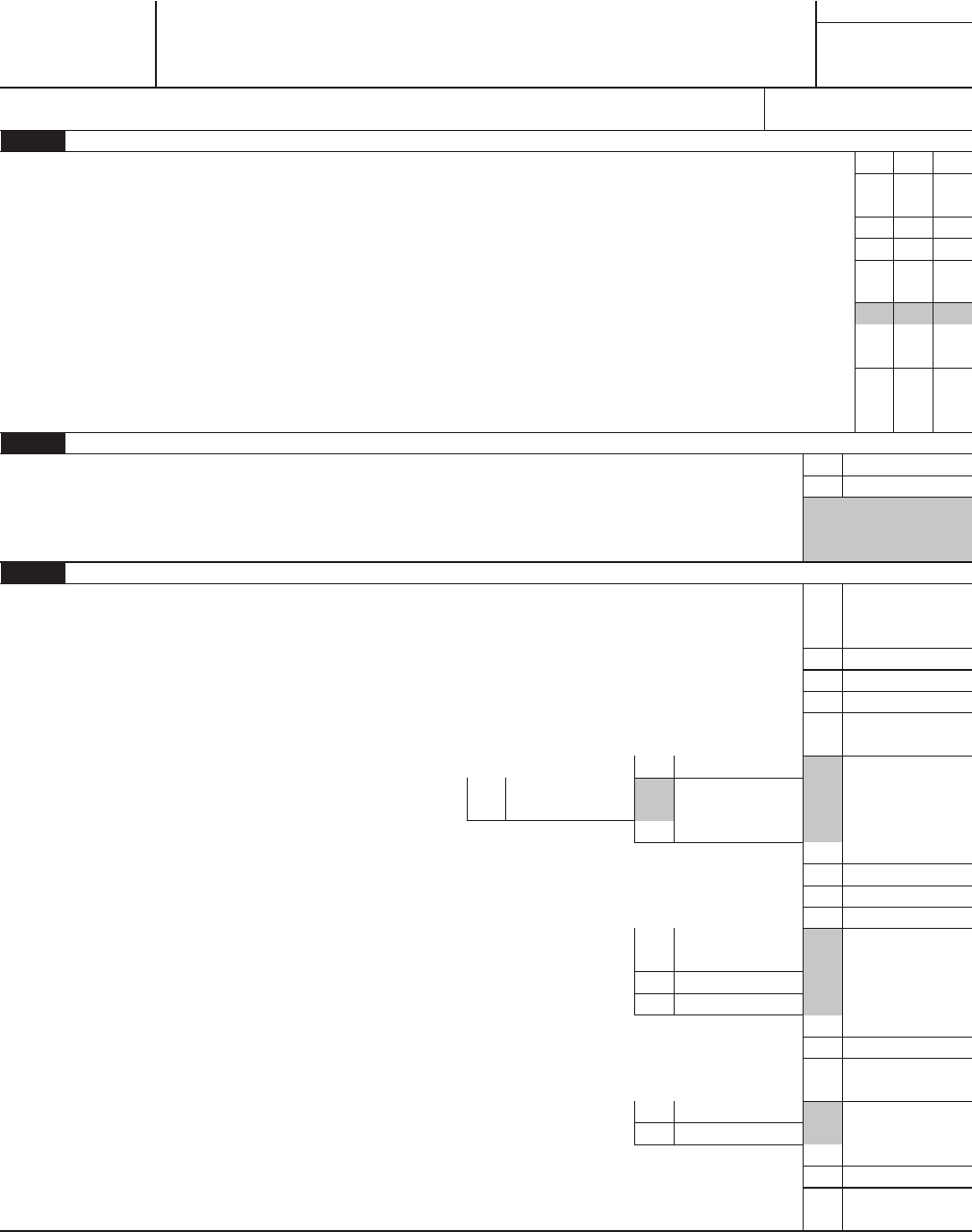
Page 27 of 52 Fileid: … tions/p575/2023/a/xml/cycle03/source 16:10 - 7-Mar-2024
The type and rule above prints on all proofs including departmental reproduction proofs. MUST be removed before printing.
Mary Brown
005-00-XXXX
√
√
√
√
√
160,000
160,000
10,000
170,000
170,000
170,000
17,000
2,917
29,170
28,070
28,070
0588
10,000
1,000
110
1,100
Form 4972
2023
Tax on Lump-Sum Distributions
(From Qualified Plans of Participants Born Before January 2, 1936)
Department of the Treasury
Internal Revenue Service
Attach to Form 1040, 1040-SR, 1040-NR, or 1041.
Go to www.irs.gov/Form4972 for the latest information.
OMB No. 1545-0193
Attachment
Sequence No.
28
Name of recipient of distribution Identifying number
Part I
Complete this part to see if you can use Form 4972
1 Was this a distribution of a plan participant’s entire balance (excluding deductible voluntary employee
contributions and certain forfeited amounts) from all of an employer’s qualied plans of one kind (for
example, pension, prot-sharing, or stock bonus)? If “No,” don’t use this form . . ... ... . .
Yes No
1
2 Did you roll over any part of the distribution? If “Yes,” don’t use this form . . ... ... ... 2
3 Was this distribution paid to you as a beneciary of a plan participant who was born before January 2, 1936? 3
4 Were you (a) a plan participant who received this distribution, (b) born before January 2, 1936, and (c) a
participant in the plan for at least 5 years before the year of the distribution? . . ... . . ...
4
If you answered “No” to both questions 3 and 4, don’t use this form.
5 a Did you use Form 4972 after 1986 for a previous distribution from your own plan? If “Yes,” don’t use this
form for a 2023 distribution from your own plan . . ... ... ... .... . . ...
5a
b If you are receiving this distribution as a beneciary of a plan participant who died, did you use Form 4972
for a previous distribution received as a beneciary of that participant after 1986? If “Yes,” don’t use this
form for this distribution . . ... . ... .... . . .............
5b
Part II
Complete this part to choose the 20% capital gain elections (see instructions)
6 Capital gain part from Form 1099-R, box 3 ..... . . ............ .
6
7 Multiply line 6 by 20% (0.20) . . ...... ... .... . . ..... . . 7
If you also choose to use Part III, go to line 8. Otherwise, include the amount from line 7 in the total
on Form 1040, 1040-SR, or 1040-NR, line 16, or Form 1041, Schedule G, line 1b. Be sure to check
box 2 on Form 1040, 1040-SR, or 1040-NR, line 16.
Part III
Complete this part to choose the 10-year tax option (see instructions)
8 If you completed Part II, enter the amount from Form 1099-R, box 2a, minus box 3. If you didn’t
complete Part II, enter the amount from box 2a. Multiple recipients (and recipients who elect to
include net unrealized appreciation (NUA) in taxable income), see instructions . . ... ...
8
9 Death benet exclusion for a beneciary of a plan participant who died before August 21, 1996 . . 9
10 Total taxable amount. Subtract line 9 from line 8 . . ... ... ... .... . . . 10
11 Current actuarial value of annuity from Form 1099-R, box 8. If none, enter -0- . . ... . . . 11
12 Adjusted total taxable amount. Add lines 10 and 11. If this amount is $70,000 or more, skip lines 13
through 16, enter this amount on line 17, and go to line 18 . . ... ... ... ....
12
13 Multiply line 12 by 50% (0.50), but don’t enter more than $10,000 . . . . 13
14 Subtract $20,000 from line 12. If line 12 is $20,000 or
less, enter -0- . . .... ...... .
14
15 Multiply line 14 by 20% (0.20) . . ...... ... .... . 15
16 Minimum distribution allowance. Subtract line 15 from line 13 . . ... ... ... . . 16
17 Subtract line 16 from line 12 . . ... . .... . . ..... . . ...... 17
18 Federal estate tax attributable to lump-sum distribution . . ... ... ... .... 18
19 Subtract line 18 from line 17. If line 11 is zero, skip lines 20 through 22 and go to line 23 . . . . 19
20 Divide line 11 by line 12 and enter the result as a decimal (rounded to at least
three places) . . ... . ..... . ..... . . ...
20
.
21 Multiply line 16 by the decimal on line 20 ..... . . ..... 21
22 Subtract line 21 from line 11 . . ...... ... .... . 22
23 Multiply line 19 by 10% (0.10) . . ...... ... .... . . ..... . . 23
24 Tax on amount on line 23. Use the Tax Rate Schedule in the instructions . . ... ... . . 24
25 Multiply line 24 by 10.0. If line 11 is zero, skip lines 26 through 28, enter this amount on line 29, and
go to line 30 . . ... . ....... . . ...............
25
26 Multiply line 22 by 10% (0.10) . . ...... ... .... . 26
27 Tax on amount on line 26. Use the Tax Rate Schedule in the instructions . . 27
28 Multiply line 27 by 10.0 . . .... ............. . . ..... 28
29 Subtract line 28 from line 25. Multiple recipients, see instructions . . ... ... ... . 29
30 Tax on lump-sum distribution. Add lines 7 and 29. Also, include this amount in the total on Form
1040, 1040-SR, or 1040-NR, line 16 (check box 2), or Form 1041, Schedule G, line 1b . . ...
30
For Paperwork Reduction Act Notice, see instructions.
Cat. No. 13187U
Form 4972 (2023)
Publication 575 (2023) 27

Page 28 of 52 Fileid: … tions/p575/2023/a/xml/cycle03/source 16:10 - 7-Mar-2024
The type and rule above prints on all proofs including departmental reproduction proofs. MUST be removed before printing.
Rollovers
If you withdraw cash or other assets from a qualified retire-
ment plan in an eligible rollover distribution, you can gen-
erally defer tax on the distribution by rolling it over to an-
other qualified retirement plan, a traditional IRA, or, after 2
years of participation in a SIMPLE IRA sponsored by your
employer, a SIMPLE IRA under that plan. You don't in-
clude the amount rolled over in your income until you re-
ceive it in a distribution from the recipient plan or IRA with-
out rolling over that distribution. (For information about
rollovers from traditional IRAs, see chapter 1 of Pub.
590-A.)
If you roll over the distribution to a traditional IRA, you
can't deduct the amount rolled over as an IRA contribu-
tion. When you later withdraw it from the IRA, you can't
use the optional methods discussed earlier under
Lump-Sum Distributions to figure the tax.
Self-employed individuals are generally treated as em-
ployees for the rules on the tax treatment of distributions,
including the rules for rollovers.
See Designated Roth accounts, later, for information on
rollovers (including in-plan Roth rollovers) related to those
accounts. Also, see Rollovers to Roth IRAs, later, for infor-
mation on rollovers from a qualified retirement plan to a
Roth IRA.
Rollovers to SIMPLE retirement accounts. You can
also roll over amounts from a qualified retirement plan (as
described next) or an IRA into a SIMPLE retirement ac-
count as follows.
1. During the first 2 years of participation in a SIMPLE
retirement account, you may roll over amounts from
one SIMPLE retirement account into another SIMPLE
retirement account.
2. After 2 years of participation in a SIMPLE retirement
account, you may roll over amounts from a SIMPLE
retirement account, a qualified retirement plan, or an
IRA into a SIMPLE retirement account.
Qualified retirement plan. For this purpose, the follow-
ing plans are qualified retirement plans.
•
A qualified employee plan.
•
A qualified employee annuity.
•
A tax-sheltered annuity plan (403(b) plan).
•
An eligible state or local governmental section 457 de-
ferred compensation plan.
Eligible rollover distribution. An eligible rollover distri-
bution is any distribution of all or any part of the balance to
your credit in a qualified retirement plan except the follow-
ing.
1. Any of a series of substantially equal distributions
paid at least once a year over:
a. Your lifetime or life expectancy,
b. The joint lives or life expectancies of you and your
beneficiary, or
c. A period of 10 years or more.
2. A required minimum distribution (RMD) (discussed
later under Tax on Excess Accumulation).
3. Hardship distributions.
4. Corrective distributions of excess contributions or ex-
cess deferrals, and any income allocable to these dis-
tributions, or of excess annual additions and any allo-
cable gains (see Corrective distributions of excess
plan contributions under Taxation of Nonperiodic Pay-
ments, earlier).
5. A loan treated as a distribution because it doesn’t sat-
isfy certain requirements either when made or later
(such as upon default), unless the participant's ac-
crued benefits are reduced (offset) to repay the loan.
See Loans Treated as Distributions, earlier, and the
discussion of plan loan offsets, including qualified
plan loan offsets, under Time for making rollover,
later.
6. Dividends paid on employer securities.
7. The cost of life insurance coverage.
In addition, a distribution to the plan participant's bene-
ficiary isn’t generally treated as an eligible rollover distri-
bution. However, see Qualified domestic relations order
(QDRO), Rollover by surviving spouse, and Rollovers by
nonspouse beneficiary, later.
Rollover of nontaxable amounts. You may be able to
roll over the nontaxable part of a distribution (such as your
after-tax contributions) made to another qualified retire-
ment plan that is a qualified employee plan or a 403(b)
plan, or to a traditional or Roth IRA. The transfer must be
made either through a direct rollover to a qualified plan or
403(b) plan that separately accounts for the taxable and
nontaxable parts of the rollover or through a rollover to a
traditional or Roth IRA.
If you roll over only part of a distribution that includes
both taxable and nontaxable amounts, the amount you roll
over is treated as coming first from the taxable part of the
distribution.
Any after-tax contributions that you roll over into your
traditional IRA become part of your basis (cost) in your
IRAs. To recover your basis when you take distributions
from your IRA, you must complete Form 8606, Nondeduc-
tible IRAs, for the year of the distribution. For more infor-
mation, see the Instructions for Form 8606.
Withholding requirements. If an eligible rollover distri-
bution is paid to you, the payer must withhold 20% of it.
This applies even if you plan to roll over the distribution to
another qualified retirement plan or to an IRA. However,
you can avoid withholding by choosing the direct rollover
option, discussed later. Also, see Choosing the right op-
tion at the end of this discussion.
Exceptions. An eligible rollover distribution isn't sub-
ject to withholding to the extent it consists of NUA from
28 Publication 575 (2023)

Page 29 of 52 Fileid: … tions/p575/2023/a/xml/cycle03/source 16:10 - 7-Mar-2024
The type and rule above prints on all proofs including departmental reproduction proofs. MUST be removed before printing.
employer securities that can be excluded from your gross
income. (For a discussion of the tax treatment of a distri-
bution of employer securities, see Figuring the Taxable
Amount under Taxation of Nonperiodic Payments, earlier.)
In addition, withholding from an eligible rollover distribu-
tion paid to you isn't required if:
•
The distribution and all previous eligible rollover distri-
butions you received during the tax year from the
same plan (or, at the payer's option, from all your em-
ployer's plans) total less than $200; or
•
The distribution consists solely of employer securities,
plus cash of $200 or less instead of fractional shares.
Direct rollover option. You can choose to have any part
or all of an eligible rollover distribution paid directly to an-
other qualified retirement plan that accepts rollover distri-
butions or to a traditional or Roth IRA.
There is an automatic rollover requirement for manda-
tory distributions. A mandatory distribution is a distribution
made without your consent and before you reach age 62
or normal retirement age, whichever is later. The auto-
matic rollover requirement applies if the distribution is
more than $1,000 and is an eligible rollover distribution.
You can choose to have the distribution paid directly to
you or rolled over directly to your traditional or Roth IRA or
another qualified retirement plan. If you don't make this
choice, the plan administrator will automatically roll over
the distribution into an IRA of a designated trustee or is-
suer.
No tax withheld. If you choose the direct rollover op-
tion, or have an automatic rollover, no tax will be withheld
from any part of the distribution that is directly paid to the
trustee of the other plan. If any part of the eligible rollover
distribution is paid to you, the payer must generally with-
hold 20% of it for income tax.
Payment-to-you option. If an eligible rollover distribution
is paid to you, 20% will generally be withheld for income
tax. However, the full amount is treated as distributed to
you even though you actually receive only 80%. You must
generally include in income any part (including the part
withheld) that you don't roll over within 60 days to another
qualified retirement plan or to a traditional or Roth IRA.
If you are under age 59
1
/2 when a distribution is paid to
you, you may have to pay a 10% tax (in addition to the reg-
ular income tax) on the taxable part (including any tax
withheld) that you don't roll over. See Tax on Early Distri-
butions, later.
Partial rollovers. If you receive a lump-sum distribu-
tion, it may qualify for special tax treatment. See
Lump-Sum Distributions, earlier. However, if you roll over
any part of the distribution, the part you keep doesn't qual-
ify for special tax treatment.
Rolling over more than amount received. If
you decide to roll over an amount equal to the dis-
tribution before withholding, your contribution to
the new plan or IRA must include other money (for exam-
ple, from savings or amounts borrowed) to replace the
amount withheld.
CAUTION
!
Example. You receive an eligible rollover distribution of
$10,000 from your employer's qualified employee plan.
The payer withholds $2,000, so you actually receive
$8,000. If you want to roll over the entire $10,000 to post-
pone including that amount in your income, you will have
to get $2,000 from some other source to add to the $8,000
you actually received.
If you roll over only $8,000, you must include the $2,000
not rolled over in your income for the distribution year.
Also, you may be subject to the 10% additional tax on the
$2,000 if it was distributed to you before you reached age
59
1
/2.
Time for making rollover. You must generally complete
the rollover of an eligible rollover distribution paid to you by
the 60th day following the day on which you receive the
distribution from your employer's plan.
The IRS may waive the 60-day requirement where the
failure to do so would be against equity or good con-
science, such as in the event of a casualty, disaster, or
other event beyond your reasonable control.
Example. In the previous example, you received the
distribution on June 30. To postpone including it in your in-
come, you must complete the rollover by August 29, the
60th day following June 30.
Plan loan offset. A plan loan offset is the amount your
employer plan account balance is reduced, or offset, to re-
pay a loan from the plan. How long you have to complete
the rollover of a plan loan offset depends on what kind of
plan loan offset you have. For tax years beginning after
2017, if you have a qualified plan loan offset, you will have
until the due date (including extensions) for your tax return
for the tax year in which the offset occurs to complete your
rollover.
A qualified plan loan offset occurs when a plan loan
in good standing is offset because your employer plan ter-
minates, or because you have a severance from employ-
ment. If your plan loan offset occurs for any other reason,
then you have 60 days from the date the offset occurs to
complete your rollover.
Ways to get a waiver of the 60-day rollover require-
ment. There are three ways to obtain a waiver of the
60-day requirement.
•
You qualify for an automatic waiver.
•
You self-certify that you meet the requirements of a
waiver.
•
You request and receive a private letter ruling granting
a waiver.
For more information about requesting a waiver of the
60-day rollover requirement, rollovers permitted between
the various types of retirement plans (including IRAs), and
other topics regarding rollovers, see Rollovers in Pub.
590-A.
Frozen deposits. If an amount distributed to you be-
comes a frozen deposit in a financial institution during the
Publication 575 (2023) 29

Page 30 of 52 Fileid: … tions/p575/2023/a/xml/cycle03/source 16:10 - 7-Mar-2024
The type and rule above prints on all proofs including departmental reproduction proofs. MUST be removed before printing.
60-day period after you receive it, the rollover period is ex-
tended. An amount is a frozen deposit if you can't with-
draw it because of either:
•
The bankruptcy or insolvency of the financial institu-
tion, or
•
A restriction on withdrawals by the state in which the
institution is located because of the bankruptcy or in-
solvency (or threat of it) of one or more financial insti-
tutions in the state.
The 60-day rollover period is extended by the period for
which the amount is a frozen deposit and doesn't end ear-
lier than 10 days after the amount is no longer a frozen de-
posit.
Retirement bonds. If you redeem retirement bonds pur-
chased under a qualified bond purchase plan, you can roll
over the proceeds that exceed your basis tax free into an
IRA or qualified employer plan. Subsequent distributions
of those proceeds, however, don't qualify for the 10-year
tax option or capital gain treatment.
Annuity contracts. If an annuity contract was distributed
to you by a qualified retirement plan, you can roll over an
amount paid under the contract that is otherwise an eligi-
ble rollover distribution. For example, you can roll over a
single-sum payment you receive upon surrender of the
contract to the extent it is taxable and isn't an RMD.
Rollovers of property. To roll over an eligible rollover
distribution of property, you must either roll over the actual
property distributed or sell it and roll over the proceeds.
You can't keep the distributed property and roll over cash
or other property.
If you sell the distributed property and roll over all the
proceeds, no gain or loss is recognized on the sale. The
sale proceeds (including any portion representing an in-
crease in value) are treated as part of the distribution and
aren't included in your gross income.
If you roll over only part of the proceeds, you are taxed
on the part you keep. You must allocate the proceeds you
keep between the part representing ordinary income from
the distribution (its value upon distribution) and the part
representing gain or loss from the sale (its change in value
from its distribution to its sale).
Example 1. On September 4, 2023, Paul received an
eligible rollover distribution from his employer's noncontri-
butory qualified employee plan of $50,000 in nonemployer
stock. On September 24, 2023, he sold the stock for
$60,000. On October 2, 2023, he contributed $60,000
cash to a traditional IRA. Paul doesn't include either the
$50,000 eligible rollover distribution or the $10,000 gain
from the sale of the stock in his income. The entire
$60,000 rolled over will be ordinary income when he with-
draws it from his IRA.
Example 2. The facts are the same as in Example 1,
except that Paul sold the stock for $40,000 and contrib-
uted $40,000 to the IRA. Paul doesn't include the $50,000
eligible rollover distribution in his income and doesn't de-
duct the $10,000 loss from the sale of the stock. The
$40,000 rolled over will be ordinary income when he with-
draws it from his IRA.
Example 3. The facts are the same as in Example 1,
except that Paul rolled over only $45,000 of the $60,000
proceeds from the sale of the stock. The $15,000 pro-
ceeds he didn't roll over include part of the gain from the
stock sale. Paul reports $2,500 ($10,000 ÷ $60,000 ×
$15,000) as capital gain and $12,500 ($50,000 ÷ $60,000
× $15,000) as ordinary income.
Example 4. The facts are the same as in Example 2,
except that Paul rolled over only $25,000 of the $40,000
proceeds from the sale of the stock. The $15,000 pro-
ceeds he didn’t roll over include part of the loss from the
stock sale. Paul reports $3,750 ($10,000 ÷ $40,000 ×
$15,000) capital loss and $18,750 ($50,000 ÷ $40,000 ×
$15,000) ordinary income.
Property and cash distributed. If both cash and prop-
erty were distributed and you didn't roll over the entire dis-
tribution, you may designate what part of the rollover is al-
locable to the cash distribution and what part is allocable
to the proceeds from the sale of the distributed property. If
the distribution included an amount that isn’t taxable
(other than the NUA in employer securities) as well as an
eligible rollover distribution, you may also designate what
part of the nontaxable amount is allocable to the cash dis-
tribution and what part is allocable to the property. Your
designation must be made by the due date for filing your
tax return, including extensions. You can't change your
designation after that date. If you don't make a designation
on time, the rollover amount or the nontaxable amount
must be allocated on a ratable basis.
Qualified domestic relations order (QDRO). You may
be able to roll over tax free all or part of a distribution from
a qualified retirement plan that you receive under a
QDRO. (See Qualified domestic relations order (QDRO)
under General Information, earlier.) If you receive the dis-
tribution as an employee's spouse or former spouse (not
as a nonspouse beneficiary), the rollover rules apply to
you as if you were the employee.
Rollover by surviving spouse. You may be able to roll
over tax free all or part of a distribution from a qualified re-
tirement plan you receive as the surviving spouse of a de-
ceased employee. The rollover rules apply to you as if you
were the employee. You can roll over the distribution into a
qualified retirement plan or a traditional or Roth IRA. For a
rollover to a Roth IRA, see Rollovers to Roth IRAs, later.
A distribution paid to a beneficiary other than the em-
ployee's surviving spouse is generally not an eligible roll-
over distribution. However, see Rollovers by nonspouse
beneficiary next.
Rollovers by nonspouse beneficiary. If you are a des-
ignated beneficiary (other than a surviving spouse) of a
deceased employee, you may be able to roll over tax free
all or a portion of a distribution you receive from an eligible
retirement plan of the employee. The distribution must be
a direct trustee-to-trustee transfer to your traditional or
30 Publication 575 (2023)

Page 31 of 52 Fileid: … tions/p575/2023/a/xml/cycle03/source 16:10 - 7-Mar-2024
The type and rule above prints on all proofs including departmental reproduction proofs. MUST be removed before printing.
Roth IRA that was set up to receive the distribution. The
transfer will be treated as an eligible rollover distribution
and the receiving plan will be treated as an inherited IRA.
For information on inherited IRAs, see What if You Inherit
an IRA? in chapter 1 of Pub. 590-B.
How to report. Enter the total distribution (before income
tax or other deductions were withheld) on Form 1040,
1040-SR, or 1040-NR, line 5a. This amount should be
shown in box 1 of Form 1099-R. From this amount, sub-
tract any contributions (usually shown in box 5 of Form
1099-R) that were taxable to you when made. From that
result, subtract the amount that was rolled over either di-
rectly or within 60 days of receiving the distribution. Enter
the remaining amount, even if zero, on Form 1040,
1040-SR, or 1040-NR, line 5b. Also, enter “Rollover” next
to the line.
Written explanation to recipients. The administrator of
a qualified retirement plan must, within a reasonable pe-
riod of time before making an eligible rollover distribution,
provide you with a written explanation. It must tell you
about all of the following.
•
Your right to have the distribution paid tax free directly
to another qualified retirement plan or to a traditional
or Roth IRA.
•
The requirement to withhold tax from the distribution if
it isn't directly rolled over.
•
The nontaxability of any part of the distribution that
you roll over within 60 days after you receive the distri-
bution.
•
Other qualified retirement plan rules that apply, includ-
ing those for lump-sum distributions, alternate payees,
and cash or deferred arrangements.
•
How the distribution rules of the plan to which you roll
over the distribution may differ from the rules that ap-
ply to the plan making the distribution in their restric-
tions and tax consequences.
Reasonable period of time. The plan administrator
must provide you with a written explanation no earlier than
90 days and no later than 30 days before the distribution is
made. However, you can choose to have a distribution
made less than 30 days after the explanation is provided
as long as the following two requirements are met.
•
You must have the opportunity to consider whether or
not you want to make a direct rollover for at least 30
days after the explanation is provided.
•
The information you receive must clearly state that you
have the right to have 30 days to make a decision.
Contact the plan administrator if you have any questions
regarding this information.
Designated Roth accounts. You can roll over an eligible
rollover distribution from a designated Roth account into
another designated Roth account or a Roth IRA. If you
want to roll over the part of the distribution that isn't inclu-
ded in income, you must make a direct rollover of the en-
tire distribution (see Direct rollover option, earlier) or you
can roll over the entire amount (or any portion) to a Roth
IRA. Also, if you are a plan participant in a 401(k), 403(b),
or 457(b) plan, your plan may permit you to roll over
amounts in those plans to a designated Roth account
within the same plan (in-plan Roth rollover). The rollover of
any untaxed amounts is included in income. See In-plan
Roth rollovers, later.
A qualified distribution from a designated Roth account
isn't includible in income. (A qualified distribution is de-
fined earlier in the discussion of designated Roth ac-
counts under Taxation of Periodic Payments).
If you roll over only part of an eligible rollover distribu-
tion that isn't a qualified distribution and not paid as a di-
rect rollover contribution, the part rolled over is considered
to be first from the income portion of the distribution.
Example. You receive an eligible rollover distribution
that isn't a qualified distribution from your designated Roth
account. The distribution consists of $11,000 (investment)
and $3,000 (income earned). Within 60 days of receipt,
you roll over $7,000 into a Roth IRA. The $7,000 consists
of $3,000 of income and $4,000 of investment. Because
you rolled over the part of the distribution that could be in-
cluded in gross income (income earned), none of the dis-
tribution is included in gross income.
In-plan Roth rollovers. If you are a participant in a
401(k), 403(b), or 457(b) plan, your plan may permit you
to roll over any vested amounts from those plans to a des-
ignated Roth account within the same plan. The in-plan
Roth rollover must be an eligible rollover distribution (de-
fined earlier under Eligible rollover distribution). Any un-
taxed amounts included in the in-plan Roth rollover must
be included in income in the year you receive the distribu-
tion.
You can make the in-plan Roth rollover by direct trans-
fer of the amount from the non-Roth account to your des-
ignated Roth account within the same plan. The 20%
mandatory withholding doesn't apply to in-plan Roth roll-
overs made by direct rollover. You can also effect the
in-plan Roth rollover by receiving an eligible rollover distri-
bution from your 401(k), 403(b), or 457(b) plan and within
60 days depositing it into a designated Roth account in
the same plan.
Your plan must provide a written explanation of the con-
sequences of making an in-plan Roth rollover. In-plan
Roth rollovers can't be undone. Unlike rollovers to Roth
IRAs, you can't later recharacterize an in-plan Roth roll-
over.
If you received employer securities as a part of
your in-plan Roth rollover distribution, the rollover
is treated as a distribution for the purpose of NUA.
See Distributions of employer securities, earlier.
Mandatory 20% withholding. A payor must normally
withhold 20% when a rollover distribution is paid to you.
However, some part of your distribution may not be sub-
ject to the mandatory 20% withholding. Otherwise nondis-
tributable amounts aren't subject to the mandatory 20%
withholding. An example of otherwise nondistributable
TIP
Publication 575 (2023) 31
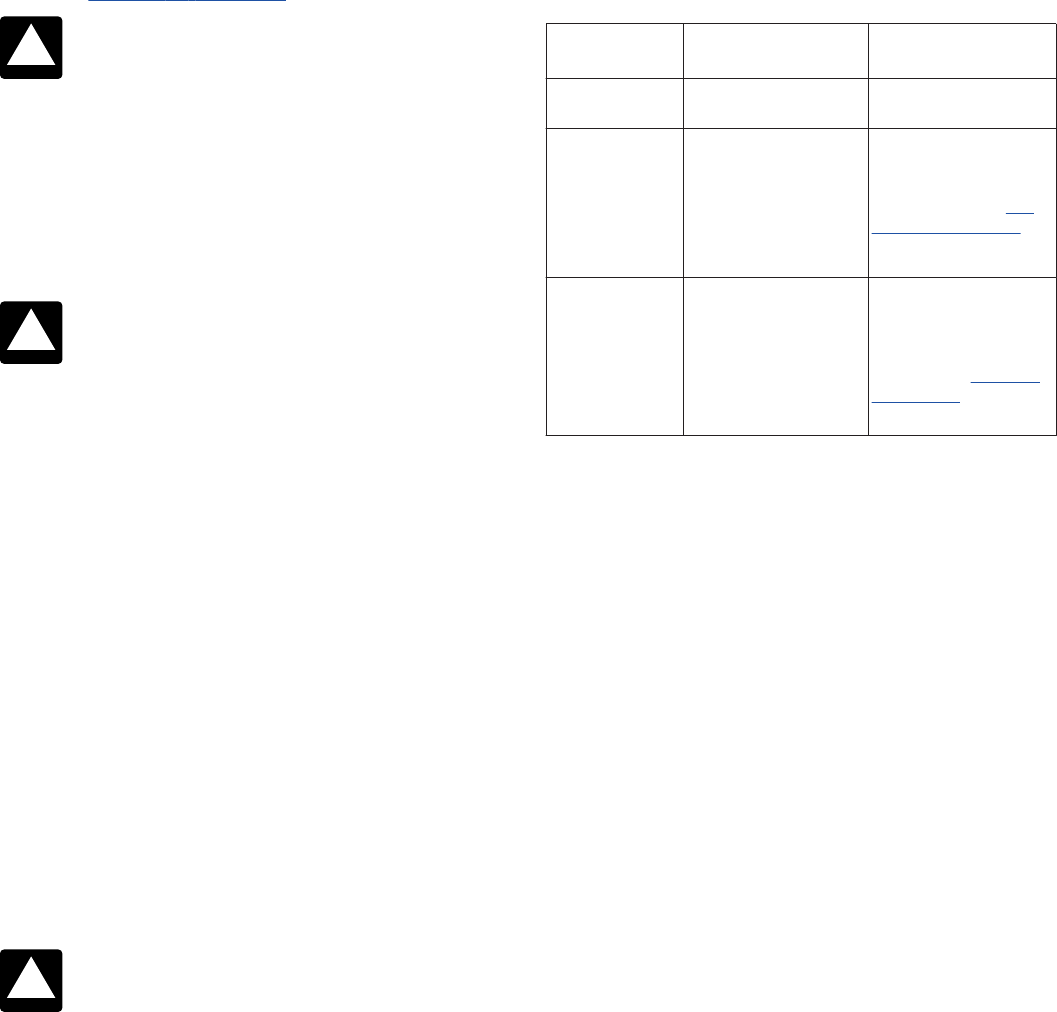
Page 32 of 52 Fileid: … tions/p575/2023/a/xml/cycle03/source 16:10 - 7-Mar-2024
The type and rule above prints on all proofs including departmental reproduction proofs. MUST be removed before printing.
amounts is employer matching contributions in a 401(k)
plan. See Payment-to-you option, earlier.
You can't roll over amounts from your traditional
TSP to your Roth TSP. See Pub. 721 for more de-
tails.
How to report. Enter the total amount of the distribu-
tion before income tax or deductions were withheld on
Form 1040, 1040-SR, or 1040-NR, line 5a. This amount
should be shown in box 1 of Form 1099-R. From this
amount, subtract any contributions (usually shown in
box 5 of Form 1099-R) that were taxable to you when
made. Enter the remaining amount, even if zero, on Form
1040, 1040-SR, or 1040-NR, line 5b.
If you must include any amount in your gross in-
come, you may have to increase your withholding
or make estimated tax payments. See Pub. 505.
Rollovers to Roth IRAs. You can roll over distributions
directly from a qualified retirement plan (other than a des-
ignated Roth account) to a Roth IRA. You must include in
your gross income distributions from a qualified retirement
plan (other than a designated Roth account) that you
would have had to include in income if you hadn't rolled
them over into a Roth IRA. You don't include in gross in-
come any part of a distribution from a qualified retirement
plan that is a return of contributions to the plan that were
taxable to you when paid. In addition, the 10% tax on early
distributions doesn't apply.
Any amount rolled over into a Roth IRA is subject to the
same rules for converting a traditional IRA into a Roth IRA.
For more information, see Converting From Any Traditional
IRA Into a Roth IRA in chapter 1 of Pub. 590-A.
How to report. Enter the total amount of the distribu-
tion before income tax or deductions were withheld on
Form 1040, 1040-SR, or 1040-NR, line 5a. This amount
should be shown in box 1 of Form 1099-R. From this
amount, subtract any contributions (usually shown in
box 5 of Form 1099-R) that were taxable to you when
made. Enter the remaining amount, even if zero, on Form
1040, 1040-SR, or 1040-NR, line 5b.
If you must include any amount in your gross in-
come, you may have to increase your withholding
or make estimated tax payments. See Pub. 505.
Choosing the right option. Table 1 may help you decide
which distribution option to choose. Carefully compare the
effects of each option.
CAUTION
!
CAUTION
!
CAUTION
!
Table 1. Comparison of Payment to You
Versus Direct Rollover
Affected item
Result of a payment to
you
Result of a direct
rollover
Withholding
The payer must withhold
20% of the taxable part.
There is no withholding.
Additional tax
If you are under age
59
1
/2, a 10% additional
tax may apply to the
taxable part (including
an amount equal to the
tax withheld) that isn't
rolled over.
There is no 10%
additional tax. See Tax
on Early Distributions.
When to report
as income
Any taxable part
(including the taxable
part of any amount
withheld) not rolled over
is income to you in the
year paid.
Any taxable part isn't
income to you until later
distributed to you from
the new plan or IRA.
However, see Rollovers
to Roth IRAs for an
exception.
Qualified settlement income. If you are a qualified tax-
payer and you received qualified settlement income in
connection with the Exxon Valdez litigation, you can con-
tribute all or part of it to an eligible retirement plan. This in-
cludes a qualified retirement plan. The amount contributed
can’t exceed $100,000 (reduced by the amount of quali-
fied settlement income contributed to an eligible retire-
ment plan in prior tax years) or the amount of qualified set-
tlement income received during the tax year. Contributions
for the year can be made until the due date for filing your
tax return, not including extensions.
Qualified settlement income that you contribute to a
qualified retirement plan will be treated as having been rol-
led over in a direct trustee-to-trustee transfer within 60
days of the distribution. The amount contributed isn’t in-
cluded in your taxable income and it isn’t considered to be
investment in the contract.
You are a qualified taxpayer if you are:
•
A plaintiff in the civil action In re Exxon Valdez, No.
89-095-CV (HRH) (Consolidated) (D. Alaska), or
•
The beneficiary of the estate of a plaintiff who ac-
quired the right to receive qualified settlement income
from that plaintiff and who is the spouse or immediate
relative of that plaintiff.
Qualified settlement income is any interest or punitive
damage awards which are:
•
Otherwise includible in income, and
•
Received in connection with the Exxon Valdez civil ac-
tion described (whether pre- or post-judgment and
whether related to a settlement or a judgment).
Qualified settlement income can be received as periodic
payments or as a lump sum. See Pub. 525 for information
on how to report Exxon Valdez settlement income.
32 Publication 575 (2023)

Page 33 of 52 Fileid: … tions/p575/2023/a/xml/cycle03/source 16:10 - 7-Mar-2024
The type and rule above prints on all proofs including departmental reproduction proofs. MUST be removed before printing.
Special rule for Roth IRAs and designated Roth ac-
counts. Qualified settlement income that is contributed to
a Roth IRA or a designated Roth account will be:
•
Included in your taxable income for the year the quali-
fied settlement income was received, and
•
Treated as part of your cost basis (investment in the
contract) that isn’t taxable when distributed.
Special Additional Taxes
To discourage the use of pension funds for purposes other
than normal retirement, the law imposes additional taxes
on early distributions of those funds and on failures to
withdraw the funds timely. Ordinarily, you won't be subject
to these taxes if you roll over all early distributions you re-
ceive, as explained earlier, and begin drawing out the
funds at a normal retirement age in prorated amounts over
your life expectancy. These special additional taxes are
the taxes on:
•
Early distributions, and
•
Excess accumulation (not receiving minimum distribu-
tions).
These taxes are discussed in the following sections.
If you must pay either of these taxes, report them on
Form 5329. However, you don't have to file Form 5329 if
you owe only the tax on early distributions and your Form
1099-R correctly shows code “1” in box 7. Instead, enter
10% of the taxable part of the distribution on Schedule 2
(Form 1040), line 8. Also check the box on line 8 to indi-
cate that you don't have to file Form 5329.
Even if you don't owe any of these taxes, you may have
to complete Form 5329 and attach it to your Form 1040,
1040-SR, or 1040-NR. This applies if you meet an excep-
tion to the tax on early distributions but box 7 of your Form
1099-R doesn't indicate an exception.
Tax on Early Distributions
Most distributions (both periodic and nonperiodic) from
qualified retirement plans and nonqualified annuity con-
tracts made to you before you reach age 59
1
/2 are subject
to an additional tax of 10%. This tax applies to the part of
the distribution that you must include in gross income. It
doesn't apply to any part of a distribution that is tax free,
such as amounts that represent a return of your cost or
that were rolled over to another retirement plan. It also
doesn’t apply to corrective distributions of excess defer-
rals, excess contributions, or excess aggregate contribu-
tions (discussed earlier under Taxation of Nonperiodic
Payments).
For this purpose, a qualified retirement plan is:
•
A qualified employee plan (including a qualified cash
or deferred arrangement (CODA) under Internal Reve-
nue Code section 401(k)),
•
A qualified employee annuity plan,
•
A tax-sheltered annuity plan (403(b) plan), or
•
An eligible state or local governmental section 457 de-
ferred compensation plan (to the extent that any distri-
bution is attributable to amounts the plan received in a
direct transfer or rollover from one of the other plans
listed here or an IRA).
5% rate on certain early distributions from deferred
annuity contracts. If an early withdrawal from a deferred
annuity is otherwise subject to the 10% additional tax, a
5% rate may apply instead. A 5% rate applies to distribu-
tions under a written election providing a specific sched-
ule for the distribution of your interest in the contract if, as
of March 1, 1986, you had begun receiving payments un-
der the election. On line 4 of Form 5329, multiply the line 3
amount by 5% instead of 10%. Attach an explanation to
your return.
Distributions from designated Roth accounts alloca-
ble to in-plan Roth rollovers within the 5-year period.
If, within the 5-year period starting with the first day of your
tax year in which you rolled over an amount from your
401(k), 403(b), or 457(b) plan to a designated Roth ac-
count, you take a distribution from the designated Roth ac-
count, you may have to pay the additional 10% tax on
early distributions. You must generally pay the 10% addi-
tional tax on any amount attributable to the part of the
in-plan Roth rollover that you had to include in income (re-
capture amount). A separate 5-year period applies to each
in-plan Roth rollover. See Figuring your recapture amount,
later, to determine the recapture amount, if any.
The 5-year period used for determining whether the
10% early distribution tax applies to a distribution alloca-
ble to an in-plan Roth rollover is separately determined for
each in-plan Roth rollover, and isn't necessarily the same
as the 5-year period used for determining whether a distri-
bution is a qualified distribution.
Figuring your recapture amount. For any early dis-
tribution in 2023 from your designated Roth account that
is allocable to an in-plan Roth rollover, you allocate the
amount from box 10 of your 2023 Form 1099-R to the
amounts, if any, you have rolled over into that designated
Roth account.
If you haven’t taken a distribution from your designated
Roth account before 2023, then allocate the amount in
box 10 of your 2023 Form 1099-R to the amounts you re-
ported on the lines listed in the Recapture Allocation Chart
(filling in the Taxable column first, and then the Nontaxable
column for each year) until you have covered the entire
amount in box 10.
If you have taken a distribution from your designated
Roth account prior to 2023, then allocate the amount in
box 10 of your 2023 Form 1099-R to the amounts you re-
ported on the lines listed in the Recapture Allocation Chart
(filling in the Taxable column first, and then the Nontaxable
column for each year). However, don't start at the begin-
ning; instead, begin with the first line that hasn’t been
used fully for a previous distribution.
Your recapture amount is the sum of the amounts you
allocated for 2011 through 2023 under the Taxable column
Publication 575 (2023) 33
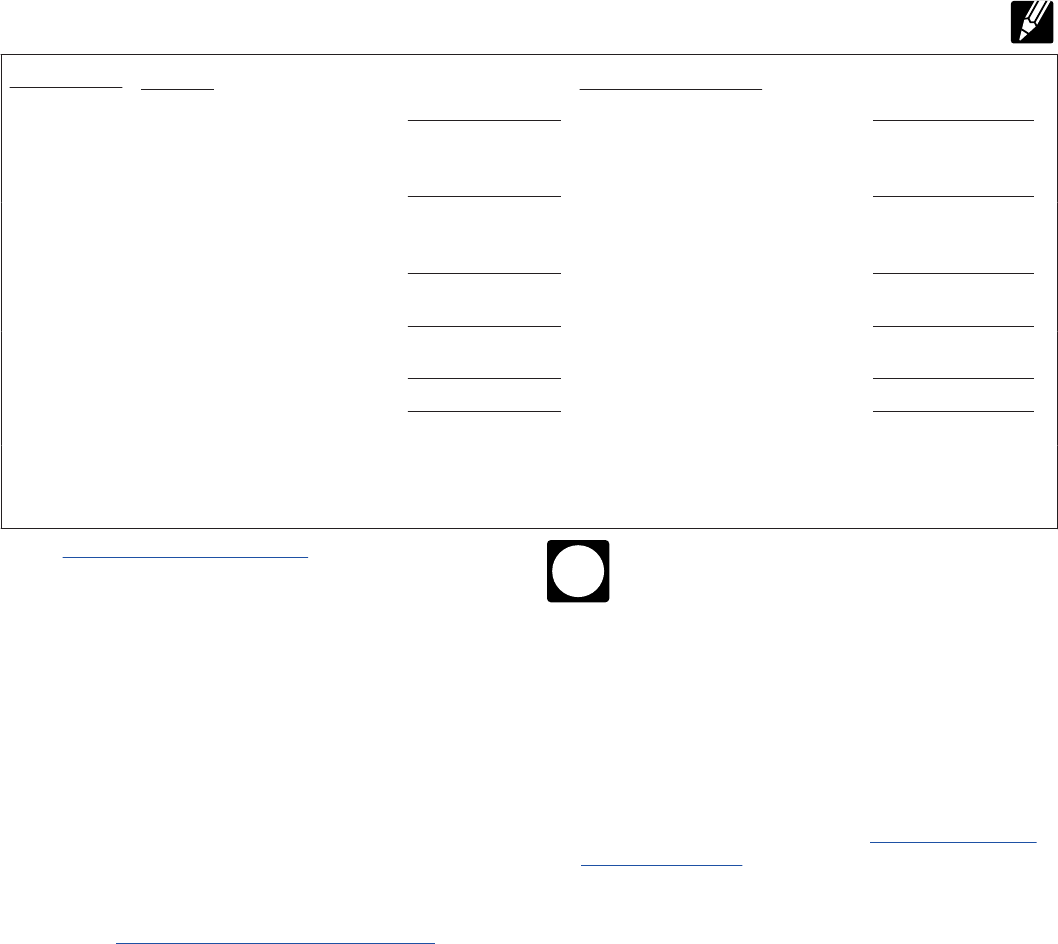
Page 34 of 52 Fileid: … tions/p575/2023/a/xml/cycle03/source 16:10 - 7-Mar-2024
The type and rule above prints on all proofs including departmental reproduction proofs. MUST be removed before printing.
in the Recapture Allocation Chart. You will also include
this amount on Form 5329, line 1.
Example. You had an in-plan Roth rollover in 2023 of
$50,000. This is your first in-plan Roth rollover. Your 2023
Form 1040 or 1040-SR includes $30,000 on line 5b, the
taxable portion of the in-plan Roth rollover, and $50,000
on line 5a, the in-plan Roth rollover including $20,000 of
basis.
In December 2023, at age 57, you took a distribution of
$35,000 from your designated Roth account. The 2023
Form 1099-R shows the distribution of $35,000 reported in
box 1, the taxable portion of the distribution of $3,500 re-
ported in box 2a, and the amount of $31,500 allocable to
the in-plan Roth rollover reported in box 10. Because you
had no in-plan Roth rollovers in prior years, you would al-
locate the $31,500 reported in box 10 of Form 1099-R as
shown in the Example Recapture Allocation Chart.
The recapture amount, the amount subject to tax on
early distributions allocable to the in-plan Roth rollover, is
$30,000 ($31,500 − $1,500). Your amount subject to tax
on early distributions reported on Form 5329, line 1, for
this distribution is $33,500 ($30,000 allocable to Form
1040 or 1040-SR, line 5b; and $3,500 from box 2a of Form
1099-R).
Exceptions to tax. Certain early distributions are excep-
ted from the early distribution tax. If the payer knows that
an exception applies to your early distribution, distribution
code “2,” “3,” or “4” should be shown in box 7 of your Form
1099-R and you don't have to report the distribution on
Form 5329. If an exception applies but distribution code
“1” (early distribution, no known exception) is shown in
box 7, you must file Form 5329. Enter the taxable amount
of the distribution shown in box 2a of your Form 1099-R on
line 1 of Form 5329. On line 2, enter the amount that can
be excluded and the exception number shown in the Form
5329 instructions.
If distribution code “1” is incorrectly shown on your
Form 1099-R for a distribution received when you
were age 59
1
/2 or older, include that distribution
on Form 5329. Enter exception number “12” on line 2.
General exceptions. The tax doesn’t apply to distri-
butions that are:
•
Made as part of a series of substantially equal peri-
odic payments (made at least annually) for your life (or
life expectancy) or the joint lives (or joint life expectan-
cies) of you and your designated beneficiary (if from a
qualified retirement plan, the payments must begin af-
ter separation from service) (see Substantially equal
periodic payments, later);
•
Made because you are totally and permanently disa-
bled (see Note, later);
•
Made to you because you have received a certification
that you are terminally ill; or
•
Made on or after the death of the plan participant or
contract holder.
Disabled. You are considered disabled if you can furnish
proof that you can't do any substantial gainful activity be-
cause of your physical or mental condition. A physician
must determine that your condition can be expected to re-
sult in death or be of a long, continued, or indefinite dura-
tion.
Distributions to terminally ill individuals. You may be
able to take a distribution from a qualified retirement plan
before reaching age 59
1
/2 and not have to pay the 10%
additional tax on early distributions if you receive the distri-
bution on or after the date you have received a certifica-
tion by a physician that you are terminally ill.
Terminally ill individual. You are considered terminally
ill if you are certified by a physician as having an illness or
TIP
Example Recapture Allocation Chart
Keep for Your Records
Tax Year
Taxable Nontaxable (Basis)
2010
Form 8606, line 23 ........
Form 8606, line 22 ...........
2011 Form 1040, line 16b;* Form
1040A, line 12b;* or Form
1040NR, line 17b* .........
Form 1040, line 16a**; Form
1040A, line 12a**; or Form
1040NR, line 17a** ...........
2012 Form 1040, line 16b;* Form
1040A, line 12b;* or Form
1040NR, line 17b* .........
Form 1040, line 16a;** Form
1040A, line 12a;** or Form
1040NR, line 17a** ...........
2022 Form 1040, 1040-SR, or
1040-NR, line 5b* .........
Form 1040, 1040-SR, or
1040-NR, line 5a** ...........
2023 Form 1040, 1040-SR, or
1040-NR, line 5b* .........
$30,000
Form 1040, 1040-SR, or
1040-NR, line 5a** ...........
$1,500
Total .....................
$30,000
Total ........................
$1,500
Note. The sum of the totals for each column should equal the amount reported in box 10 of your 2023 Form 1099-R.
* Only include those amounts attributable to an in-plan Roth rollover.
** Only include any contributions (usually box 5 of Form 1099-R) that were taxable to you when made and attributable to an in-plan
Roth rollover.
34 Publication 575 (2023)

Page 35 of 52 Fileid: … tions/p575/2023/a/xml/cycle03/source 16:10 - 7-Mar-2024
The type and rule above prints on all proofs including departmental reproduction proofs. MUST be removed before printing.
physical condition which can reasonably be expected to
result in death in 84 months or less after the date of the
certification.
Certification of terminal illness. A certification of termi-
nal illness must include the following:
•
A statement that the individual’s illness or physical
condition can be reasonably expected to result in
death in 84 months or less after the date of certifica-
tion.
•
A narrative description of the evidence that was used
to support the statement of illness or physical condi-
tion.
•
It must include the name and contact information of
the physician making the statement.
•
The statement must include the date the physician ex-
amined the individual or reviewed the evidence provi-
ded by the individual, and the date that the physician
signed the certification.
•
The statement must include the signature of the physi-
cian making the statement, and an attestation from the
physician that, by signing the form, the physician con-
firms that the physician composed the narrative de-
scription based on the physician’s examination of the
individual or the physician’s review of the evidence
provided by the individual.
However, it is not sufficient evidence for an employee
who is a physician to certify the physician’s own terminal
illness.
Amount may be repaid. You may repay an amount
you received because you are certified terminally ill by
making one or more contributions to the plan as long as
the total of those contributions doesn’t exceed the amount
distributed to you as a terminally ill individual.
Additional exceptions for qualified retirement
plans. The 10% additional tax doesn’t apply to distribu-
tions that are:
•
From a qualified retirement plan (other than an IRA)
after your separation from service in or after the year
you reached age 55 (the earlier of age 50 or 25 years
of service under the plan for qualified public safety
employees) (see Separation from service, later);
•
From a qualified retirement plan (other than IRA) after
your separation from service in or after the year you
reached the earlier of age 50 or 25 years of service
under the plan, if you are a private sector firefighter.
•
From a qualified retirement plan (other than an IRA) to
an alternate payee under a QDRO;
•
From a qualified retirement plan to the extent you have
deductible medical expenses that exceed 7.5% of
your adjusted gross income, whether or not you item-
ize your deductions for the year;
•
From an employer plan under a written election that
provides a specific schedule for distribution of your en-
tire interest if, as of March 1, 1986, you had separated
from service and had begun receiving payments un-
der the election;
•
From an employee stock ownership plan for dividends
on employer securities held by the plan;
•
From a qualified retirement plan due to an IRS levy of
the plan;
•
From elective deferral accounts under 401(k) or
403(b) plans, or similar arrangements, that are quali-
fied reservist distributions;
•
Phased retirement annuity payments made to federal
employees (see Pub. 721 for more information on the
phased retirement program); or
•
From a qualified retirement plan (other than an IRA)
for a qualified birth or adoption (for more information,
see Qualified birth or adoption distributions, later).
Separation from service. In order to meet the re-
quirements for the first two exceptions in the list above,
you must have separated from service in or after the year
in which you reach age 55 (or the earlier of age 50 or with
25 years of service under the plan, whichever is earlier, for
qualified public safety employees and private sector fire-
fighters).
You can’t separate from service before that year. Wait
until you reach the applicable age, described above, and
take a distribution.
Example. George separated from service from his em-
ployer at age 49. In the year he reached age 55, he took a
distribution from his retirement plan. Because he separa-
ted from service before he reached age 55, he didn’t meet
the requirements for the exception for a distribution made
from a qualified retirement plan (other than an IRA) after
separating from service in or after reaching age 55.
Qualified public safety employees. If you are a
qualified public safety employee, distributions that are
made from a governmental retirement plan may not be
subject to the 10% additional tax on early distributions.
See Certain distributions to qualified public safety employ-
ees, later.
You are a qualified public safety employee if you provi-
ded police protection, firefighting services, or emergency
medical services for a state or municipality.
For tax years beginning after 2015, the definition of
qualified public safety employees is expanded to include:
•
Federal law enforcement officers,
•
Federal customs and border protection officers,
•
Federal firefighters,
•
Air traffic controllers,
•
Nuclear materials couriers,
•
Members of the United States Capitol Police,
•
Members of the Supreme Court Police, and
•
Diplomatic security special agents of the United
States Department of State.
Publication 575 (2023) 35
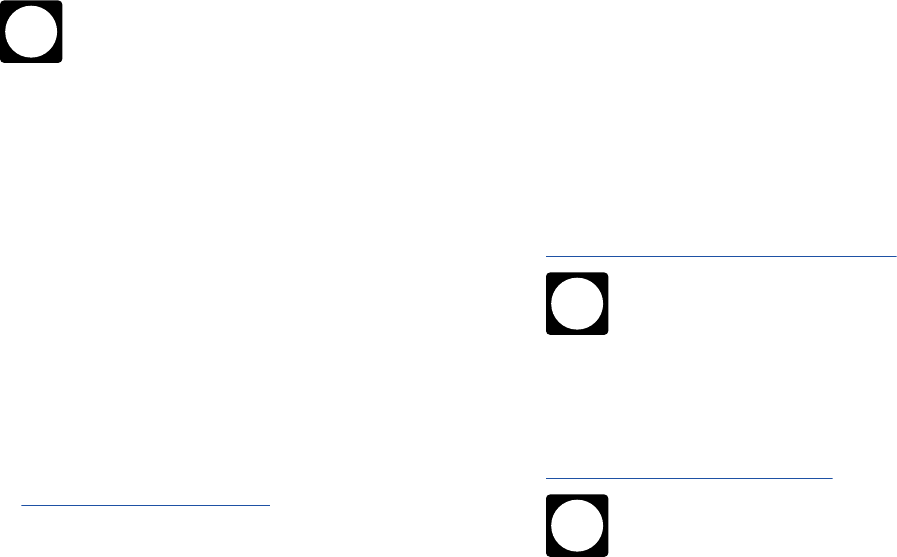
Page 36 of 52 Fileid: … tions/p575/2023/a/xml/cycle03/source 16:10 - 7-Mar-2024
The type and rule above prints on all proofs including departmental reproduction proofs. MUST be removed before printing.
Certain distributions to qualified public safety em-
ployees. The exception to the 10% additional tax for
early distributions applies to distributions made to quali-
fied public safety employees and firefighters covered by
private sector retirement plans after separation from serv-
ice on or after they reach age 50 or with 25 years of serv-
ice under the plan, whichever is earlier. The exception
also includes distributions to those employees who meet
the age or years of service requirement, as described ear-
lier, who provide services as a corrections officer or as a
forensic security employee providing for the care, custody,
and control of forensic patients.
Qualified reservist distributions. A qualified reserv-
ist distribution isn’t subject to the additional tax on early
distributions. A qualified reservist distribution is a distribu-
tion (a) from elective deferrals under a section 401(k) or
403(b) plan, or a similar arrangement; (b) to an individual
ordered or called to active duty (because they are a mem-
ber of a reserve component) for a period of more than 179
days or for an indefinite period; and (c) made during the
period beginning on the date of the order or call and end-
ing at the close of the active duty period. You must be or-
dered or called to active duty after September 11, 2001.
You can choose to recontribute part or all of the
distributions to an IRA. These additional contribu-
tions must be made within 2 years after your ac-
tive-duty period ends. Any amount recontributed must be
reported on Form 8606 as a nondeductible contribution.
You can’t take a deduction for these contributions. How-
ever, the normal dollar limitations for contributions to IRAs
don't apply to these special contributions, and you can
make regular contributions to your IRA, up to the amount
otherwise allowable.
Qualified birth or adoption distributions. A qualified
birth or adoption distribution isn't subject to the additional
tax on early distributions. An individual can receive up to
$5,000 from an applicable eligible retirement plan for a
distribution made during the 1-year period beginning on
the date on which a child of the individual is born or the
date on which the legal adoption by the individual of an eli-
gible adoptee is finalized. For more information on quali-
fied birth or adoption distributions, see Notice 2020-68,
which is on page 567 of Internal Revenue Bulletin 2020-38
at IRS.gov/pub/irs-irb20-38.pdf.
Repayment of qualified birth or adoption distribu-
tions limited to 3 years. If you received a qualified birth
or adoption distribution after December 29, 2022, you may
repay the distribution by making one or more contributions
to a qualified plan during the 3-year period beginning on
the day after the date on which the distribution was re-
ceived. For distributions received on or before December
29, 2022, you may repay the distribution during the period
that begins after the distribution was received and ending
on the date before January 1, 2026.
TIP
Additional exceptions for nonqualified annuity con-
tracts. The tax doesn’t apply to distributions that are:
•
From a deferred annuity contract to the extent alloca-
ble to investment in the contract before August 14,
1982;
•
From a deferred annuity contract under a qualified
personal injury settlement;
•
From a deferred annuity contract purchased by your
employer upon termination of a qualified employee
plan or qualified employee annuity plan and held by
your employer until your separation from service; or
•
From an immediate annuity contract (a single premium
contract providing substantially equal annuity pay-
ments that start within 1 year from the date of pur-
chase and are paid at least annually).
Substantially equal periodic payments. Payments
are substantially equal periodic payments if they are made
in accordance with one of the following methods.
1. Required minimum distribution method. Under
this method, the resulting annual payment is redeter-
mined for each year.
2. Fixed amortization method. Under this method, the
resulting annual payment is determined once for the
first distribution year and remains the same amount
for each succeeding year.
3. Fixed annuitization method. Under this method, the
resulting annual payment is determined once for the
first distribution year and remains the same amount
for each succeeding year.
For information on these methods, see Notice 2022-6 at
IRS.gov/irb/2022-05_IRB#NOT-2022-06.
A change from method (2) or (3) to method (1)
isn’t treated as a modification to which the recap-
ture tax (discussed next) applies.
Note. For a series of substantially equal periodic pay-
ments starting in 2022, you may apply the guidance either
in Notice 2022-6, or in Revenue Ruling 2002-62 which is
on page 710 of Internal Revenue Bulletin 2002-42 at
IRS.gov/pub/irs-irbs/irb02-42.pdf.
Distributions received as periodic payments on or
after December 29, 2022, will not fail to be treated
as substantially equal merely because they are re-
ceived as an annuity.
Recapture tax for changes in distribution method
under equal payment exception. An early distribution
recapture tax may apply if, before you reach age 59
1
/2, the
distribution method under the equal periodic payment ex-
ception changes (for reasons other than your death or dis-
ability). The tax applies if the method changes from the
method requiring equal payments to a method that
wouldn’t have qualified for the exception to the tax. The re-
capture tax applies to the first tax year to which the
change applies. The amount of tax is the amount that
TIP
TIP
36 Publication 575 (2023)

Page 37 of 52 Fileid: … tions/p575/2023/a/xml/cycle03/source 16:10 - 7-Mar-2024
The type and rule above prints on all proofs including departmental reproduction proofs. MUST be removed before printing.
would have been imposed had the exception not applied,
plus interest for the deferral period.
The recapture tax also applies after you reach age
59
1
/2 if your payments under a distribution method that
qualifies for the exception are modified within 5 years of
the date of the first payment. In that case, the tax applies
only to payments distributed before you reach age 59
1
/2.
Report the recapture tax and interest on line 4 of Form
5329. Attach an explanation to the form. Don’t enter the
explanation next to the line or enter any amount for the re-
capture on line 1 or 3 of the form.
Tax on Excess Accumulation
To make sure that most of your retirement benefits are
paid to you during your lifetime, rather than to your benefi-
ciaries after your death, the payments that you receive
from qualified retirement plans must begin no later than
your required beginning date (defined later). The pay-
ments each year can’t be less than the RMD.
If the actual distributions to you in any year are less
than the RMD for that year, you are subject to an addi-
tional tax. The tax equals 50% of the part of the RMD that
wasn’t distributed.
For this purpose, a qualified retirement plan includes:
•
A qualified employee plan,
•
A qualified employee annuity plan,
•
An eligible section 457 deferred compensation plan,
or
•
A tax-sheltered annuity plan (403(b) plan) (for benefits
accruing after 1986).
Reduced tax rate for excess accumulations. The ad-
ditional tax rate for distributions that are less than the
RMD amount (excess accumulations) is reduced to 25%
for tax years beginning in 2023 and after.
You may be subject to a reduced additional tax rate of
10% of the amount not distributed if, during the correction
window, you take a distribution of the amount on which the
tax is due and submit a tax return reflecting this additional
tax.
The “correction window” is the period of time beginning
on the date on which the additional tax is imposed on the
distribution shortfall and ends on the earliest of:
•
The date of mailing the deficiency notice with respect
to the imposition of this tax;
•
The date the tax is assessed; or
•
The last day of the second tax year that begins after
the date of the tax year in which the additional tax is
imposed.
Waiver. The tax may be waived if you establish that the
shortfall in distributions was due to reasonable error and
that reasonable steps are being taken to remedy the
shortfall. If you believe you qualify for this relief, you must
file Form 5329. Enter “RC” and the amount you want
waived in parentheses on the dotted line next to line 54,
and attach a letter of explanation. Subtract this amount
from the total shortfall you figured without regard to the
waiver and enter the result on line 54.
State insurer delinquency proceedings. You might
not receive the minimum distribution because assets are
invested in a contract issued by an insurance company in
state insurer delinquency proceedings. If your payments
are reduced below the minimum because of these pro-
ceedings, you should contact your plan administrator. Un-
der certain conditions, you won’t have to pay the 50% tax.
Required beginning date. Unless the rule for 5% own-
ers applies, you must generally begin to receive distribu-
tions from your qualified retirement plan by April 1 of the
year that follows the later of:
•
The calendar year in which you reach age 73, or
•
The calendar year in which you retire from employ-
ment with the employer maintaining the plan.
However, your plan may require you to begin to receive
distributions by April 1 of the year that follows the year in
which you reach age 73 even if you haven’t retired.
5% owners. If you are a 5% owner, you must begin to
receive distributions from the plan by April 1 of the year
that follows the calendar year in which you reach age 73.
This rule doesn’t apply if your retirement plan is a govern-
mental or church plan.
You are a 5% owner if, for the plan year ending in the
calendar year in which you reach age 73, you own (or are
considered to own under section 318 of the Internal Reve-
nue Code) more than 5% of the outstanding stock (or
more than 5% of the total voting power of all stock) of the
employer, or more than 5% of the capital or profits interest
in the employer.
Required distributions. By the required beginning date,
you must either:
•
Receive your entire interest in the plan (for a tax-shel-
tered annuity, your entire benefit accruing after 1986),
or
•
Begin receiving periodic distributions in annual
amounts calculated to distribute your entire interest
(for a tax-sheltered annuity, your entire benefit accru-
ing after 1986) over your life or life expectancy or over
the joint lives or joint life expectancies of you and a
designated beneficiary (or over a shorter period).
After the starting year for periodic distributions, you
must receive at least the RMD for each year by December
31 of that year. (The starting year is the year in which you
reach age 73 or retire, whichever applies in determining
your required beginning date.) If no distribution is made in
your starting year, the RMDs for 2 years must be made the
following year (one by April 1 and one by December 31).
Distributions after the employee's death. If the em-
ployee was receiving periodic distributions before their
death and the employee dies after the required beginning
date, any payments not made as of the time of death must
generally be distributed at least as rapidly as under the
distribution method being used at the date of death.
Publication 575 (2023) 37

Page 38 of 52 Fileid: … tions/p575/2023/a/xml/cycle03/source 16:10 - 7-Mar-2024
The type and rule above prints on all proofs including departmental reproduction proofs. MUST be removed before printing.
In addition, if distributions are being made from a de-
fined contribution plan and the employee's beneficiary is
not an eligible designated beneficiary, any payments not
made as of the time of death must be distributed within 10
years after the death of the employee. An eligible designa-
ted beneficiary is the employee's spouse, the employee's
child who has not reached majority, a disabled individual,
a chronically ill individual, or an individual not more than
10 years younger than the employee.
If the employee dies before the required beginning
date, the entire account must be distributed under one of
the following rules.
•
Rule 1. The distribution must be completed by De-
cember 31 of the 5th year following the year of the em-
ployee's death if the employee was a participant in a
defined benefit plan or if there's no designated benefi-
ciary.
•
Rule 2. The distribution must be completed by De-
cember 31 of the 10th year following the year of the
employee's death if the employee was a participant in
a defined contribution plan and designated an individ-
ual as the beneficiary under the plan.
•
Rule 3. The distribution must be made in annual
amounts over the life of an individual designated as a
beneficiary under a defined benefit plan or life expect-
ancy of an eligible designated beneficiary under a de-
fined contribution plan.
The terms of the plan may determine which of these
three rules applies. If the plan permits the employee or the
eligible designated beneficiary to choose the rule that ap-
plies, this choice must be made by the earliest date a dis-
tribution would be required under either of the rules. Gen-
erally, this date is December 31 of the year following the
year of the employee's death.
If the employee or the eligible designated beneficiary
didn’t choose a rule and the plan doesn’t specify the rule
that applies, distribution must be made under Rule 3 if the
employee has an eligible designated beneficiary (or in the
case of a defined benefit plan, an individual was designa-
ted as the beneficiary under the plan) or under Rule 2 if
the employee was a participant in a defined contribution
plan, and has designated an individual as the beneficiary
under the plan, but that individual isn't an eligible designa-
ted beneficiary. If an employee doesn't have a designated
beneficiary, distribution must be made under Rule 1.
Distributions under Rule 3 must generally begin by De-
cember 31 of the year following the year of the employee's
death. However, if the surviving spouse is the beneficiary,
distributions need not begin until December 31 of the year
the employee would have reached age 73, if later.
If the surviving spouse is the designated beneficiary
and distributions are to be made under Rule 3, a special
rule applies if the spouse dies after the employee but be-
fore distributions are required to begin. In this case, distri-
butions may be made to the spouse's beneficiary under
either Rule 1, Rule 2, or Rule 3 as though the beneficiary
were the employee's beneficiary and the employee died
on the spouse's date of death. However, if the surviving
spouse remarries after the employee's death and the new
spouse is designated as the spouse's beneficiary, this
special rule applicable to surviving spouses doesn’t apply
to the new spouse.
If distributions from a defined contribution plan began
under Rule 3 and the eligible designated beneficiary dies
or a beneficiary who is a minor child reaches majority, dis-
tributions must be completed by December 31 of the 10th
year following the year of the beneficiary's death or the
child reaching majority.
Minimum distributions from an annuity plan. Special
rules may apply if you receive distributions from your re-
tirement plan in the form of an annuity. Your plan adminis-
trator should be able to give you information about these
rules.
Minimum distributions from an individual account
plan. Your plan administrator should be able to give you
information about how the amount of your RMD was fig-
ured.
If there is an account balance to be distributed from
your plan (not as an annuity), your plan administrator must
figure the minimum amount that must be distributed from
the plan each year.
What types of installments are allowed? The mini-
mum amount that must be distributed for any year may be
made in a series of installments (for example, monthly or
quarterly) as long as the total payments for the year made
by the date required aren’t less than the minimum amount
required for the year.
More than minimum. Your plan can distribute more in
any year than the minimum amount required for that year;
but if it does, you won’t receive credit for the additional
amount in determining the minimum amount required for
future years. However, any amount distributed in your
starting year will be credited toward the amount required
to be distributed by April 1 of the following year.
Combining multiple accounts to satisfy the minimum
distribution requirements. Generally, the RMD must be
figured separately for each account. Each qualified em-
ployee retirement plan and qualified annuity plan must be
considered individually in satisfying its distribution require-
ments. However, if you have more than one tax-sheltered
annuity account, you can total the RMDs and then satisfy
the requirement by taking distributions from any one (or
more) of the tax-sheltered annuities.
Survivors and Beneficiaries
Generally, a survivor or beneficiary reports pension or an-
nuity income in the same way the plan participant would
have reported it. However, some special rules apply, and
they are covered elsewhere in this publication as well as in
this section.
Estate tax deduction. You may be entitled to a deduc-
tion for estate tax if you receive amounts included in your
income as income in respect of a decedent under a joint
and survivor annuity that was included in the decedent's
estate. You can deduct the part of the total estate tax that
38 Publication 575 (2023)

Page 39 of 52 Fileid: … tions/p575/2023/a/xml/cycle03/source 16:10 - 7-Mar-2024
The type and rule above prints on all proofs including departmental reproduction proofs. MUST be removed before printing.
was based on the annuity, provided that the decedent died
after their annuity starting date. (For details, see Regula-
tions section 1.691(d)-1.) Deduct it in equal amounts over
your remaining life expectancy.
If the decedent died before the annuity starting date of
a deferred annuity contract and you receive a death bene-
fit under that contract, the amount you receive (either in a
lump sum or as periodic payments) in excess of the dece-
dent's cost is included in your gross income as income in
respect of a decedent for which you may be able to claim
an estate tax deduction.
You can take the estate tax deduction as an itemized
deduction on Schedule A (Form 1040). This deduction
isn’t subject to the 2%-of-adjusted-gross-income limit on
miscellaneous deductions. See Pub. 559, Survivors, Ex-
ecutors, and Administrators, for more information on the
estate tax deduction.
Survivors of employees. Distributions the beneficiary of
a deceased employee gets may be accrued salary pay-
ments; distributions from employee profit-sharing, pen-
sion, annuity, or stock bonus plans; or other items. Some
of these should be treated separately for tax purposes.
The treatment of these distributions depends on what they
represent.
Salary or wages paid after the death of the employee
are usually the beneficiary's ordinary income. If you are a
beneficiary of an employee who was covered by any of the
retirement plans mentioned, you can exclude from income
nonperiodic distributions received that totally relieve the
payer from the obligation to pay an annuity. The amount
that you can exclude is equal to the deceased employee's
investment in the contract (cost).
If you are entitled to receive a survivor annuity on the
death of an employee, you can exclude part of each annu-
ity payment as a tax-free recovery of the employee's in-
vestment in the contract. You must figure the taxable and
tax-free parts of each payment using the method that ap-
plies as if you were the employee. For more information,
see Taxation of Periodic Payments, earlier.
Survivors of retirees. Benefits paid to you as a survivor
under a joint and survivor annuity must be included in your
gross income. Include them in income in the same way the
retiree would have included them in gross income. See
Partly Taxable Payments under Taxation of Periodic Pay-
ments, earlier.
If the retiree reported the annuity under the 3-year Rule
and recovered all of the cost tax free, your survivor pay-
ments are fully taxable.
If the retiree was reporting the annuity under the Gen-
eral Rule, you must apply the same exclusion percentage
to your initial survivor annuity payment called for in the
contract. The resulting tax-free amount will then remain
fixed for the initial and future payments. Increases in the
survivor annuity are fully taxable. See Pub. 939 for more
information on the General Rule.
If the retiree was reporting the annuity under the Simpli-
fied Method, the part of each payment that is tax free is
the same as the tax-free amount figured by the retiree at
the annuity starting date. This amount remains fixed even
if the annuity payments are increased or decreased. See
Simplified Method under Taxation of Periodic Payments,
earlier.
Guaranteed payments. If you receive guaranteed
payments as the decedent's beneficiary under a life annu-
ity contract, don’t include any amount in your gross in-
come until your distributions plus the tax-free distributions
received by the life annuitant equal the cost of the con-
tract. All later distributions are fully taxable. This rule
doesn’t apply if it is possible for you to collect more than
the guaranteed amount. For example, it doesn’t apply to
payments under a joint and survivor annuity.
Disaster-Related Relief
Introduction
The special rules that provide for tax-favored withdrawals
and repayments from certain qualified plans for taxpayers
who suffered an economic loss as a result of a qualified
disaster were made permanent by the SECURE 2.0 Act of
2022. See Qualified disaster recovery distributions and
Qualified Disaster Distributions, later, for more informa-
tion.
The principles set forth in Notice 2005-92, 2005-51
I.R.B. 1165, available at IRS.gov/irb/2005-51_IRB (which
provides guidance on the tax-favored treatment of distri-
butions for victims of Hurricane Katrina), and Notice
2020-50, 2020-28 I.R.B. 35, available at IRS.gov/IRB/
2020-28_IRB (which provides guidance on the tax-favored
treatment of distributions for individuals impacted by the
coronavirus pandemic), generally also apply to these
rules.
If you received a qualified disaster recovery distribution
or a qualified disaster distribution (both defined later), it is
taxable but isn’t subject to the 10% additional tax on early
distributions. (Use Form 8915-F to figure the taxable por-
tion of the distribution.) However, the distribution is inclu-
ded in income ratably over 3 years unless you elect to re-
port the entire amount in the year of distribution. For
example, if you received a $60,000 qualified disaster dis-
tribution in 2020, you can include $20,000 in your income
in 2020, 2021, and 2022. However, you can elect to in-
clude the entire distribution in your income in the year it
was received. Also, you can repay the distribution and not
be taxed on the distribution. See Repayment of Qualified
Disaster Distributions, later.
The distribution limit for qualified disaster recov-
ery distributions is not the same as the limit for
qualified disaster distributions. See Distribution
limit for qualified disaster recovery distributions and Distri-
bution limit for qualified disaster distributions, later, for
more information.
If you received a distribution from an eligible retirement
plan to purchase or construct a main home but didn’t pur-
chase or construct a main home because of a major dis-
aster, you may be able to repay the distribution and not
CAUTION
!
Publication 575 (2023) 39

Page 40 of 52 Fileid: … tions/p575/2023/a/xml/cycle03/source 16:10 - 7-Mar-2024
The type and rule above prints on all proofs including departmental reproduction proofs. MUST be removed before printing.
pay income tax or the 10% additional tax on early distribu-
tions. See Recontribution of Qualified Distributions for the
Purchase or Construction of a Main Home, later.
Use Forms 8915-C, 8915-D, and 8915-F to report quali-
fied disaster distributions and repayments. Also report re-
contributions of qualified distributions for home purchases
and construction that were canceled because of qualified
2018, 2019, 2020, or later disasters on Form 8915-C,
8915-D, or 8915-F, as applicable.
Qualified Disaster Recovery
Distributions
A qualified disaster recovery distribution is a qualified dis-
aster distribution that meets certain criteria as described
in the SECURE 2.0 Act of 2022. It is a distribution made
from an eligible retirement plan to an individual whose
main home was in a qualified disaster area during the pe-
riod described under Qualified disaster recovery distribu-
tion, later. This individual must have sustained an eco-
nomic loss because of the disaster.
Main home (principal place of abode). Generally, your
main home is the home where you live most of the time. A
temporary absence due to special circumstances, such as
illness, education, business, military service, evacuation,
or vacation, won’t change your main home.
Qualified disaster. A qualified disaster means any major
disaster declared by the President under section 401 of
the Robert T. Stafford Disaster Relief and Emergency As-
sistance Act after December 27, 2020.
Qualified disaster area. A qualified disaster area
means any area with respect to which the major disaster
was declared under the Robert T. Stafford Disaster Relief
and Emergency Assistance Act. This term does not in-
clude any area which is a qualified disaster area solely by
reason of section 301 of the Taxpayer Certainty and Dis-
aster Tax Relief Act of 2020.
A qualified disaster area under section 301 of the
Taxpayer Certainty and Disaster Tax Relief Act of
2020 would be a major disaster that was declared
by the President during the period between January 1,
2020, and February 25, 2021. Also, this disaster must
have an incident period that began on or after December
28, 2019, and on or before December 27, 2020, and must
have ended no later than January 26, 2021. The definition
of a qualified disaster loss does not extend to any major
disaster which has been declared only by reason of
COVID-19.
Incident period. The incident period for any qualified
disaster is the period specified by the Federal Emergency
Management Agency (FEMA) as the period during which
the disaster occurred.
Qualified disaster recovery distribution. A qualified
disaster recovery distribution is any distribution:
•
Made on or after the first day of the incident period of
a qualified disaster and before the date that is 180
CAUTION
!
days after the applicable date with respect to such dis-
aster, and
•
Made to an individual whose principal place of abode
at any time during such qualified disaster is located in
the qualified disaster area, and
•
That individual has sustained an economic loss by
reason of such qualified disaster.
Economic loss. Qualified disaster distributions are per-
mitted without regard to your need or the actual amount of
your economic loss. Examples of an economic loss in-
clude, but aren’t limited to:
1. Loss, damage to, or destruction of real or personal
property from fire, flooding, looting, vandalism, theft,
wind, or other cause;
2. Loss related to displacement from your home; or
3. Loss of livelihood due to temporary or permanent lay-
offs.
Eligible retirement plan. An eligible retirement plan can
be any of the following.
•
A qualified pension, profit-sharing, or stock bonus
plan (including a 401(k) plan).
•
The federal Thrift Savings Plan.
•
A qualified annuity plan.
•
A tax-sheltered annuity contract.
•
A governmental section 457 deferred compensation
plan.
•
A traditional, SEP, SIMPLE, or Roth IRA (including
Roth SEP and SIMPLE IRAs).
Applicable date. The term “applicable date” means
the latest of:
•
December 29, 2022;
•
The first date of the incident period for the qualified
disaster; or
•
The declaration date of the qualified disaster.
Distribution limit for qualified disaster recovery dis-
tributions. The total of your qualified disaster recovery
distributions from all plans is limited to $22,000 per disas-
ter. If you take distributions from more than one type of
plan, such as a 401(k) plan and an IRA, and the total
amount of your distribution exceeds $22,000, you may al-
locate the $22,000 limit among the plans by any reasona-
ble method you choose.
Qualified Disaster Distributions
The definition of a qualified disaster distribution is a distri-
bution made from an eligible retirement plan to an individ-
ual whose main home was in a qualified disaster area (de-
scribed next) at any time during that disaster’s incident
period and who sustained an economic loss because of
the disaster.
40 Publication 575 (2023)

Page 41 of 52 Fileid: … tions/p575/2023/a/xml/cycle03/source 16:10 - 7-Mar-2024
The type and rule above prints on all proofs including departmental reproduction proofs. MUST be removed before printing.
Qualified disaster area for qualified disaster distri-
butions. A qualified disaster area is any area with re-
spect to which a major disaster was declared after 2017
and before February 26, 2021, by the President under
section 401 of the Robert T. Stafford Disaster Relief and
Emergency Assistance Act, except the California wildfire
disaster area defined in the Bipartisan Budget Act of
2018, or any area with respect to which a major disaster
has been declared solely due to COVID-19.
Incident period for qualified distributions. The inci-
dent period for any qualified disaster is the period speci-
fied by the Federal Emergency Management Agency
(FEMA) as the period during which the disaster occurred,
but not including any dates before 2018. This includes
those disasters that occurred on or after December 28,
2020, and continued no later than January 26, 2021.
Qualified disaster distribution. A qualified disaster dis-
tribution for 2018, 2019, and 2020 disasters are those dis-
tributions from an eligible retirement plan:
1. Made on or after the first day of the incident period of
a qualified disaster and before June 17, 2020 (June
25, 2021, for a qualified 2020 disaster);
2. Made to an individual whose main home at any time
during the incident period of such qualified disaster
was in the qualified disaster area; and
3. That individual sustained an economic loss because
of the disaster.
Distribution limit for qualified disaster distributions.
The total of your qualified disaster distributions from all
plans is limited to $100,000 per disaster for certain major
disasters that occurred in 2018, 2019, and 2020. If you
take distributions from more than one type of plan, such
as a 401(k) plan and an IRA, and the total amount of your
distributions exceeds $100,000 for a single disaster, you
may allocate the $100,000 limit among the plans by any
reasonable method you choose.
Example. In 2020, you received a distribution of
$50,000. In 2021, you received a distribution of $125,000
for the same disaster. Separately, each distribution met
the requirements for a qualified disaster distribution. If you
had decided to treat the entire $50,000 received in 2020
as a qualified disaster distribution, only $50,000 of the
2021 distribution could've been treated as a qualified dis-
aster distribution for the same disaster.
Taxation of Qualified Disaster
Distributions
Qualified disaster distributions are included in income in
equal amounts over 3 years. However, if you elect, you
can include the entire distribution in your income in the
year it was received.
Qualified disaster distributions aren’t subject to the
10% additional tax (or the additional 25% tax for certain
distributions from SIMPLE IRAs) on early distributions
from qualified retirement plans (including IRAs). Also, if
you are receiving substantially equal periodic payments
from a qualified retirement plan, the receipt of a qualified
disaster distribution from that plan won't be treated as a
change in those substantially equal payments merely be-
cause of the qualified disaster distribution. However, any
distributions you received in excess of the $100,000 quali-
fied disaster distribution limit may be subject to the addi-
tional tax on early distributions.
Repayment of Qualified Disaster
Distributions
If you choose, you can generally repay any portion of a
qualified disaster distribution that is eligible for tax-free
rollover treatment to an eligible retirement plan. Also, you
can repay a qualified disaster distribution made on ac-
count of a hardship from a retirement plan. However, see
Exceptions, later, for qualified disaster distributions you
can't repay.
You have 3 years from the day after the date you re-
ceived the distribution to make a repayment. The amount
of your repayment can't be more than the amount of the
original distribution. Amounts that are repaid are treated
as a trustee-to-trustee transfer and aren't included in in-
come. Also, for purposes of the one-rollover-per-year limi-
tation for IRAs, a repayment to an IRA isn't considered a
rollover. For more information on how to report distribu-
tions and repayments, see the Instructions for Form
8915-C (in the case of qualified 2018 disasters), the In-
structions for Form 8915-D (in the case of qualified 2019
disasters), or the Instructions for Form 8915-F (in the case
of qualified disasters that occurred in 2020 and later
years).
Exceptions. You can't repay the following types of distri-
butions.
1. Qualified disaster distributions received as a benefi-
ciary (other than as a surviving spouse).
2. RMDs.
3. Periodic payments (other than from an IRA) that are
for:
a. A period of 10 years or more,
b. Your life or life expectancy, or
c. The joint lives or joint life expectancies of you and
your beneficiary.
Repayment of distributions if reporting under the
1-year election. If you elect to include all of your quali-
fied disaster distributions received in a year in income for
that year and then repay any portion of the distributions
during the allowable 3-year period, the amount repaid will
reduce the amount included in income for the year of dis-
tribution. If the repayment is made after the due date (in-
cluding extensions) for your return for the year of distribu-
tion, you will need to file, with an amended return, a
revised Form 8915-C (if the repayment is of a qualified
2018 disaster distribution), a revised Form 8915-D (if the
repayment is of a qualified 2019 disaster distribution), or a
Publication 575 (2023) 41

Page 42 of 52 Fileid: … tions/p575/2023/a/xml/cycle03/source 16:10 - 7-Mar-2024
The type and rule above prints on all proofs including departmental reproduction proofs. MUST be removed before printing.
revised Form 8915-F (in the case of qualified disasters
that occurred in 2020 and later years). See Amending
Your Return, later.
Example. Maria received a $19,000 qualified disaster
recovery distribution on February 15, 2023. After receiving
a reimbursement from her insurance company for a casu-
alty loss, Maria repays the $19,000 qualified disaster re-
covery distribution on September 10, 2023. She reports
the distribution and repayment on Form 8915-F, which she
files with her timely filed 2023 tax return. As a result, no
portion of the distribution is included in income on her re-
turn.
Repayment of distributions if reporting under the
3-year method. If you are reporting the distribution in in-
come over the 3-year period and you repay any portion of
the distribution to an eligible retirement plan before filing
your tax return, the repayment will reduce the portion of
the distribution that is included in income for the year. If
you repay a portion after the due date (including exten-
sions) for filing your return, the repayment will reduce the
portion of the distribution that is included in income on
your next year’s return, unless you are eligible to amend
your applicable prior year return or returns. (This would be
a return for a year beginning the year of the distribution
and included in the 3-year period.)
If, during a year in the 3-year period, you repay
more than is otherwise includible in income for
that year, the excess may be carried forward or
back to reduce the amount included in income for the
year.
Example. John received a $18,000 qualified disaster
recovery distribution on November 15, 2023. He doesn’t
elect to include the entire distribution in his 2023 income
but elects to included $6,000 on each of his 2023, 2024,
and 2025 returns. On November 10, 2024, John repays
$9,000. He makes no other repayments during the allowa-
ble 3-year period. John may report the distribution and re-
payment in either of the following ways.
•
Report $0 in income on his 2024 return and carry the
$3,000 excess repayment ($9,000 – $6,000) forward
to 2025 and reduce the amount reported in that year
to $3,000.
•
Report $0 income on his 2024 return, report $6,000 on
his 2025 return, and file an amended return for 2023 to
reduce the amount previously included in income to
$3,000 ($6,000 – $3,000).
Recontribution of Qualified
Distributions for the Purchase or
Construction of a Main Home
If you received a qualified distribution to purchase or con-
struct a main home in certain major disaster areas, you
can repay all or any part of that distribution to an eligible
retirement plan.
TIP
Applicable recontribution period. You can make this
recontribution (or recontributions):
•
On or after the first day of the incident period of the
qualified disaster and before June 17, 2020, for quali-
fied 2018 and 2019 disasters;
•
On or after the first day of the incident period of the
qualified disaster and before June 25, 2021, for quali-
fied 2020 disasters; or
•
On or after the first day of the incident period of a
qualified disaster under the SECURE 2.0 Act of 2020
and ending on the date which is 180 days after the ap-
plicable date for that disaster.
Note. A qualified disaster under the SECURE 2.0 Act
of 2020 is any major disaster declared by the President
under section 401 of the Robert T. Stafford Disaster Relief
and Emergency Assistance Act after December 27, 2020.
Qualified home purchase distribution. To be a quali-
fied distribution, the distribution must meet all of the fol-
lowing requirements.
•
The distribution is a hardship distribution from a 401(k)
plan, a hardship distribution from a tax-sheltered an-
nuity plan (403(b) plan), or a qualified first-time home-
buyer distribution from an IRA.
•
The distribution was received during the period begin-
ning on the date that is 180 days before the first day of
the incident period of the qualified disaster and ending
on the date that is 30 days after the last day of such
incident period.
•
The distribution was to be used to purchase or con-
struct a main home in the disaster area and the home
wasn't purchased or constructed because of the dis-
aster.
Any amount that is recontributed during the applicable
recontribution period is treated as a trustee-to-trustee
transfer and is not included in income.
A qualified distribution not recontributed during the ap-
plicable recontribution period may be taxable for the year
distributed and subject to the additional 10% tax (or the
additional 25% tax for certain SIMPLE IRAs) on early dis-
tributions.
See Form 8915-C (for qualified 2018 disaster distribu-
tions), Form 8915-D (for qualified 2019 disaster distribu-
tions), or Form 8915-F (for qualified 2020 disaster distribu-
tions) if you received a qualified distribution that you
recontributed, in whole or in part, before the applicable re-
contribution period. See Form 8915-F for qualified disas-
ters that occur after January 25, 2021.
Loans From Qualified Plans
The following special rules are available to qualified indi-
viduals.
•
Increase to the limit for loans from employer retirement
plans.
42 Publication 575 (2023)

Page 43 of 52 Fileid: … tions/p575/2023/a/xml/cycle03/source 16:10 - 7-Mar-2024
The type and rule above prints on all proofs including departmental reproduction proofs. MUST be removed before printing.
•
A 1-year suspension for payments due on plan loans.
Qualified individual. You are a qualified individual if both
of the following apply.
1. Your principal residence at any time during that disas-
ter’s incident period is located in the qualified disaster
area with respect to the disaster.
2. You have experienced an economic loss because of
the disaster.
Examples of an economic loss include, but aren't limi-
ted to:
•
Loss, damage to, or destruction of real or personal
property from fire, flooding, looting, vandalism, theft,
wind, or other cause;
•
Loss related to displacement from your home; or
•
Loss of livelihood due to temporary or permanent lay-
offs.
Limits on plan loans. The $50,000 limit on plan loans is
increased to a maximum of $100,000. Also, the additional
50% of the present value of your nonforfeitable vested ac-
crued benefit limit is increased to 100%.
The higher limits apply to loans made during the follow-
ing periods.
•
Loans made during the period beginning on Septem-
ber 29, 2017 (or February 9, 2018, if in the California
wildfire disaster area), and ending on December 31,
2018.
•
Loans made during the period beginning on Decem-
ber 20, 2019, and ending on June 17, 2020, for quali-
fied 2018 and 2019 disasters.
•
Loans made during the period beginning December
27, 2020, and ending on June 24, 2021, for qualified
2020 disasters.
•
Loans made during the incident period of a disaster
beginning on or after January 26, 2021, and ending
180 days after the applicable date for that disaster.
The applicable date for a qualified disaster would be
the latest of:
•
January 26, 2021;
•
The first day of the incident period with respect to the
qualified disaster; or
•
The date of the declaration with respect to the quali-
fied disaster.
1-year suspension of plan loan payments. Payments
on loans that become due during the period beginning on
the qualified beginning date and ending on the date that is
180 days after the last day of the incident period may be
suspended for 1 year (suspension period) by the adminis-
trator. The qualified beginning date is:
•
The first day of the incident period of a qualified 2018,
2019, or 2020 disaster; or
•
The first day of the incident period of a qualified disas-
ter that was declared by the President under section
401 of the Robert T. Stafford Disaster Relief and
Emergency Assistance Act after December 27, 2020,
and which begins on or after January 26, 2021.
If you are a qualified individual based on more than one
disaster, use the suspension period with the earliest be-
ginning date.
Coronavirus-Related Distributions
In tax year 2020, you were able to take a coronavirus-rela-
ted distribution from a retirement plan if that distribution
was made:
1. Before December 31, 2020; and
2. To a qualified individual.
Generally, you were a qualified individual if you, your
spouse, or dependent was diagnosed with the virus
SARS-CoV-2 or with coronavirus disease 2019
(COVID-19) or if you experienced adverse financial con-
sequences as a result of the coronavirus pandemic.
Repayment of Qualified
Coronavirus-Related Distributions
The 1-year election. If you made a qualified coronavi-
rus-related distribution before December 31, 2020, you
could elect to include all that distribution in your income
for 2020 and then repay any portion of it during the allowa-
ble 3-year period. The amount repaid reduces the amount
included in income for the year of the distribution.
The 3-year election. If you are reporting the qualified co-
ronavirus-related distribution in income over a 3-year pe-
riod and, during a year in the 3-year period, you repay
more than is otherwise includible income for that year, the
excess may be carried forward or back to reduce the
amount included in income for the year.
If the repayment is made after the due date (including
extensions) for your return for the year of distribution, you
will need to file a revised Form 8915-F. See Amending
Your Return, later.
Other Disaster Issues
Amending Your Return
If, after filing your original return, you make a repayment,
the repayment may reduce the amount of your qualified
disaster distributions that were previously included in in-
come. Depending on when a repayment is made, you may
need to file an amended tax return to refigure your taxable
income.
If you make a repayment by the due date of your origi-
nal return (including extensions), include the repayment
on your amended return.
Publication 575 (2023) 43

Page 44 of 52 Fileid: … tions/p575/2023/a/xml/cycle03/source 16:10 - 7-Mar-2024
The type and rule above prints on all proofs including departmental reproduction proofs. MUST be removed before printing.
If you make a repayment after the due date of your orig-
inal return (including extensions), include it on your amen-
ded return only if either of the following applies.
•
You elected to include all of your qualified disaster dis-
tributions in income in the year of the distributions (not
over 3 years) on your original return.
•
The amount of the repayment exceeds the portion of
the qualified disaster distributions that is includible in
income for 2021 and you choose to carry the excess
back to your 2019 or 2020 tax return.
Example. You received a qualified disaster distribution
in the amount of $90,000 on October 16, 2019. You chose
to spread the $90,000 over 3 years ($30,000 in income for
2019, 2020, and 2021). On November 19, 2021, you
made a repayment of $45,000. For 2021, none of the
qualified disaster distribution was includible in income.
The excess repayment of $15,000 could've been carried
back to 2020 or 2019, as applicable.
File Form 1040-X to amend a return you have already
filed. Generally, Form 1040-X must be filed within 3 years
after the date the original return was filed, or within 2 years
after the date the tax was paid, whichever is later.
Information for Eligible Retirement Plans
A plan administrator may choose whether to treat a distri-
bution as a qualified 2018, 2019, or 2020 disaster distribu-
tion, or whether to accept a rollover of a qualified disaster
distribution and may develop reasonable procedures for
determining whether distributions are qualified disaster
distributions. However, the treatment of qualified disaster
distributions must be consistent under each plan. The
payment of a qualified disaster distribution to an individual
must be reported on Form 1099-R. This reporting is re-
quired even if the individual recontributes the qualified dis-
aster distribution to the same plan in the same year. If a
payer is treating the payment as a qualified disaster distri-
bution and no other appropriate code applies, the payer is
permitted to use distribution code “2” (early distribution,
exception applies) in box 7 of Form 1099-R. However, a
payer in this case is also permitted to use distribution
code “1” (early distribution, no known exception) in box 7
of Form 1099-R.
Mandatory 60-Day Postponement
Certain taxpayers affected by a federally declared disaster
that occurs after December 20, 2019, may be eligible for a
mandatory 60-day postponement for certain tax deadlines
such as filing or paying income, , and employment taxes;
and making contributions to a traditional IRA or Roth IRA.
The period beginning on the earliest incident date
specified in the disaster declaration and ending on the
date that is 60 days after either the earliest incident date
or the date of the declaration, whichever is later, is the pe-
riod during which the deadlines are postponed. For infor-
mation about disaster relief available in your area, includ-
ing extensions, go to IRS News Around the Nation.
How To Get Tax Help
If you have questions about a tax issue; need help prepar-
ing your tax return; or want to download free publications,
forms, or instructions, go to IRS.gov to find resources that
can help you right away.
Preparing and filing your tax return. After receiving all
your wage and earnings statements (Forms W-2, W-2G,
1099-R, 1099-MISC, 1099-NEC, etc.); unemployment
compensation statements (by mail or in a digital format) or
other government payment statements (Form 1099-G);
and interest, dividend, and retirement statements from
banks and investment firms (Forms 1099), you have sev-
eral options to choose from to prepare and file your tax re-
turn. You can prepare the tax return yourself, see if you
qualify for free tax preparation, or hire a tax professional to
prepare your return.
Free options for tax preparation. Your options for pre-
paring and filing your return online or in your local com-
munity, if you qualify, include the following.
•
Free File. This program lets you prepare and file your
federal individual income tax return for free using soft-
ware or Free File Fillable Forms. However, state tax
preparation may not be available through Free File. Go
to IRS.gov/FreeFile to see if you qualify for free online
federal tax preparation, e-filing, and direct deposit or
payment options.
•
VITA. The Volunteer Income Tax Assistance (VITA)
program offers free tax help to people with
low-to-moderate incomes, persons with disabilities,
and limited-English-speaking taxpayers who need
help preparing their own tax returns. Go to IRS.gov/
VITA, download the free IRS2Go app, or call
800-906-9887 for information on free tax return prepa-
ration.
•
TCE. The Tax Counseling for the Elderly (TCE) pro-
gram offers free tax help for all taxpayers, particularly
those who are 60 years of age and older. TCE volun-
teers specialize in answering questions about pen-
sions and retirement-related issues unique to seniors.
Go to IRS.gov/TCE or download the free IRS2Go app
for information on free tax return preparation.
•
MilTax. Members of the U.S. Armed Forces and quali-
fied veterans may use MilTax, a free tax service of-
fered by the Department of Defense through Military
OneSource. For more information, go to
MilitaryOneSource (MilitaryOneSource.mil/MilTax).
Also, the IRS offers Free Fillable Forms, which can
be completed online and then e-filed regardless of in-
come.
Using online tools to help prepare your return. Go to
IRS.gov/Tools for the following.
•
The Earned Income Tax Credit Assistant (IRS.gov/
EITCAssistant) determines if you’re eligible for the
earned income credit (EIC).
44 Publication 575 (2023)

Page 45 of 52 Fileid: … tions/p575/2023/a/xml/cycle03/source 16:10 - 7-Mar-2024
The type and rule above prints on all proofs including departmental reproduction proofs. MUST be removed before printing.
•
The Online EIN Application (IRS.gov/EIN) helps you
get an employer identification number (EIN) at no
cost.
•
The Tax Withholding Estimator (IRS.gov/W4App)
makes it easier for you to estimate the federal income
tax you want your employer to withhold from your pay-
check. This is tax withholding. See how your withhold-
ing affects your refund, take-home pay, or tax due.
•
The First-Time Homebuyer Credit Account Look-up
(IRS.gov/HomeBuyer) tool provides information on
your repayments and account balance.
•
The Sales Tax Deduction Calculator (IRS.gov/
SalesTax) figures the amount you can claim if you
itemize deductions on Schedule A (Form 1040).
Getting answers to your tax questions. On
IRS.gov, you can get up-to-date information on
current events and changes in tax law.
•
IRS.gov/Help: A variety of tools to help you get an-
swers to some of the most common tax questions.
•
IRS.gov/ITA: The Interactive Tax Assistant, a tool that
will ask you questions and, based on your input, pro-
vide answers on a number of tax topics.
•
IRS.gov/Forms: Find forms, instructions, and publica-
tions. You will find details on the most recent tax
changes and interactive links to help you find answers
to your questions.
•
You may also be able to access tax information in your
e-filing software.
Need someone to prepare your tax return? There are
various types of tax return preparers, including enrolled
agents, certified public accountants (CPAs), accountants,
and many others who don’t have professional credentials.
If you choose to have someone prepare your tax return,
choose that preparer wisely. A paid tax preparer is:
•
Primarily responsible for the overall substantive accu-
racy of your return,
•
Required to sign the return, and
•
Required to include their preparer tax identification
number (PTIN).
Although the tax preparer always signs the return,
you're ultimately responsible for providing all the
information required for the preparer to accurately
prepare your return and for the accuracy of every item re-
ported on the return. Anyone paid to prepare tax returns
for others should have a thorough understanding of tax
matters. For more information on how to choose a tax pre-
parer, go to Tips for Choosing a Tax Preparer on IRS.gov.
Employers can register to use Business Services On-
line. The Social Security Administration (SSA) offers on-
line service at SSA.gov/employer for fast, free, and secure
W-2 filing options to CPAs, accountants, enrolled agents,
and individuals who process Form W-2, Wage and Tax
CAUTION
!
Statement, and Form W-2c, Corrected Wage and Tax
Statement.
IRS social media. Go to IRS.gov/SocialMedia to see the
various social media tools the IRS uses to share the latest
information on tax changes, scam alerts, initiatives, prod-
ucts, and services. At the IRS, privacy and security are our
highest priority. We use these tools to share public infor-
mation with you. Don’t post your social security number
(SSN) or other confidential information on social media
sites. Always protect your identity when using any social
networking site.
The following IRS YouTube channels provide short, in-
formative videos on various tax-related topics in English,
Spanish, and ASL.
•
Youtube.com/irsvideos.
•
Youtube.com/irsvideosmultilingua.
•
Youtube.com/irsvideosASL.
Watching IRS videos. The IRS Video portal
(IRSVideos.gov) contains video and audio presentations
for individuals, small businesses, and tax professionals.
Online tax information in other languages. You can
find information on IRS.gov/MyLanguage if English isn’t
your native language.
Free Over-the-Phone Interpreter (OPI) Service. The
IRS is committed to serving taxpayers with limited-English
proficiency (LEP) by offering OPI services. The OPI Serv-
ice is a federally funded program and is available at Tax-
payer Assistance Centers (TACs), most IRS offices, and
every VITA/TCE tax return site. The OPI Service is acces-
sible in more than 350 languages.
Accessibility Helpline available for taxpayers with
disabilities. Taxpayers who need information about ac-
cessibility services can call 833-690-0598. The Accessi-
bility Helpline can answer questions related to current and
future accessibility products and services available in al-
ternative media formats (for example, braille, large print,
audio, etc.). The Accessibility Helpline does not have ac-
cess to your IRS account. For help with tax law, refunds, or
account-related issues, go to IRS.gov/LetUsHelp.
Note. Form 9000, Alternative Media Preference, or
Form 9000(SP) allows you to elect to receive certain types
of written correspondence in the following formats.
•
Standard Print.
•
Large Print.
•
Braille.
•
Audio (MP3).
•
Plain Text File (TXT).
•
Braille Ready File (BRF).
Disasters. Go to IRS.gov/DisasterRelief to review the
available disaster tax relief.
Publication 575 (2023) 45

Page 46 of 52 Fileid: … tions/p575/2023/a/xml/cycle03/source 16:10 - 7-Mar-2024
The type and rule above prints on all proofs including departmental reproduction proofs. MUST be removed before printing.
Getting tax forms and publications. Go to IRS.gov/
Forms to view, download, or print all the forms, instruc-
tions, and publications you may need. Or, you can go to
IRS.gov/OrderForms to place an order.
Getting tax publications and instructions in eBook
format. Download and view most tax publications and in-
structions (including the Instructions for Form 1040) on
mobile devices as eBooks at IRS.gov/eBooks.
IRS eBooks have been tested using Apple's iBooks for
iPad. Our eBooks haven’t been tested on other dedicated
eBook readers, and eBook functionality may not operate
as intended.
Access your online account (individual taxpayers
only). Go to IRS.gov/Account to securely access infor-
mation about your federal tax account.
•
View the amount you owe and a breakdown by tax
year.
•
See payment plan details or apply for a new payment
plan.
•
Make a payment or view 5 years of payment history
and any pending or scheduled payments.
•
Access your tax records, including key data from your
most recent tax return, and transcripts.
•
View digital copies of select notices from the IRS.
•
Approve or reject authorization requests from tax pro-
fessionals.
•
View your address on file or manage your communica-
tion preferences.
Get a transcript of your return. With an online account,
you can access a variety of information to help you during
the filing season. You can get a transcript, review your
most recently filed tax return, and get your adjusted gross
income. Create or access your online account at IRS.gov/
Account.
Tax Pro Account. This tool lets your tax professional
submit an authorization request to access your individual
taxpayer IRS online account. For more information, go to
IRS.gov/TaxProAccount.
Using direct deposit. The safest and easiest way to re-
ceive a tax refund is to e-file and choose direct deposit,
which securely and electronically transfers your refund di-
rectly into your financial account. Direct deposit also
avoids the possibility that your check could be lost, stolen,
destroyed, or returned undeliverable to the IRS. Eight in
10 taxpayers use direct deposit to receive their refunds. If
you don’t have a bank account, go to IRS.gov/
DirectDeposit for more information on where to find a bank
or credit union that can open an account online.
Reporting and resolving your tax-related identity
theft issues.
•
Tax-related identity theft happens when someone
steals your personal information to commit tax fraud.
Your taxes can be affected if your SSN is used to file a
fraudulent return or to claim a refund or credit.
•
The IRS doesn’t initiate contact with taxpayers by
email, text messages (including shortened links), tele-
phone calls, or social media channels to request or
verify personal or financial information. This includes
requests for personal identification numbers (PINs),
passwords, or similar information for credit cards,
banks, or other financial accounts.
•
Go to IRS.gov/IdentityTheft, the IRS Identity Theft
Central webpage, for information on identity theft and
data security protection for taxpayers, tax professio-
nals, and businesses. If your SSN has been lost or
stolen or you suspect you’re a victim of tax-related
identity theft, you can learn what steps you should
take.
•
Get an Identity Protection PIN (IP PIN). IP PINs are
six-digit numbers assigned to taxpayers to help pre-
vent the misuse of their SSNs on fraudulent federal in-
come tax returns. When you have an IP PIN, it pre-
vents someone else from filing a tax return with your
SSN. To learn more, go to IRS.gov/IPPIN.
Ways to check on the status of your refund.
•
Go to IRS.gov/Refunds.
•
Download the official IRS2Go app to your mobile de-
vice to check your refund status.
•
Call the automated refund hotline at 800-829-1954.
The IRS can’t issue refunds before mid-February
for returns that claimed the EIC or the additional
child tax credit (ACTC). This applies to the entire
refund, not just the portion associated with these credits.
Making a tax payment. Payments of U.S. tax must be
remitted to the IRS in U.S. dollars. Digital assets are not
accepted. Go to IRS.gov/Payments for information on how
to make a payment using any of the following options.
•
IRS Direct Pay: Pay your individual tax bill or estimated
tax payment directly from your checking or savings ac-
count at no cost to you.
•
Debit Card, Credit Card, or Digital Wallet: Choose an
approved payment processor to pay online or by
phone.
•
Electronic Funds Withdrawal: Schedule a payment
when filing your federal taxes using tax return prepara-
tion software or through a tax professional.
•
Electronic Federal Tax Payment System: Best option
for businesses. Enrollment is required.
•
Check or Money Order: Mail your payment to the ad-
dress listed on the notice or instructions.
•
Cash: You may be able to pay your taxes with cash at
a participating retail store.
•
Same-Day Wire: You may be able to do same-day
wire from your financial institution. Contact your finan-
cial institution for availability, cost, and time frames.
CAUTION
!
46 Publication 575 (2023)

Page 47 of 52 Fileid: … tions/p575/2023/a/xml/cycle03/source 16:10 - 7-Mar-2024
The type and rule above prints on all proofs including departmental reproduction proofs. MUST be removed before printing.
Note. The IRS uses the latest encryption technology to
ensure that the electronic payments you make online, by
phone, or from a mobile device using the IRS2Go app are
safe and secure. Paying electronically is quick, easy, and
faster than mailing in a check or money order.
What if I can’t pay now? Go to IRS.gov/Payments for
more information about your options.
•
Apply for an online payment agreement (IRS.gov/
OPA) to meet your tax obligation in monthly install-
ments if you can’t pay your taxes in full today. Once
you complete the online process, you will receive im-
mediate notification of whether your agreement has
been approved.
•
Use the Offer in Compromise Pre-Qualifier to see if
you can settle your tax debt for less than the full
amount you owe. For more information on the Offer in
Compromise program, go to IRS.gov/OIC.
Filing an amended return. Go to IRS.gov/Form1040X
for information and updates.
Checking the status of your amended return. Go to
IRS.gov/WMAR to track the status of Form 1040-X amen-
ded returns.
It can take up to 3 weeks from the date you filed
your amended return for it to show up in our sys-
tem, and processing it can take up to 16 weeks.
Understanding an IRS notice or letter you’ve re-
ceived. Go to IRS.gov/Notices to find additional informa-
tion about responding to an IRS notice or letter.
Responding to an IRS notice or letter. You can now
upload responses to all notices and letters using the
Document Upload Tool. For notices that require additional
action, taxpayers will be redirected appropriately on
IRS.gov to take further action. To learn more about the
tool, go to IRS.gov/Upload.
Note. You can use Schedule LEP (Form 1040), Re-
quest for Change in Language Preference, to state a pref-
erence to receive notices, letters, or other written commu-
nications from the IRS in an alternative language. You may
not immediately receive written communications in the re-
quested language. The IRS’s commitment to LEP taxpay-
ers is part of a multi-year timeline that began providing
translations in 2023. You will continue to receive communi-
cations, including notices and letters, in English until they
are translated to your preferred language.
Contacting your local TAC. Keep in mind, many ques-
tions can be answered on IRS.gov without visiting a TAC.
Go to IRS.gov/LetUsHelp for the topics people ask about
most. If you still need help, TACs provide tax help when a
tax issue can’t be handled online or by phone. All TACs
now provide service by appointment, so you’ll know in ad-
vance that you can get the service you need without long
wait times. Before you visit, go to IRS.gov/TACLocator to
find the nearest TAC and to check hours, available serv-
ices, and appointment options. Or, on the IRS2Go app,
CAUTION
!
under the Stay Connected tab, choose the Contact Us op-
tion and click on “Local Offices.”
The Taxpayer Advocate Service (TAS)
Is Here To Help You
What Is TAS?
TAS is an independent organization within the IRS that
helps taxpayers and protects taxpayer rights. TAS strives
to ensure that every taxpayer is treated fairly and that you
know and understand your rights under the Taxpayer Bill
of Rights.
How Can You Learn About Your Taxpayer
Rights?
The Taxpayer Bill of Rights describes 10 basic rights that
all taxpayers have when dealing with the IRS. Go to
TaxpayerAdvocate.IRS.gov to help you understand what
these rights mean to you and how they apply. These are
your rights. Know them. Use them.
What Can TAS Do for You?
TAS can help you resolve problems that you can’t resolve
with the IRS. And their service is free. If you qualify for
their assistance, you will be assigned to one advocate
who will work with you throughout the process and will do
everything possible to resolve your issue. TAS can help
you if:
•
Your problem is causing financial difficulty for you,
your family, or your business;
•
You face (or your business is facing) an immediate
threat of adverse action; or
•
You’ve tried repeatedly to contact the IRS but no one
has responded, or the IRS hasn’t responded by the
date promised.
How Can You Reach TAS?
TAS has offices in every state, the District of Columbia,
and Puerto Rico. To find your advocate’s number:
•
Go to TaxpayerAdvocate.IRS.gov/Contact-Us;
•
Download Pub. 1546, The Taxpayer Advocate Service
Is Your Voice at the IRS, available at IRS.gov/pub/irs-
pdf/p1546.pdf;
•
Call the IRS toll free at 800-TAX-FORM
(800-829-3676) to order a copy of Pub. 1546;
•
Check your local directory; or
•
Call TAS toll free at 877-777-4778.
How Else Does TAS Help Taxpayers?
TAS works to resolve large-scale problems that affect
many taxpayers. If you know of one of these broad issues,
report it to TAS at IRS.gov/SAMS. Be sure to not include
any personal taxpayer information.
Publication 575 (2023) 47

Page 48 of 52 Fileid: … tions/p575/2023/a/xml/cycle03/source 16:10 - 7-Mar-2024
The type and rule above prints on all proofs including departmental reproduction proofs. MUST be removed before printing.
Low Income Taxpayer Clinics (LITCs)
LITCs are independent from the IRS and TAS. LITCs rep-
resent individuals whose income is below a certain level
and who need to resolve tax problems with the IRS. LITCs
can represent taxpayers in audits, appeals, and tax collec-
tion disputes before the IRS and in court. In addition,
LITCs can provide information about taxpayer rights and
responsibilities in different languages for individuals who
speak English as a second language. Services are offered
for free or a small fee. For more information or to find an
LITC near you, go to the LITC page at
TaxpayerAdvocate.IRS.gov/LITC or see IRS Pub. 4134,
Low Income Taxpayer Clinic List, at IRS.gov/pub/irs-pdf/
p4134.pdf.
48 Publication 575 (2023)

Page 49 of 52 Fileid: … tions/p575/2023/a/xml/cycle03/source 16:10 - 7-Mar-2024
The type and rule above prints on all proofs including departmental reproduction proofs. MUST be removed before printing.
Simplified Method Worksheet A. Keep for Your Records
1. Enter the total pension or annuity payments received this year. Also, add this amount to the total for
Form 1040, 1040-SR, or 1040-NR, line 5a ................................................ 1.
2. Enter your cost in the plan (contract) at the annuity starting date plus any death benefit exclusion.*
See Cost (Investment in the Contract) ................................................... 2.
Note: If your annuity starting date was before this year and you completed this worksheet last year,
skip line 3 and enter the amount from line 4 of last year's worksheet on line 4 below (even if the
amount of your pension or annuity has changed). Otherwise, go to line 3.
3. Enter the appropriate number from Table 1 below. But if your annuity starting date was after 1997 and
the payments are for your life and that of your beneficiary, enter the appropriate number from Table 2
below .............................................................................. 3.
4. Divide line 2 by the number on line 3 ....................................................
4.
5. Multiply line 4 by the number of months for which this year's payments were made. If your annuity
starting date was before 1987, enter this amount on line 8 below and skip lines 6, 7, 10, and 11.
Otherwise, go to line 6 ................................................................ 5.
6. Enter any amounts previously recovered tax free in years after 1986. This is the amount shown on
line 10 of your worksheet for last year .................................................... 6.
7. Subtract line 6 from line 2 .............................................................
7.
8. Enter the smaller of line 5 or line 7 ......................................................
8.
9. Taxable amount for year. Subtract line 8 from line 1. Enter the result, but not less than zero. Also,
add this amount to the total for Form 1040, 1040-SR, or 1040-NR, line 5b.
Note: If your Form 1099-R shows a larger taxable amount, use the amount figured on this line
instead. If you are a retired public safety officer, see Insurance Premiums for Retired Public Safety
Officers before entering an amount on your tax return ...................................... 9.
10. Was your annuity starting date before 1987?
Yes. STOP. Don’t complete the rest of this worksheet.
No. Add lines 6 and 8. This is the amount you have recovered tax free through 2023. You will need
this number if you need to fill out this worksheet next year ................................... 10.
11. Balance of cost to be recovered. Subtract line 10 from line 2. If zero, you won’t have to complete
this worksheet next year. The payments you receive next year will generally be fully taxable ....... 11.
* A death benefit exclusion (up to $5,000) applied to certain benefits received by employees who died before August 21, 1996.
Table 1 for Line 3 Above
AND your annuity starting date was—
IF the age at annuity
starting date was...
BEFORE November 19,
1996, enter on line 3...
AFTER November 18,
1996, enter on line 3...
55 or under 300 360
56–60 260 310
61–65 240 260
66–70 170 210
71 or older 120 160
Table 2 for Line 3 Above
IF the combined ages at
annuity starting date were...
THEN enter
on line 3...
110 or under 410
111–120 360
121–130 310
131–140 260
141 or older 210
Publication 575 (2023) 49

Page 50 of 52 Fileid: … tions/p575/2023/a/xml/cycle03/source 16:10 - 7-Mar-2024
The type and rule above prints on all proofs including departmental reproduction proofs. MUST be removed before printing.
Recapture Allocation Chart
Keep for Your Records
Tax Year
Taxable Nontaxable (Basis)
2010
Form 8606, line 23 ........
Form 8606, line 22 ...........
2011 Form 1040, line 16b;* Form
1040A, line 12b;* or Form
1040NR, line 17b* .........
Form 1040, line 16a;** Form
1040A, line 12a;** or Form
1040NR, line 17a** ...........
2012 Form 1040, line 16b;* Form
1040A, line 12b;* or Form
1040NR, line 17b* .........
Form 1040, line 16a;** Form
1040A, line 12a;** or Form
1040NR, line 17a** ...........
2013 Form 1040, line 16b;* Form
1040A, line 12b;* or Form
1040NR, line 17b* .........
Form 1040, line 16a;** Form
1040A, line 12a;** or Form
1040NR, line 17a** ...........
2014 Form 1040, line 16b;* Form
1040A, line 12b;* or Form
1040NR, line 17b* .........
Form 1040, line 16a;** Form
1040A, line 12a;** or Form
1040NR, line 17a** ...........
2015 Form 1040, line 16b;* Form
1040A, line 12b;* or Form
1040NR, line 17b* .........
Form 1040, line 16a;** Form
1040A, line 12a;** or Form
1040NR, line 17a** ...........
2016 Form 1040, line 16b;* Form
1040A, line 12b;* or Form
1040NR, line 17b* .........
Form 1040, line 16a;** Form
1040A, line 12a;** or Form
1040NR, line 17a** ...........
2017 Form 1040, line 16b;* Form
1040A, line 12b;* or Form
1040NR, line 17b* .........
Form 1040, line 16a;** Form
1040A, line 12a;** or Form
1040NR, line 17a** ...........
2018 Form 1040, line 4b;* or
Form 1040NR,
line 17b* .................
Form 1040, line 4a;** or Form
1040NR, line 17a** ...........
2019 Form 1040, line 4d;* or
Form 1040-NR,
line 17b* .................
Form 1040, line 4c;** or Form
1040-NR, line 17a** ..........
2020 Form 1040, 1040-SR, or
1040-NR, line 5b* .........
Form 1040, 1040-SR, or
1040-NR, line 5a** ...........
2021 Form 1040, 1040-SR, or
1040-NR, line 5b* .........
Form 1040, 1040-SR, or
1040-NR, line 5a** ...........
2022 Form 1040, 1040-SR, or
1040-NR, line 5b* .........
Form 1040, 1040-SR, or
1040-NR, line 5a** ...........
2023 Form 1040, 1040-SR, or
1040-NR, line 5b* .........
Form 1040, 1040-SR, or
1040-NR, line 5a** ...........
Total .....................
Total ........................
Note. The sum of the totals for each column should equal the amount reported in box 10 of your 2023 Form 1099-R.
* Only include those amounts attributable to an in-plan Roth rollover.
** Only include any contributions (usually box 5 of Form 1099-R) that were taxable to you when made and attributable to an in-plan
Roth rollover.
50 Publication 575 (2023)

Page 51 of 52 Fileid: … tions/p575/2023/a/xml/cycle03/source 16:10 - 7-Mar-2024
The type and rule above prints on all proofs including departmental reproduction proofs. MUST be removed before printing.
To help us develop a more useful index, please let us know if you have ideas for index entries.
See “Comments and Suggestions” in the “Introduction” for the ways you can reach us.
Index
10% tax for early withdrawal 29
403(b) plans:
Defined 4
Loans from, without tax
consequences 18
Simplified Method to be used 13
5% owners 37
A
Alimony (See Qualified domestic relations
orders (QDROs))
Amending your return 43
Annuities
5% rate on early distributions 33
Defined 4
Fixed-period 4, 13
Guaranteed payments 39
Joint and survivor annuities 4
Minimum distributions from 38
Payments under 5
Qualified plan annuity starting before
November 19, 1996 12
Rollovers 30
Single-life 4, 13
Starting date of 11, 13, 16
Before November 19, 1996 14
Distribution on or after 16
Transfers of contracts 19
Types of 4
Variable annuities 4, 5
Assistance (See Tax help)
B
Beneficiaries 38
C
Capital gains:
Lump-sum distributions 22
Cash withdrawals (See Nonperiodic
payments)
Certain firefighters:
Distributions to 36
Child support (See Qualified domestic
relations orders (QDROs))
Coronavirus-Related Distributions 43
Corrective distributions of excess plan
contributions 14
Costs:
Investment in the contract 10
Lump-sum distribution, determination
for 22
D
Death benefits 5
Death of employee 37, 39
Death of retiree 39
Deductible voluntary employee
contributions 12
Defined contribution plans 17
Designated Roth accounts:
Costs 11
Defined 4
Qualified distributions 11
Rollovers 31
Disability pensions 4, 6
Disabled 34
Disaster-related relief 39
Distributions 27
(See also Rollovers)
Beginning date for 37
Early distributions and penalty tax 29,
33
Employer securities 16
Loans treated as 18
Lump-sum 16, 20-26
Minimum required 37
Nonperiodic, taxation of 14
Periodic, taxation of 11
Qualified public safety employees 35
Qualified reservist 36
U.S. savings bonds 18
Dividends 14
E
Early withdrawal from deferred interest
account:
Penalty tax on 29, 33
Eligible retirement plan 44
Employer securities, distributions
of 16
Estate tax 23
Deduction 38
Estimated tax 10
Excess accumulation, tax on 37
Excess plan contributions, corrective
distributions of 14
F
Figuring taxable amount 16-18
Fixed-period annuities 4, 13
Foreign employment contributions 11
Form:
4972 21
W-4P 9
Form 1040:
Rollovers 31
Form 1040-X:
Changing your mind on lump-sum
treatment 22
Form 1099-INT:
U.S. savings bonds distributions 18
Form 1099-R:
10-year tax option for lump-sum
distribution 23
Corrected form 2
Corrective distributions of excess plan
contributions 16
Exceptions to tax 34
Investment in the contract 11
Loan treated as distribution from
plan 19
Rollovers 31
Tax-free exchanges 20
Form 4972:
10-year tax option for lump-sum
distribution 23
Lump-sum distributions 21, 22
Form 5329:
Recapture tax 37
Special additional taxes (penalty
taxes) 33, 34
Form RRB-1099-R 7
Form W-4P:
Withholding from retirement plan
payments 9, 10
Form W-4V:
Voluntary withholding request for social
security or railroad retirement
benefits 10
Frozen deposits 29
Fully taxable payments 12
G
General Rule 12, 14
Death of retiree under 39
Investment in the contract,
determination of 10
Guaranteed payments 13
H
Home purchase:
Loans from qualified plans for 18
I
In-plan Roth rollovers 31
Individual retirement accounts:
Minimum distributions from 38
Rollovers 28
Interest deduction:
Denial on loan from plan 19
J
Joint and survivor annuities 4
L
Loans treated as distributions 18
Local government employees:
Section 457 plans 5
Losses:
Lump-sum distribution 22
Lump-sum distributions 16, 20-26
10-year tax option 23
Capital gain treatment 22
Defined 20
Election of 22
Form 4972 21
M
Mandatory 60-day postponement 44
Military and government disability
pensions:
Service-connected disability 6
Minimum required distributions 37
Missing children, photographs of 2
Multiple annuitants 14
Multiple-lives annuities 13
N
Net Investment Income Tax 5, 18
Net unrealized appreciation (NUA) 22
Publication 575 (2023) 51

Page 52 of 52 Fileid: … tions/p575/2023/a/xml/cycle03/source 16:10 - 7-Mar-2024
The type and rule above prints on all proofs including departmental reproduction proofs. MUST be removed before printing.
Deferring tax on 16
Nonperiodic payments:
Loan treated as 18
Taxation of 14
Nonqualified plans:
Distribution before annuity start date 17
General Rule to be used 14
Loans treated as distributions from 19
Nonresident aliens:
Railroad retirement 7
P
Partial rollovers 29
Partly taxable payments 12
Penalty taxes:
Early distributions 33
Excess accumulation 37
Pensions:
Defined 4
Disability pensions 4, 6
Types of 4
Periodic payments:
Taxation of 11
Withholding tax 10
Plan loan offset 29
Public safety officers insurance
premiums 6
Public school employees:
Tax-sheltered annuity plans for
(See 403(b) plans)
Publications (See Tax help)
Q
Qualified disaster distributions 40
Qualified domestic relations orders
(QDROs) 4, 30
Alternate payee under and lump-sum
distribution 21
Qualified employee annuities:
Defined 4
Simplified Method to be used 13
Qualified employee plans:
Defined 4
Simplified Method to be used 13
Qualified plans 14
(See also specific type of plan)
Distribution before annuity starting
date 17
General Rule 14
Loans from, without tax
consequences 18
Rollovers 28
Qualified public safety employees:
Distributions to 35, 36
Qualified settlement income:
Exxon Valdez litigation settlement 32
R
Railroad retirement benefits 6-9
Taxability of 10
Recapture tax:
Changes in distribution method 36
Recontribution of Qualified
Distributions:
Purchase or Construction of a Main
Home 42
Reemployment 21
Related employers and related
plans 19
Repayment of loan within 5 years 18
Required beginning date 37
Required distributions, minimum 37
Retirement bonds 30
Rollovers 28-32
20% tax rate on distribution 10
Comparison of direct payment vs. direct
rollover (Table 1) 32
Direct rollover to another qualified
plan 10, 29
In-plan Roth 31
Nonspouse beneficiary 30
Nontaxable amounts 28
Notice to recipients of eligible rollover
distribution 31
Property and cash distributed 30
Roth IRAs 32
Substitution of other property 30
Surviving spouse making 30
S
Section 457 deferred compensation
plans 5
Securities of employer, distributions
of 16
Self-employed persons' rollovers 28
Separation from service 35
Service-connected disability 6
Simplified Method 12, 13
Death of retiree under 39
How to use 13
Investment in the contract,
determination of 10
Not allowed 13
Single-sum in connection with start of
payments 17
Single-life annuities 4, 13
Social security, tax on 10
State employees:
Section 457 plans 5
State insurer delinquency
proceedings 37
Surviving spouse:
Distribution rules for 38
Rollovers by 30
T
Tables:
Comparison of direct payment vs. direct
rollover (Table 1) 32
Tax help 44
Tax-free exchanges 19
Ten percent tax for early withdrawal 33
Ten-year tax option 23
Terminally ill individuals:
Distributions to 34
Time for making rollover 29
Transfers of annuity contracts 19
U
U.S. savings bonds:
Distribution of 18
V
Variable annuities 4, 5
Voluntary employee contributions 12
W
Withdrawals 5
Employees withdrawing
contributions 17
Withholding 9
10% rate used 10
20% of eligible rollover 28, 29, 31
Periodic payments 10
Railroad retirement 7
Worksheets:
Simplified Method 13
Worksheet A, illustrated 15
Worksheet A, Simplified Method 49
52 Publication 575 (2023)
